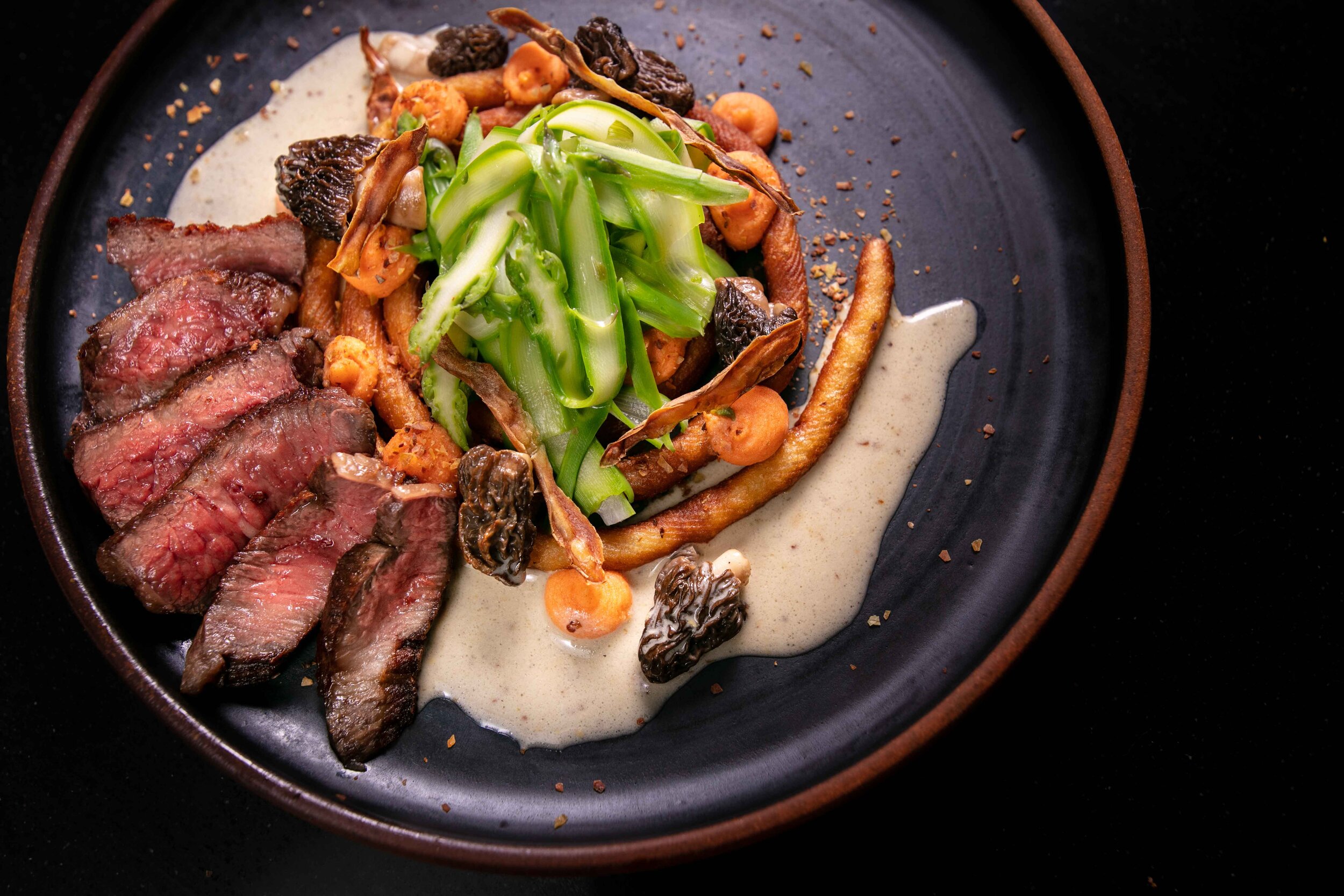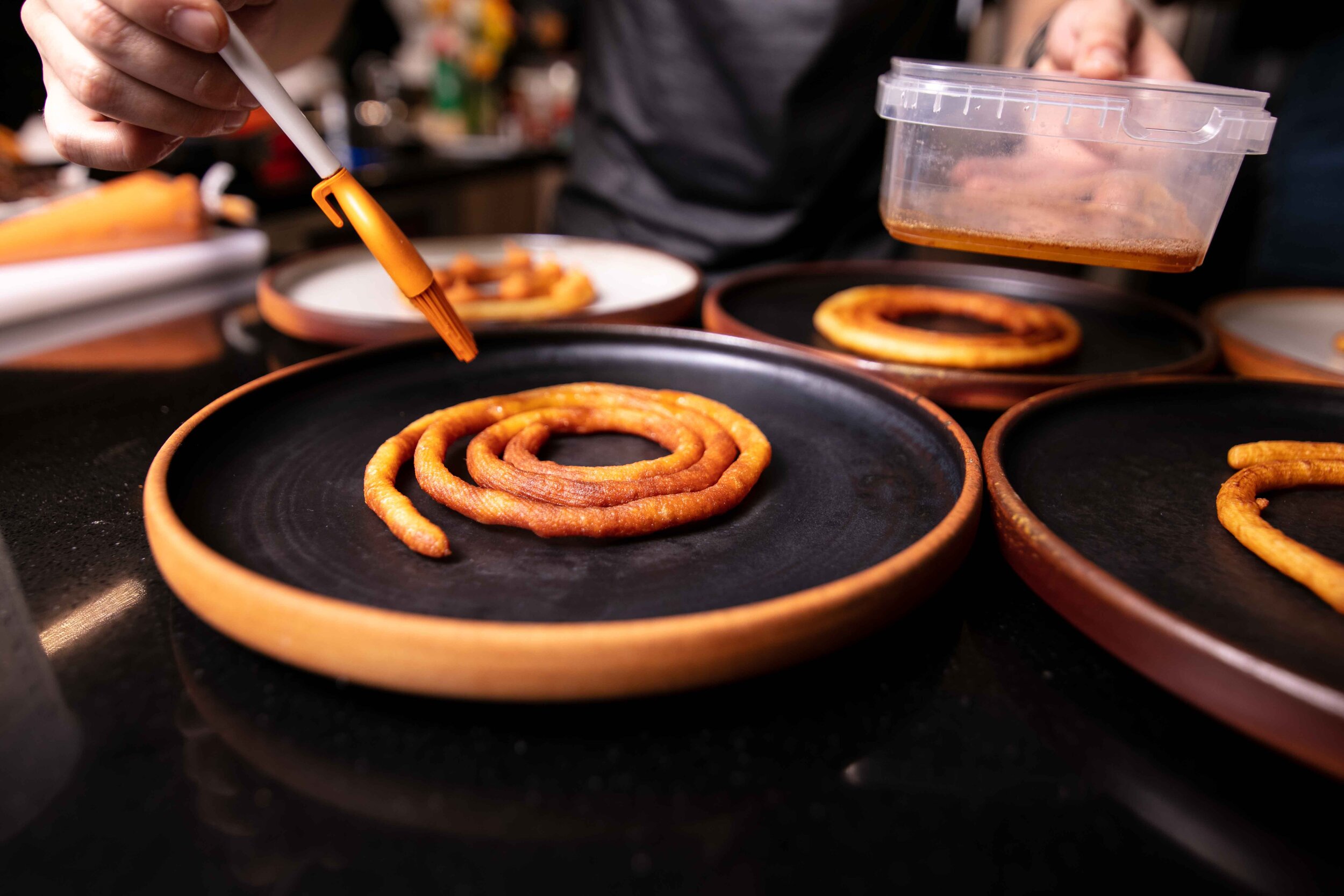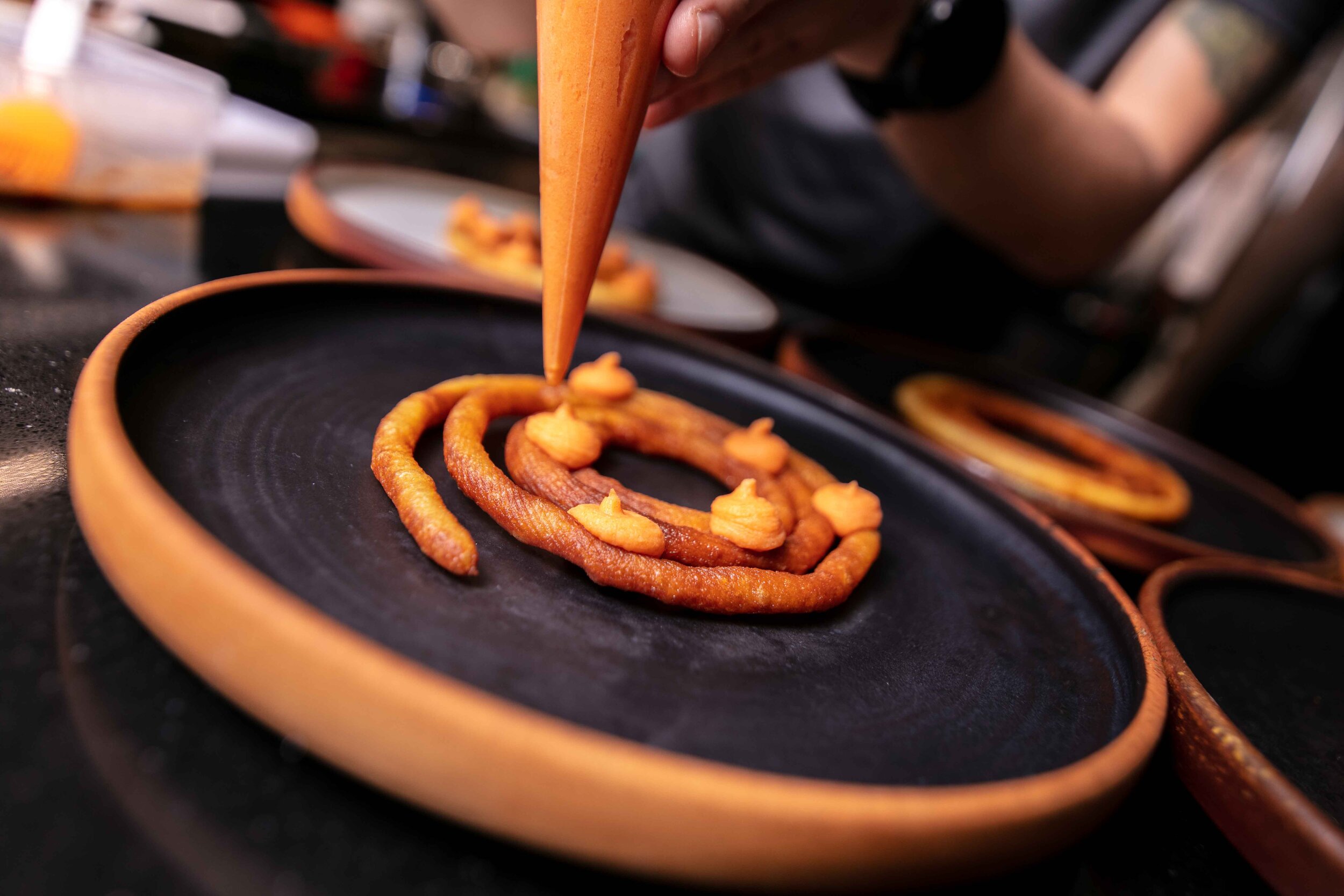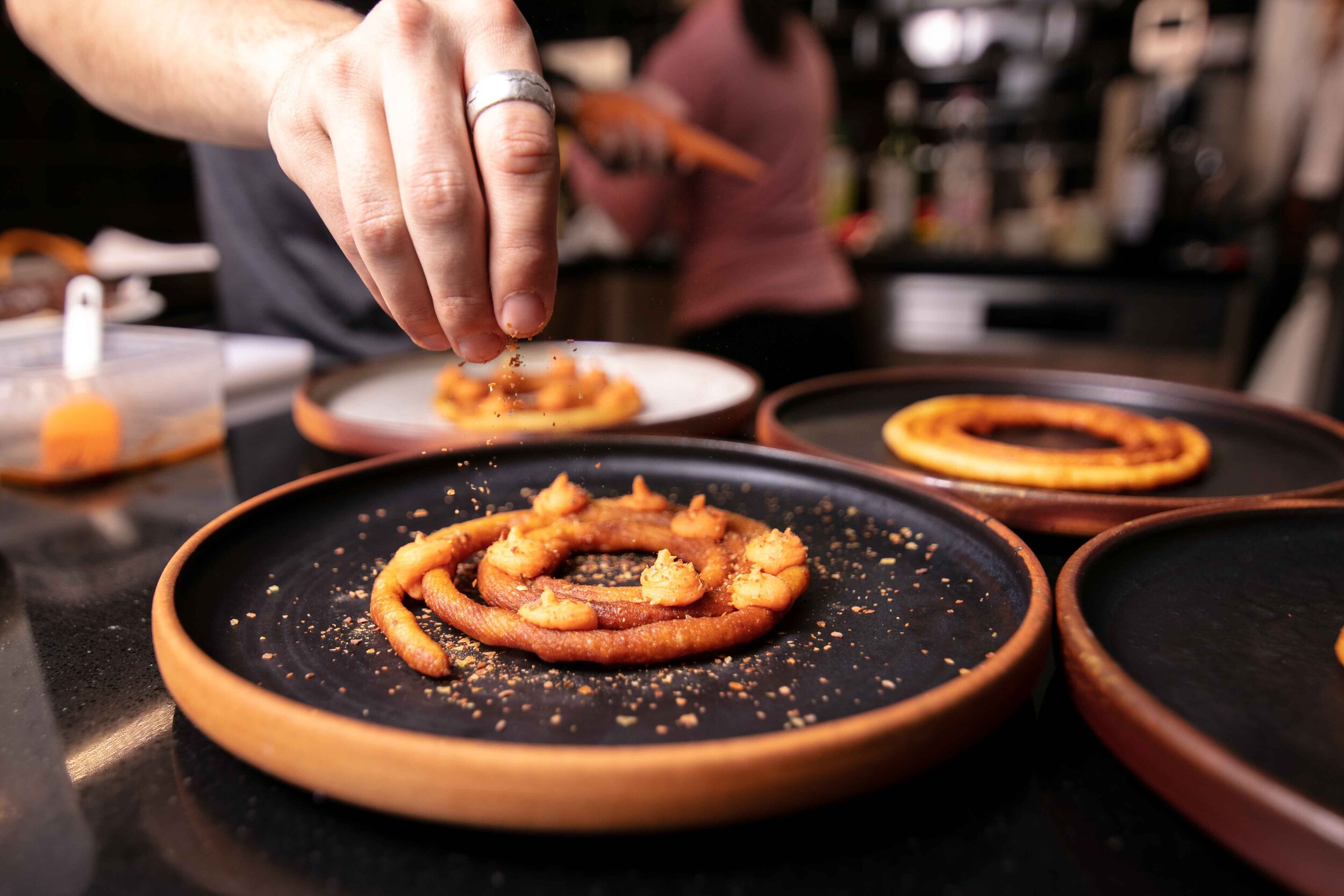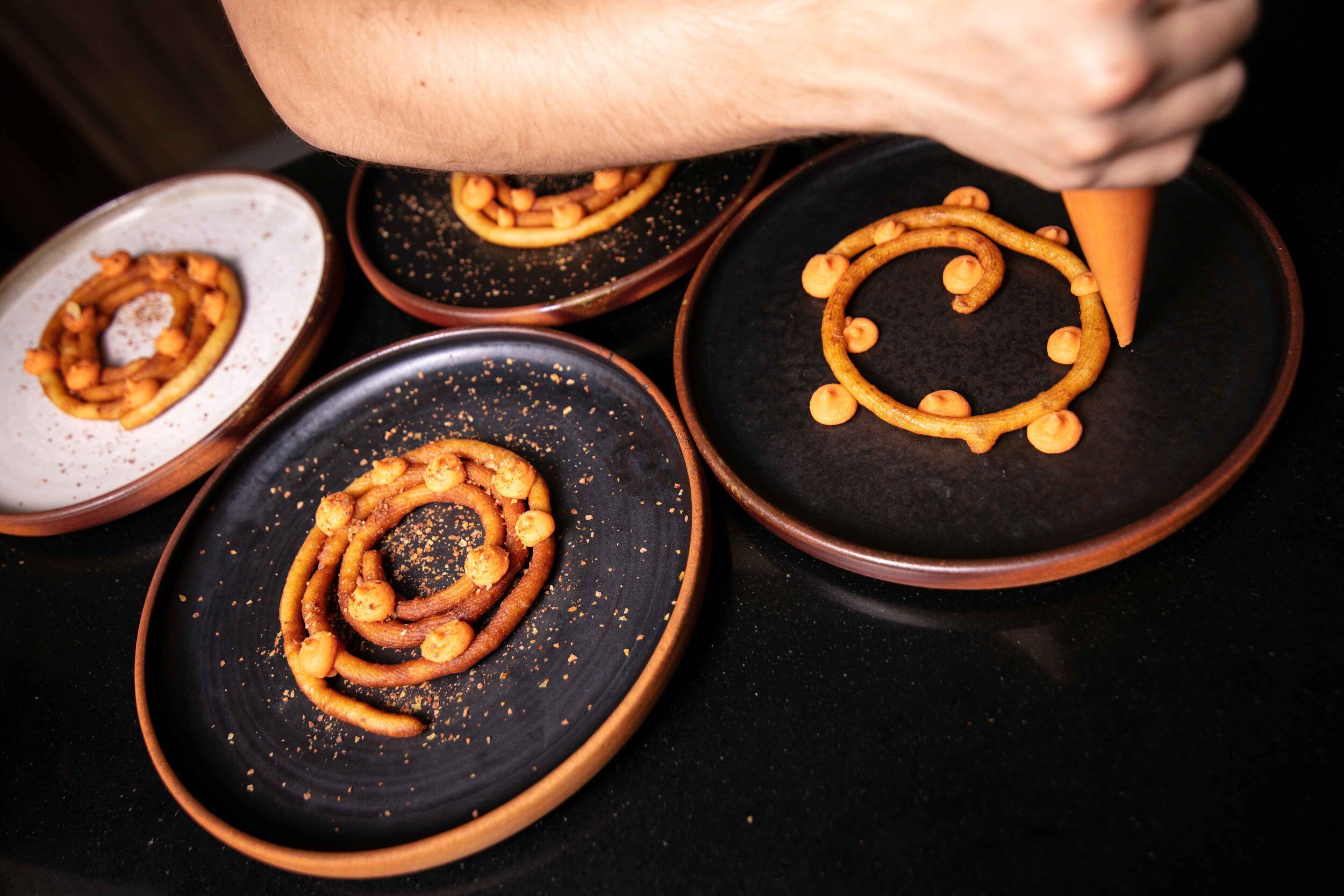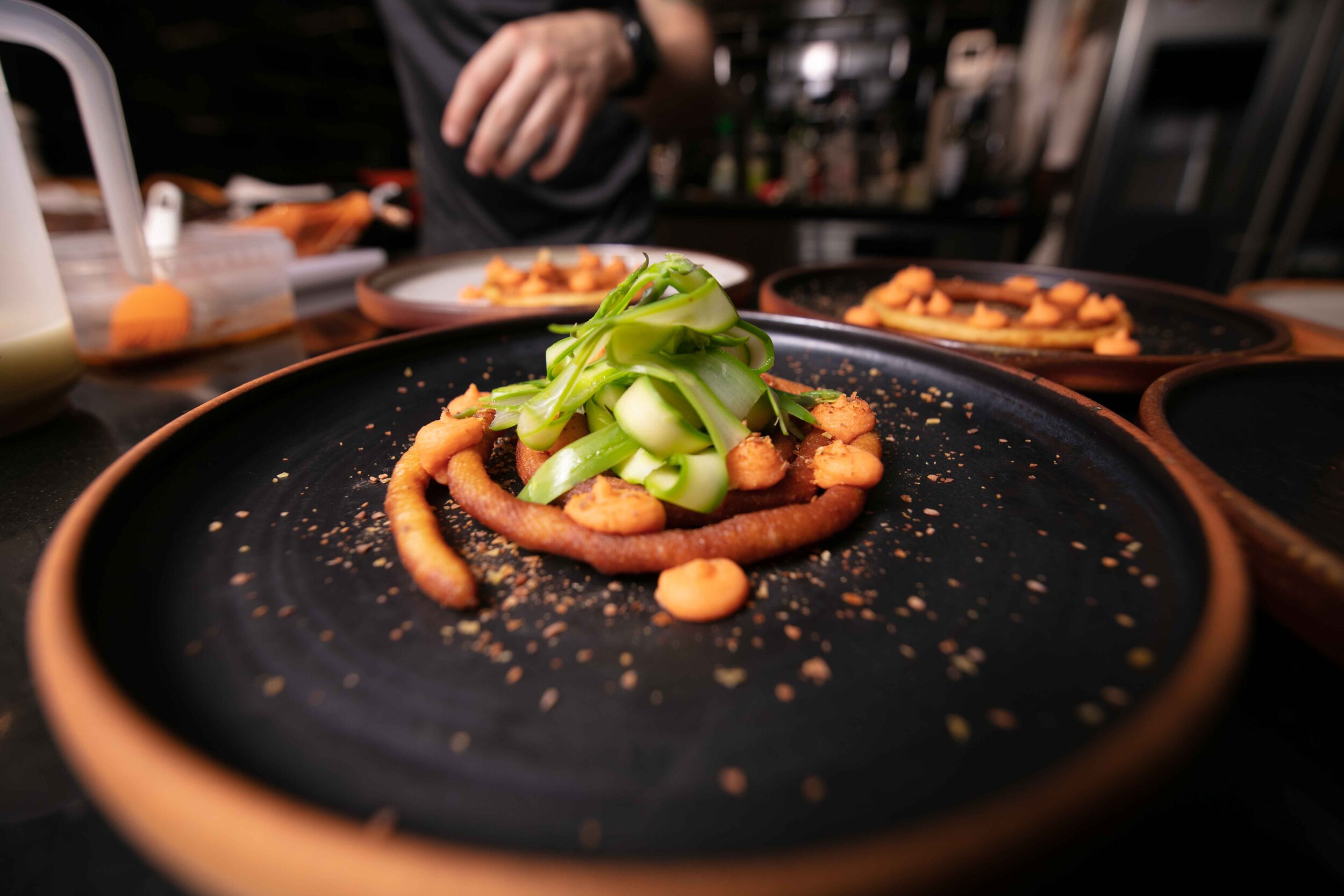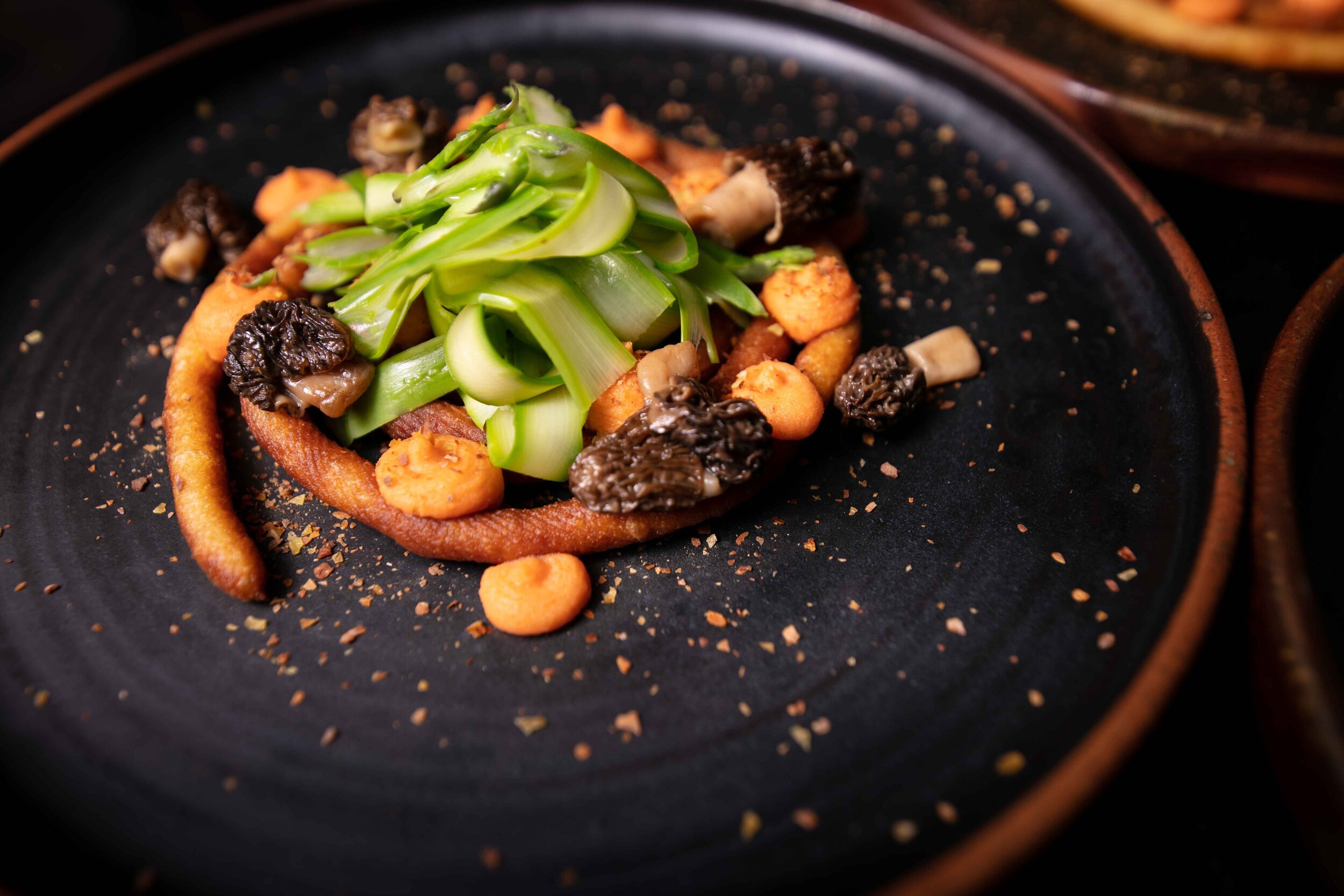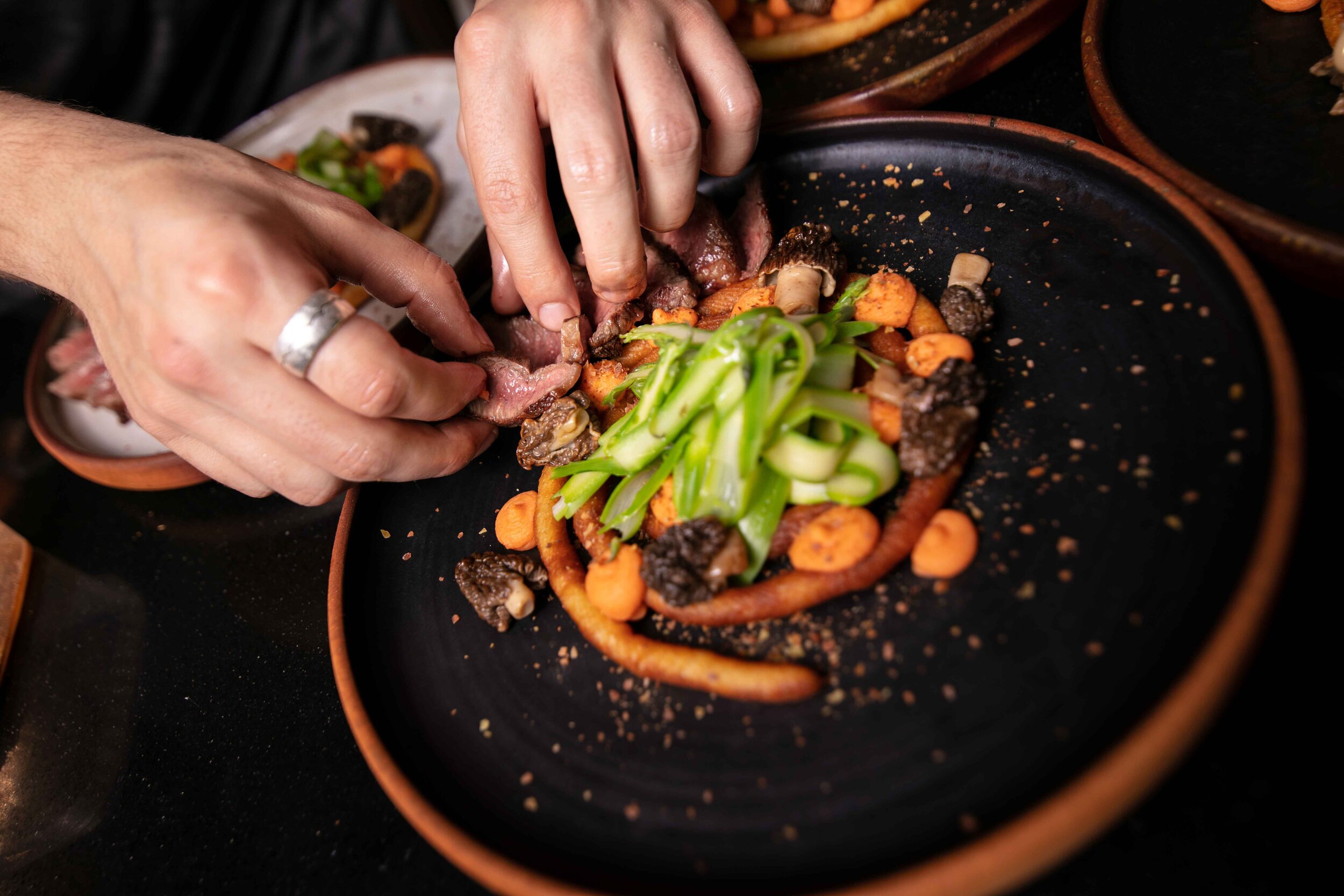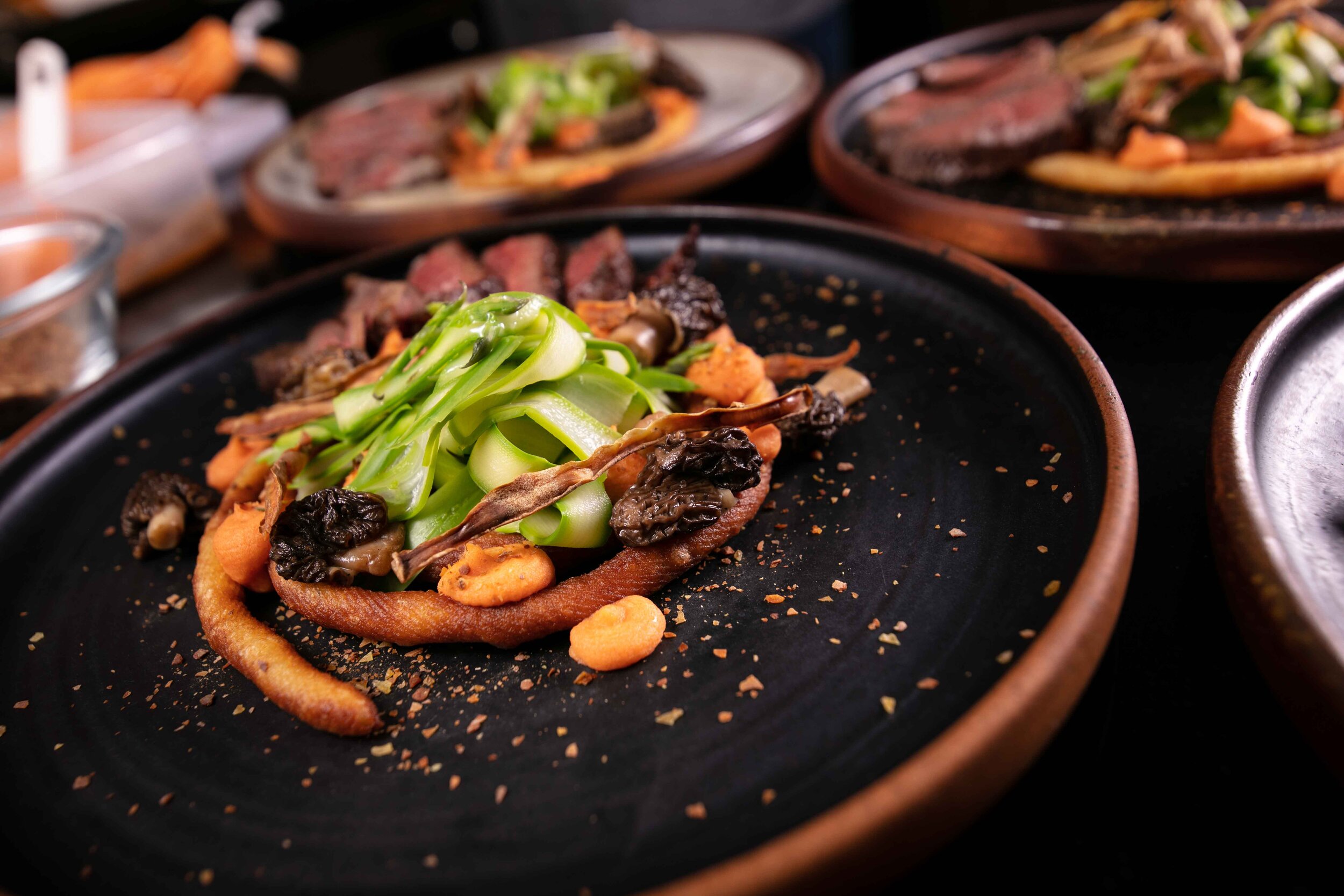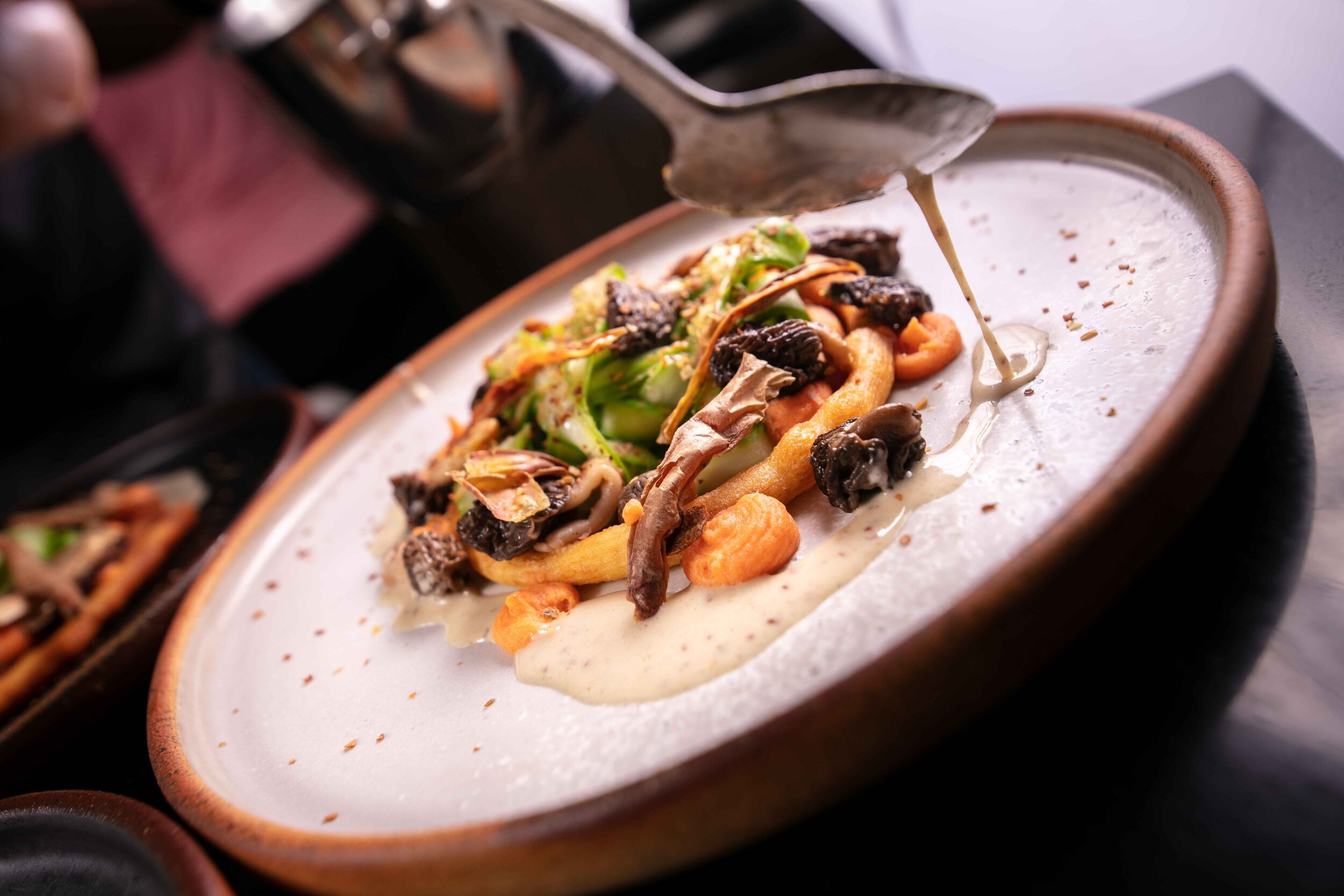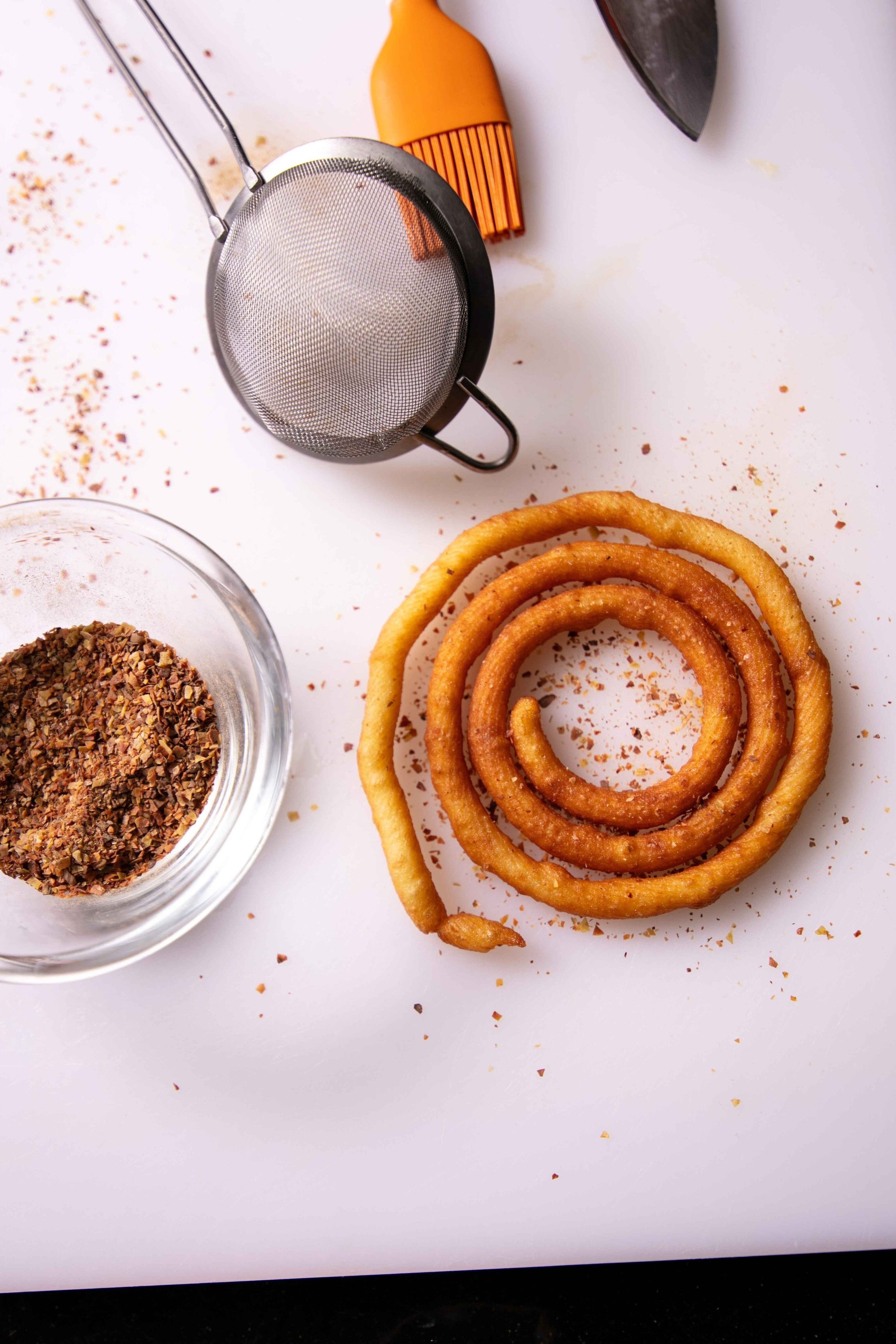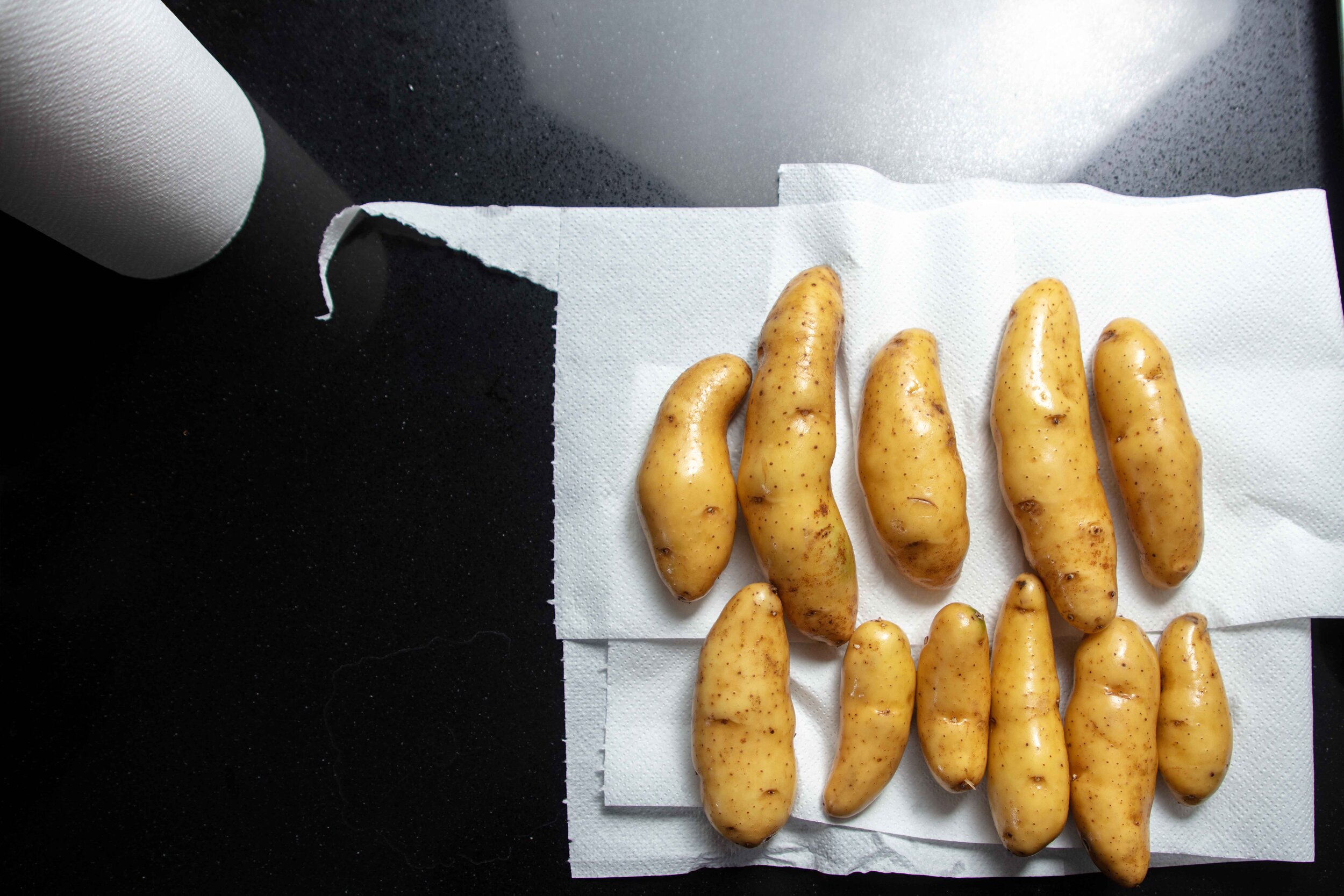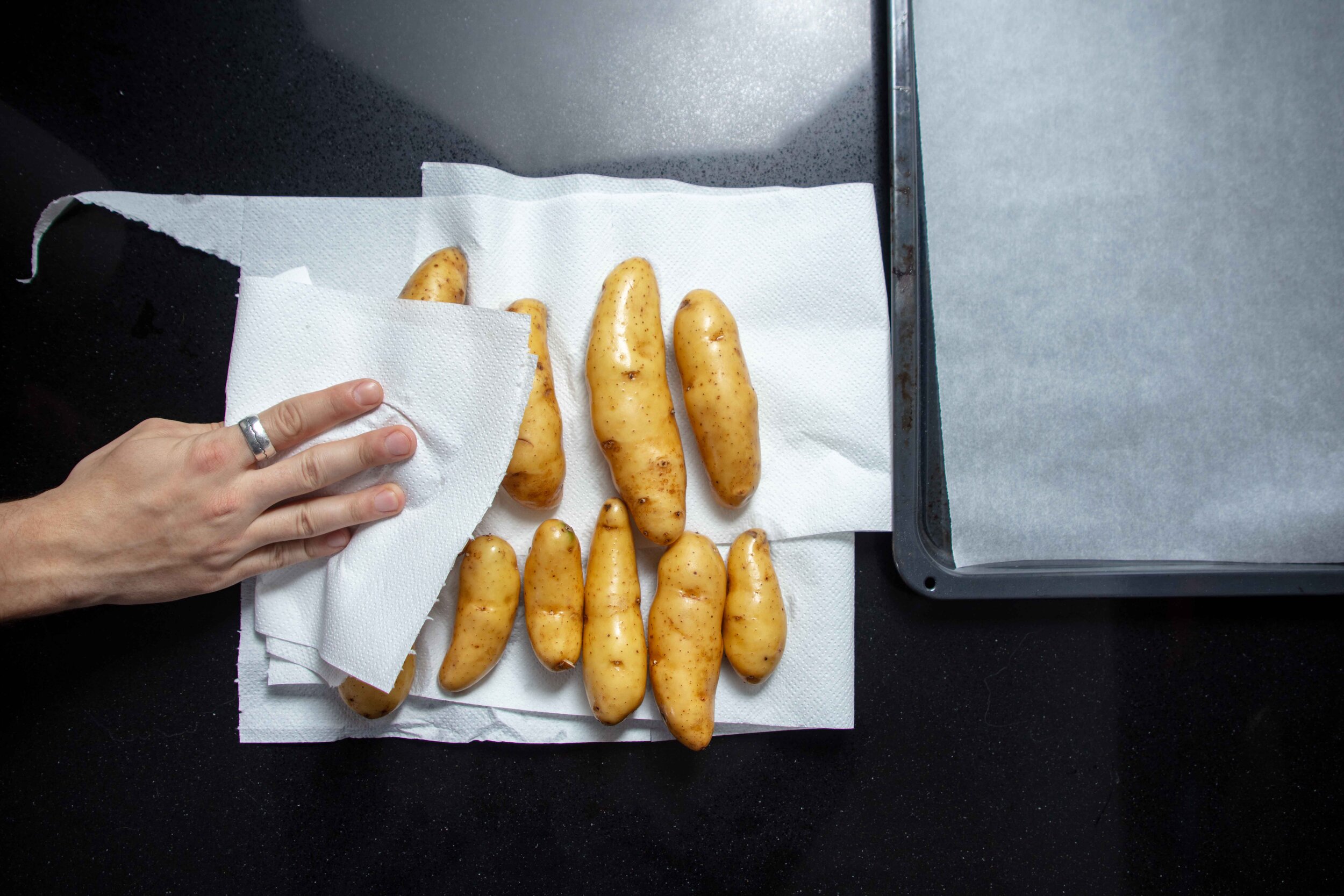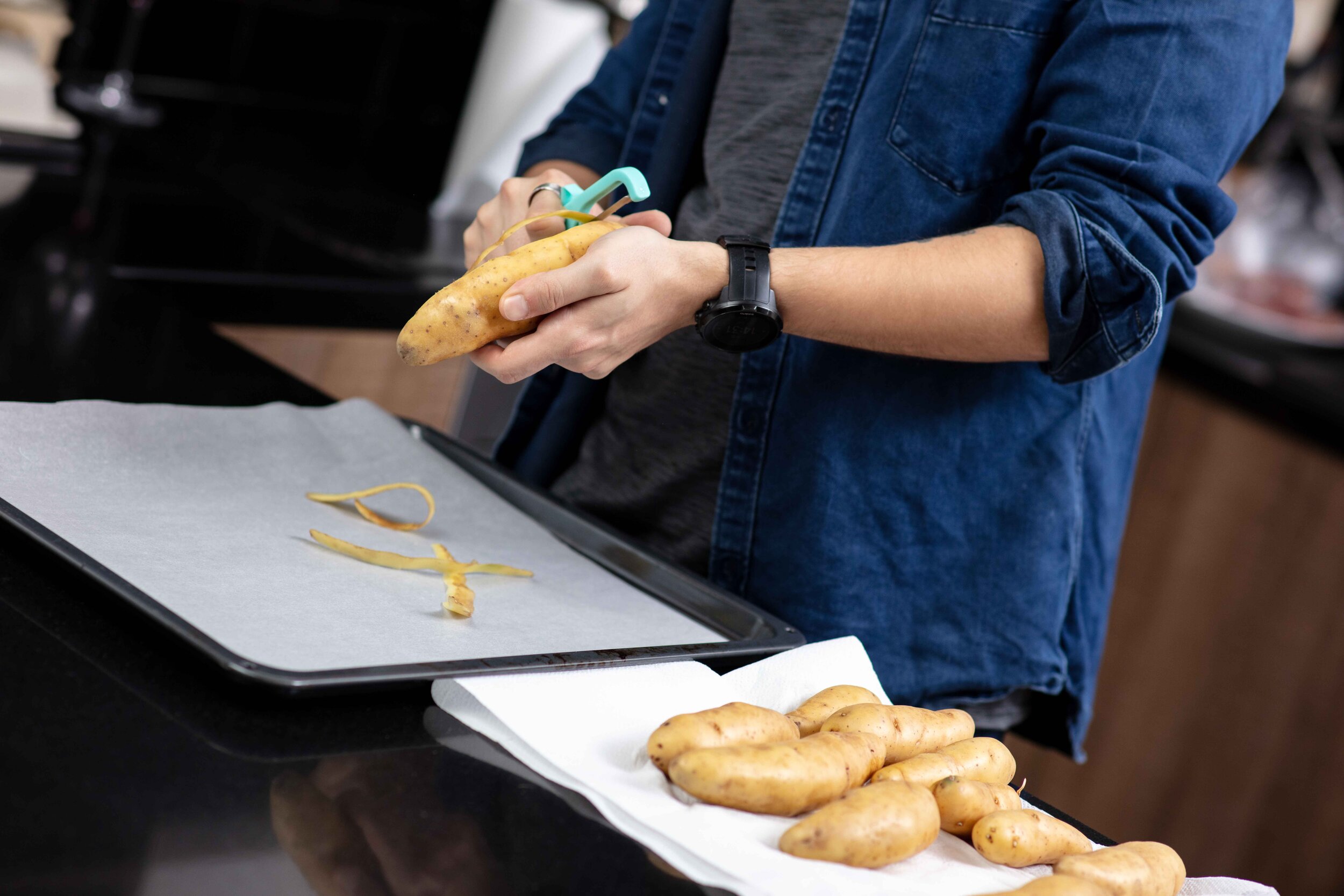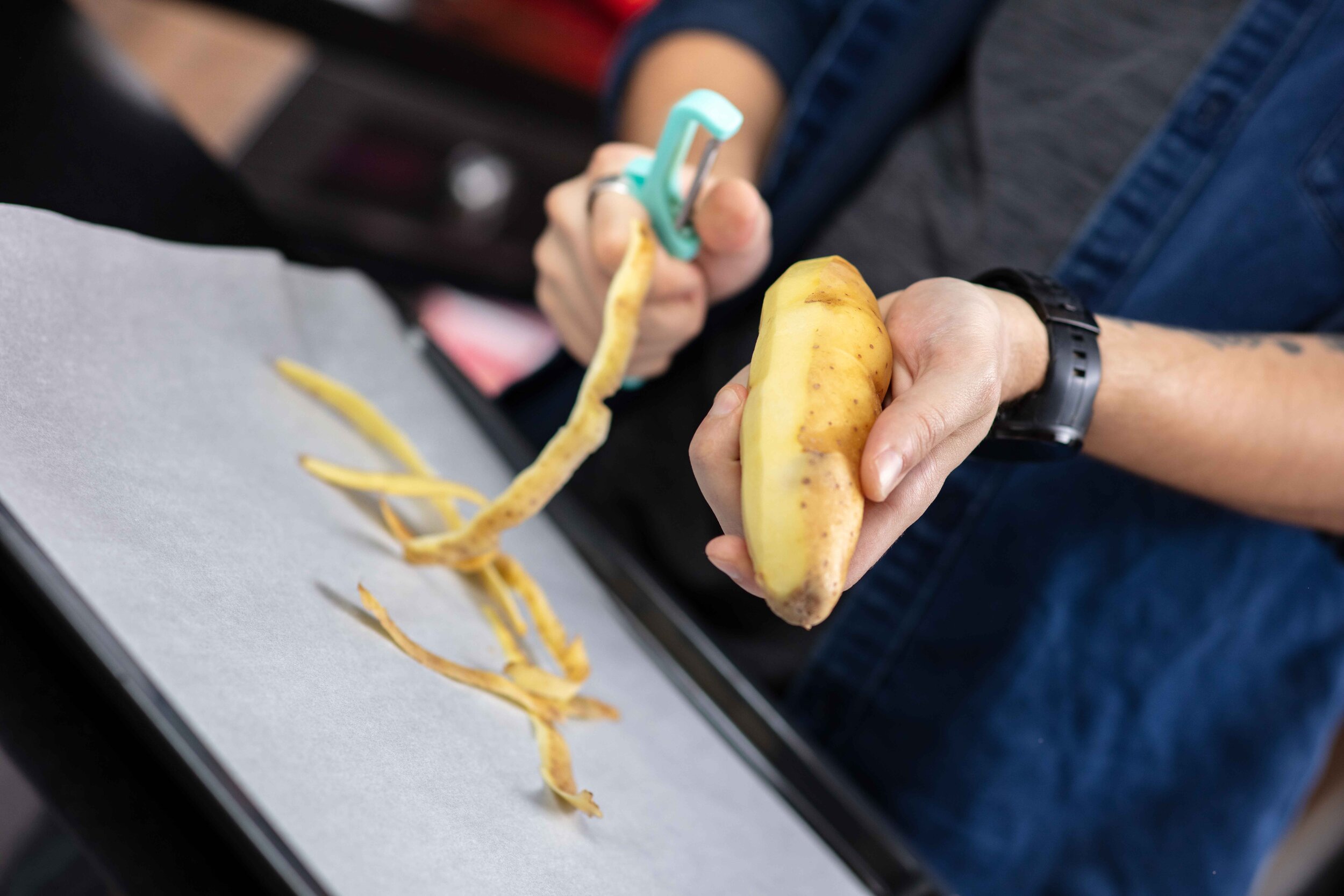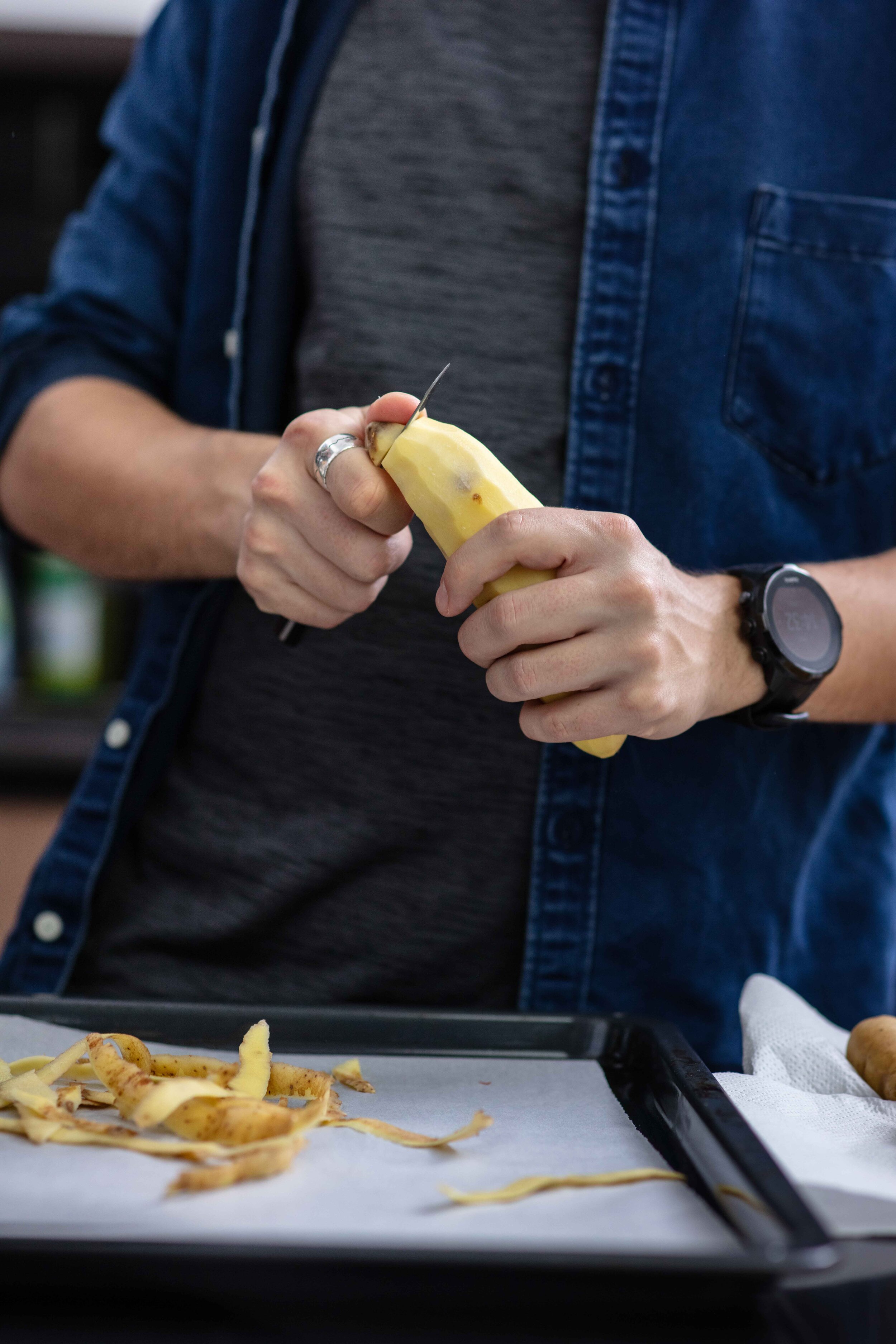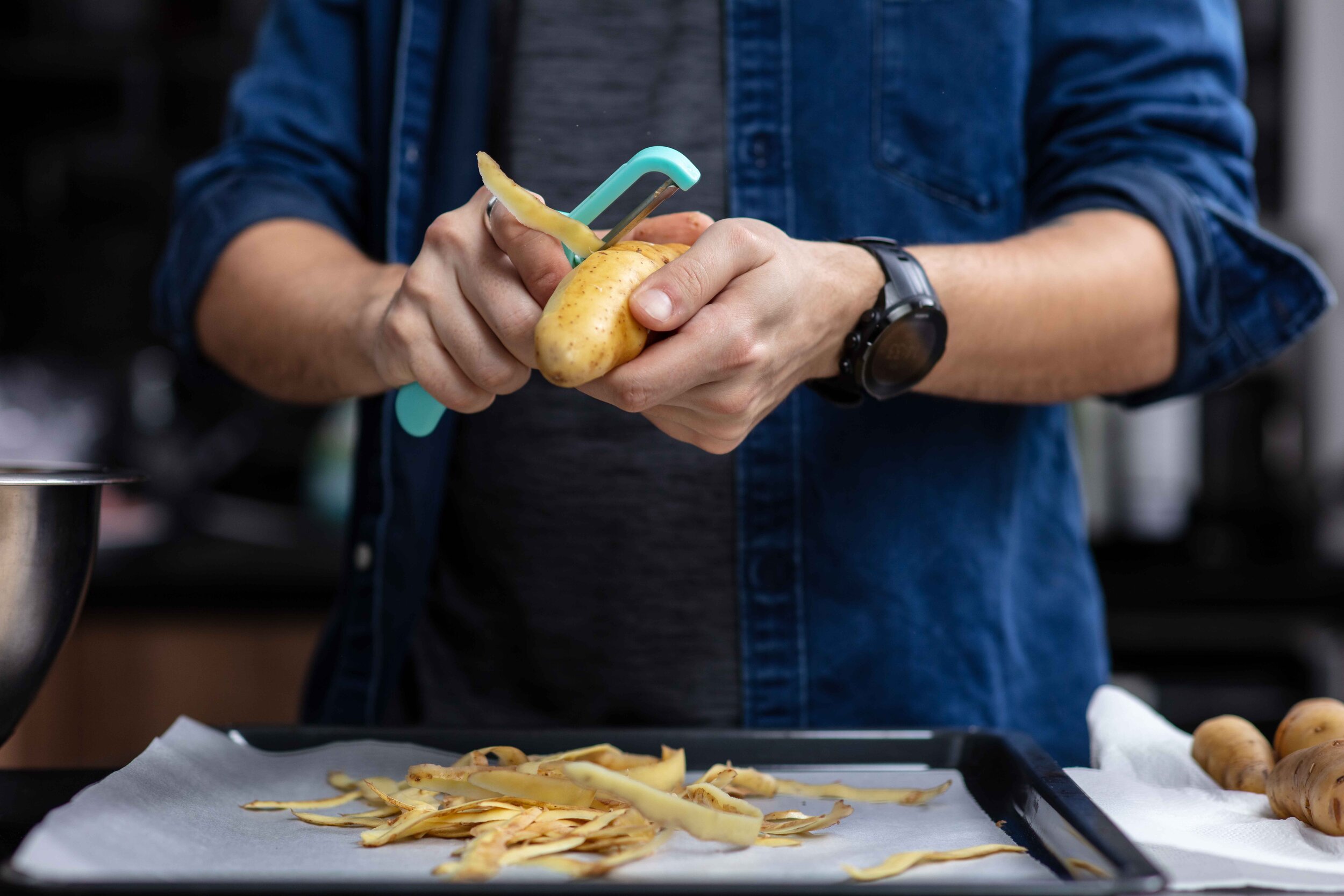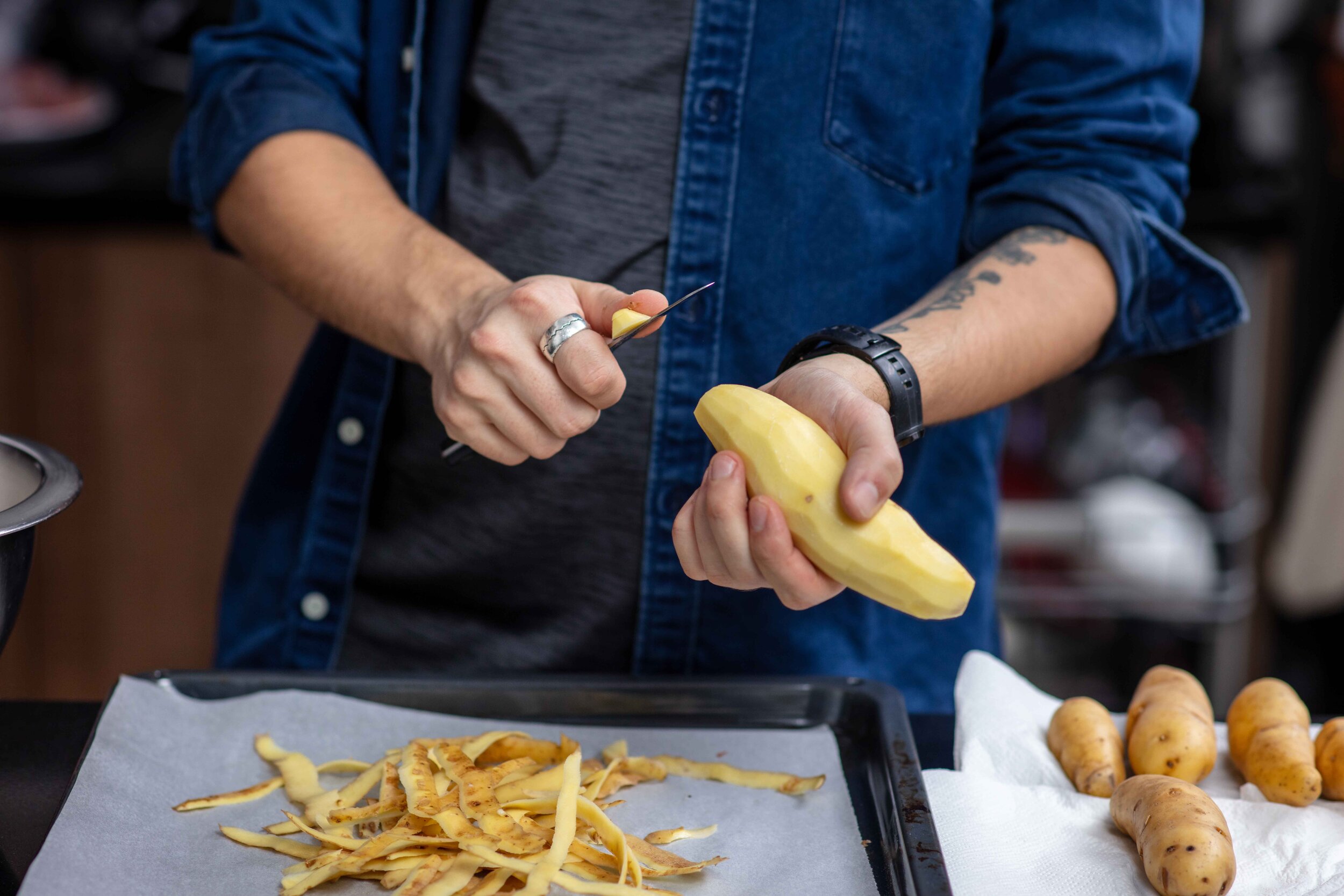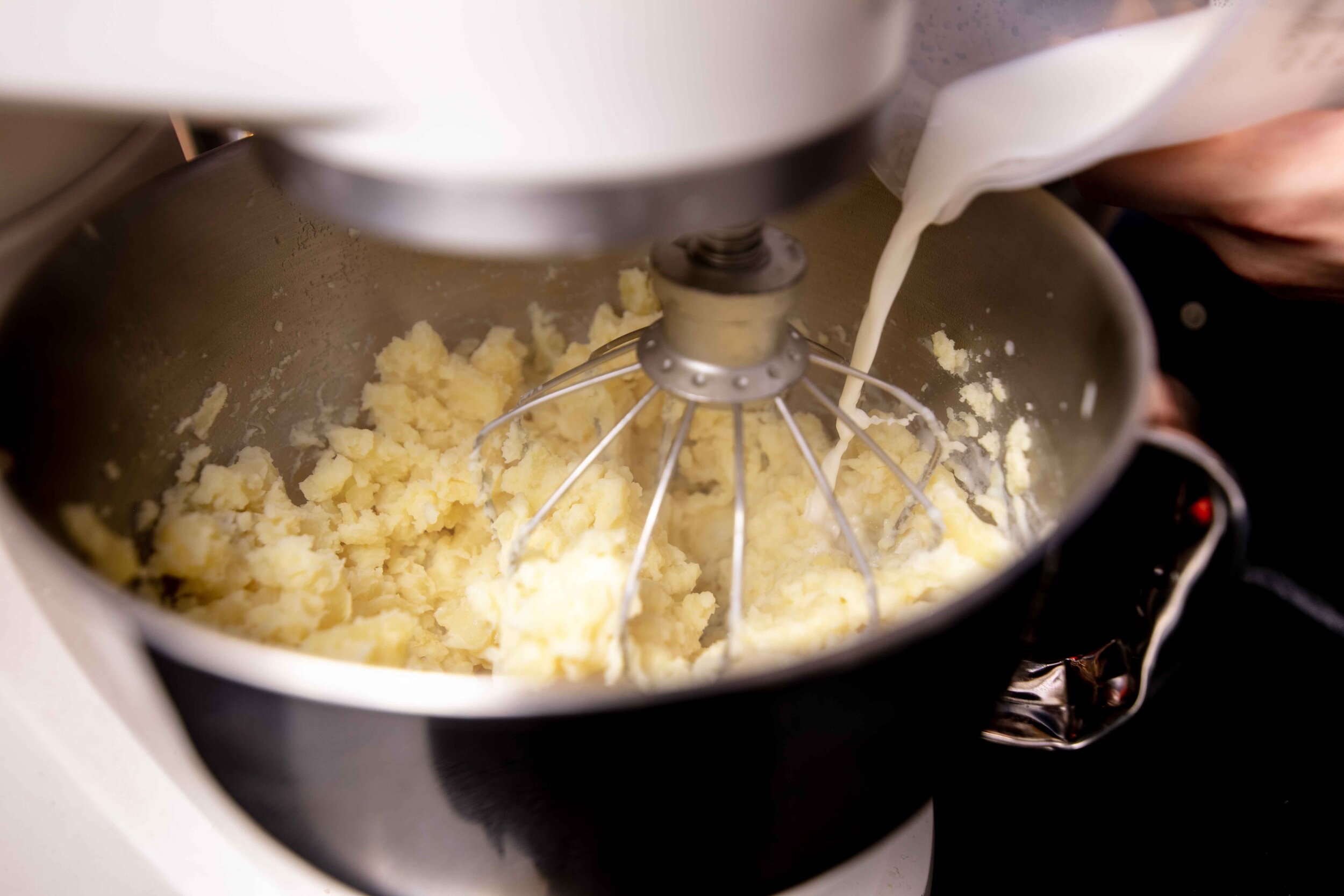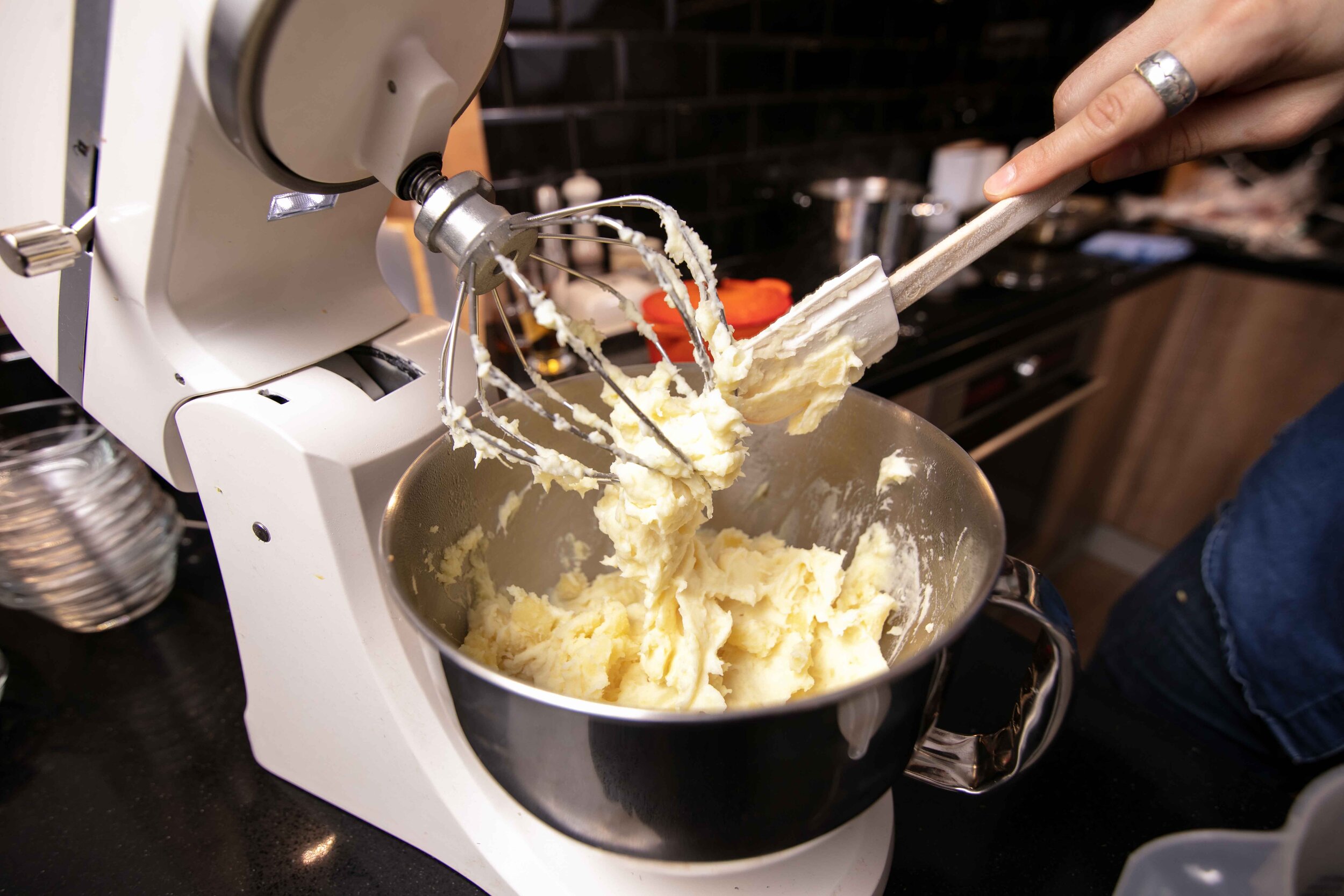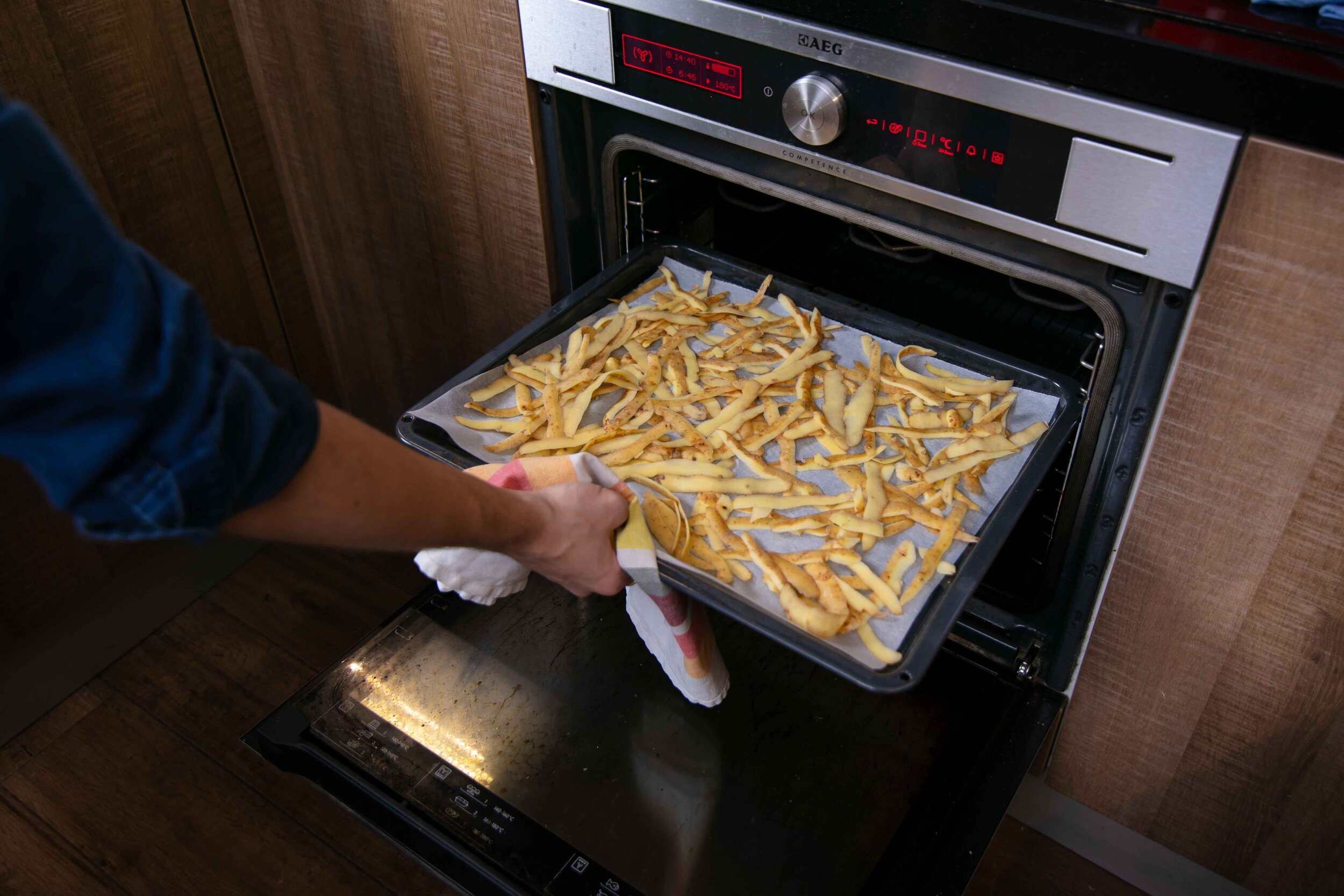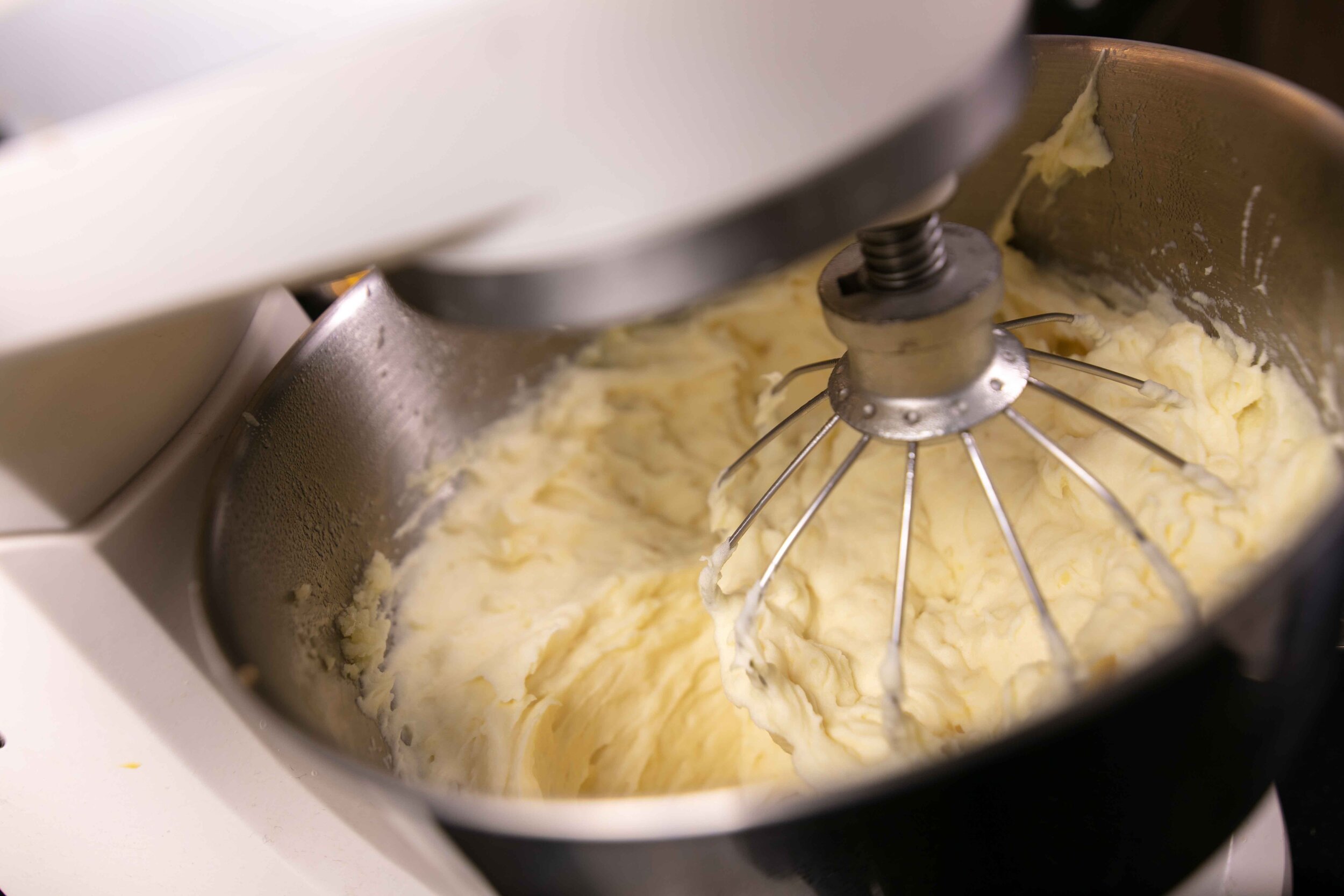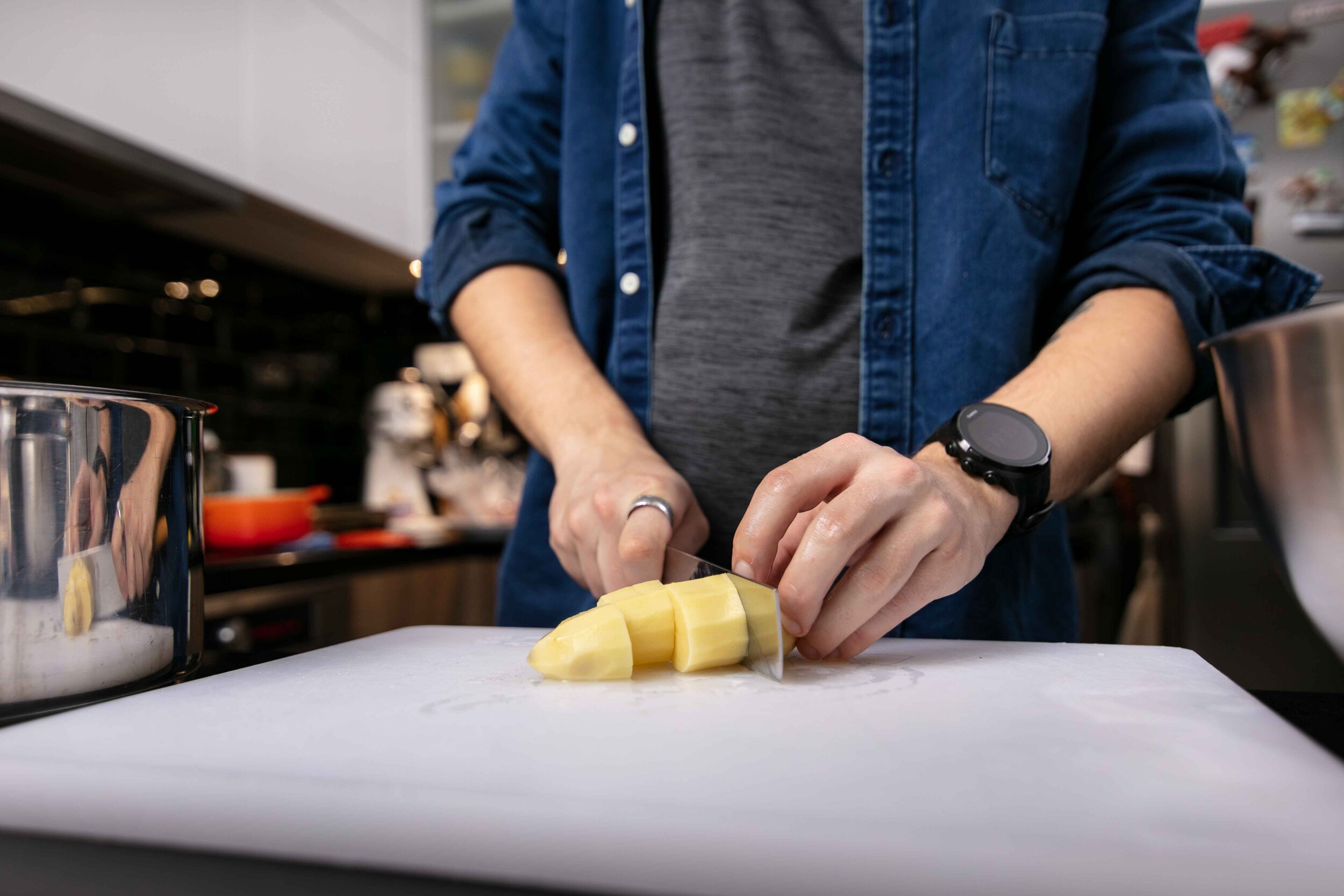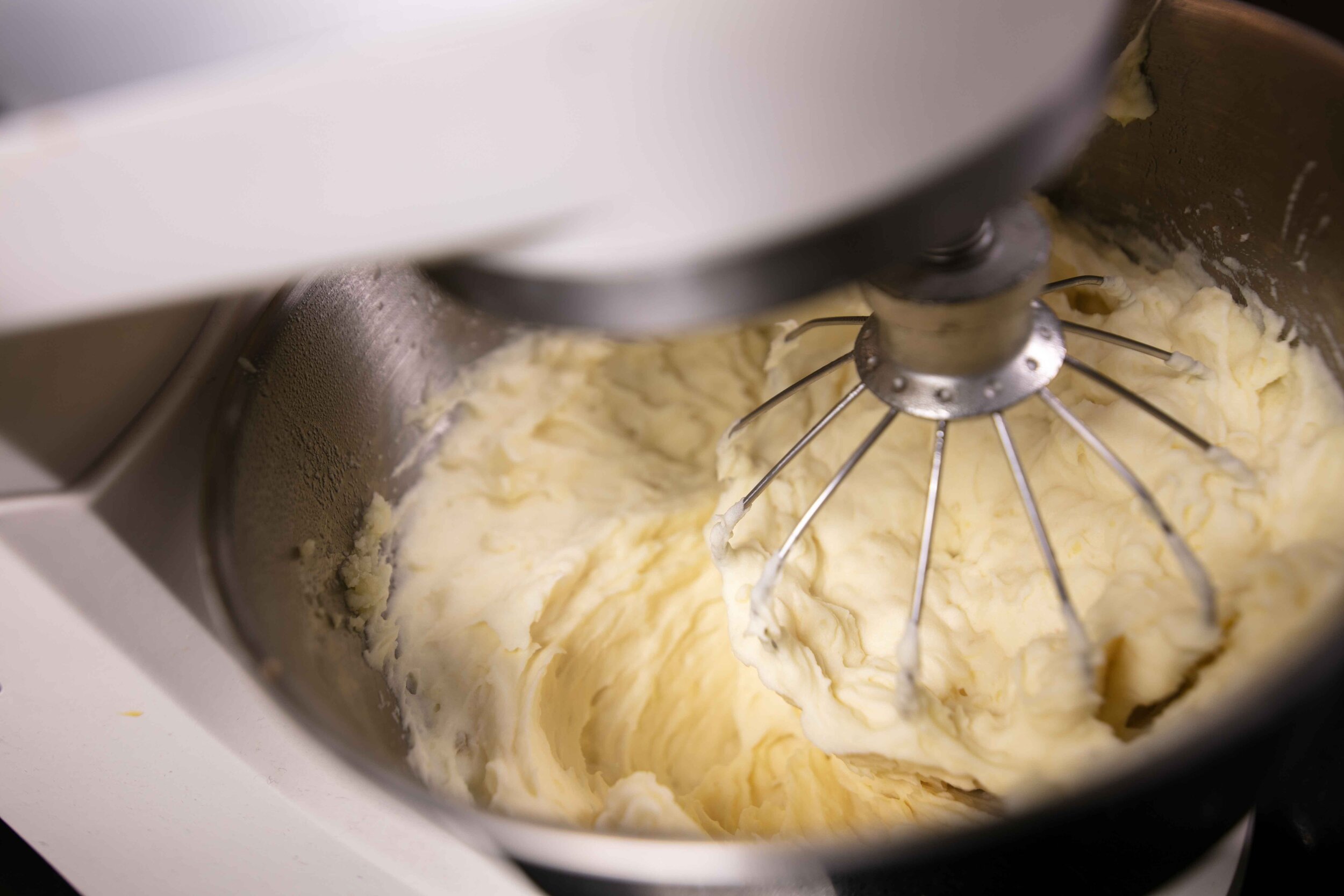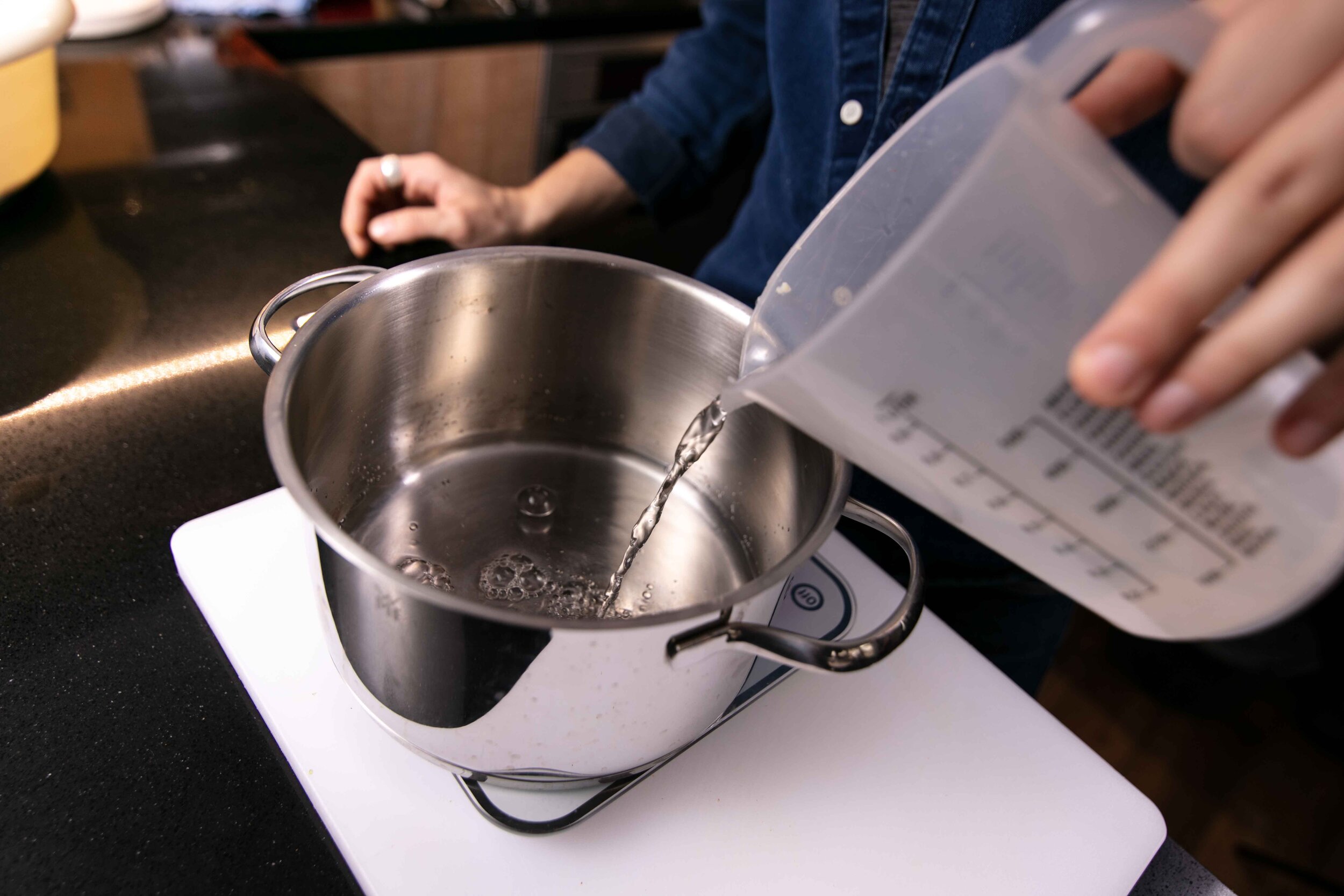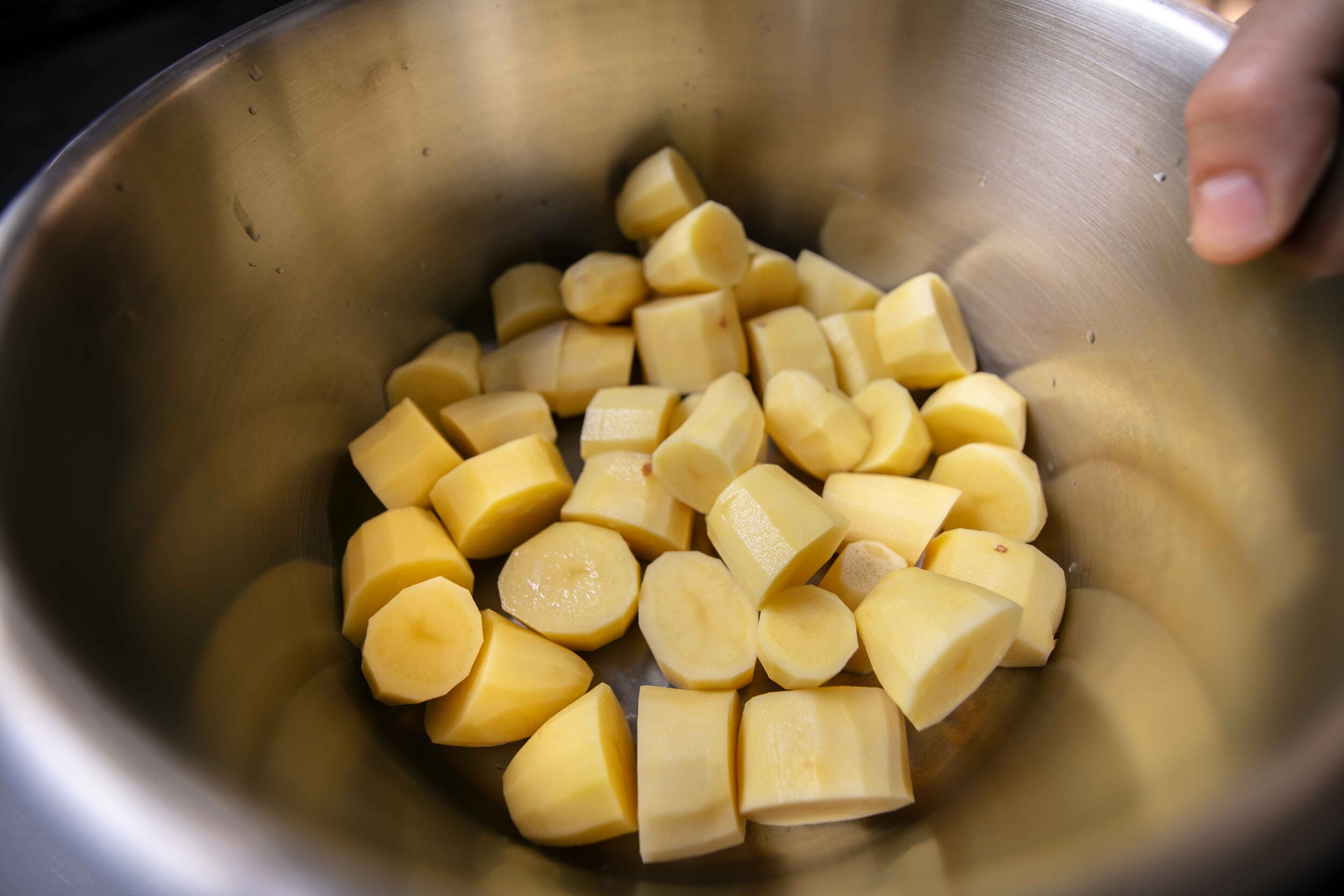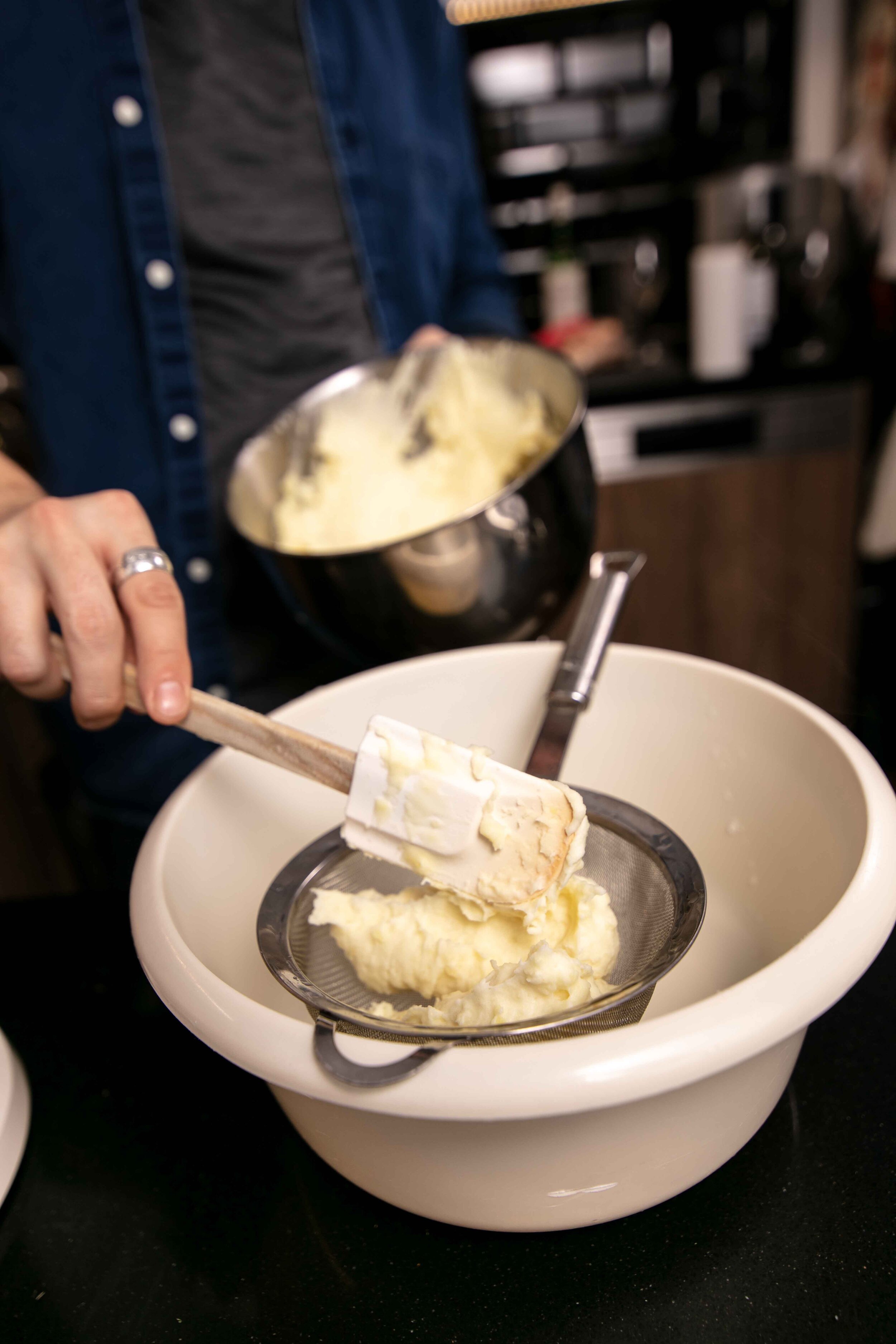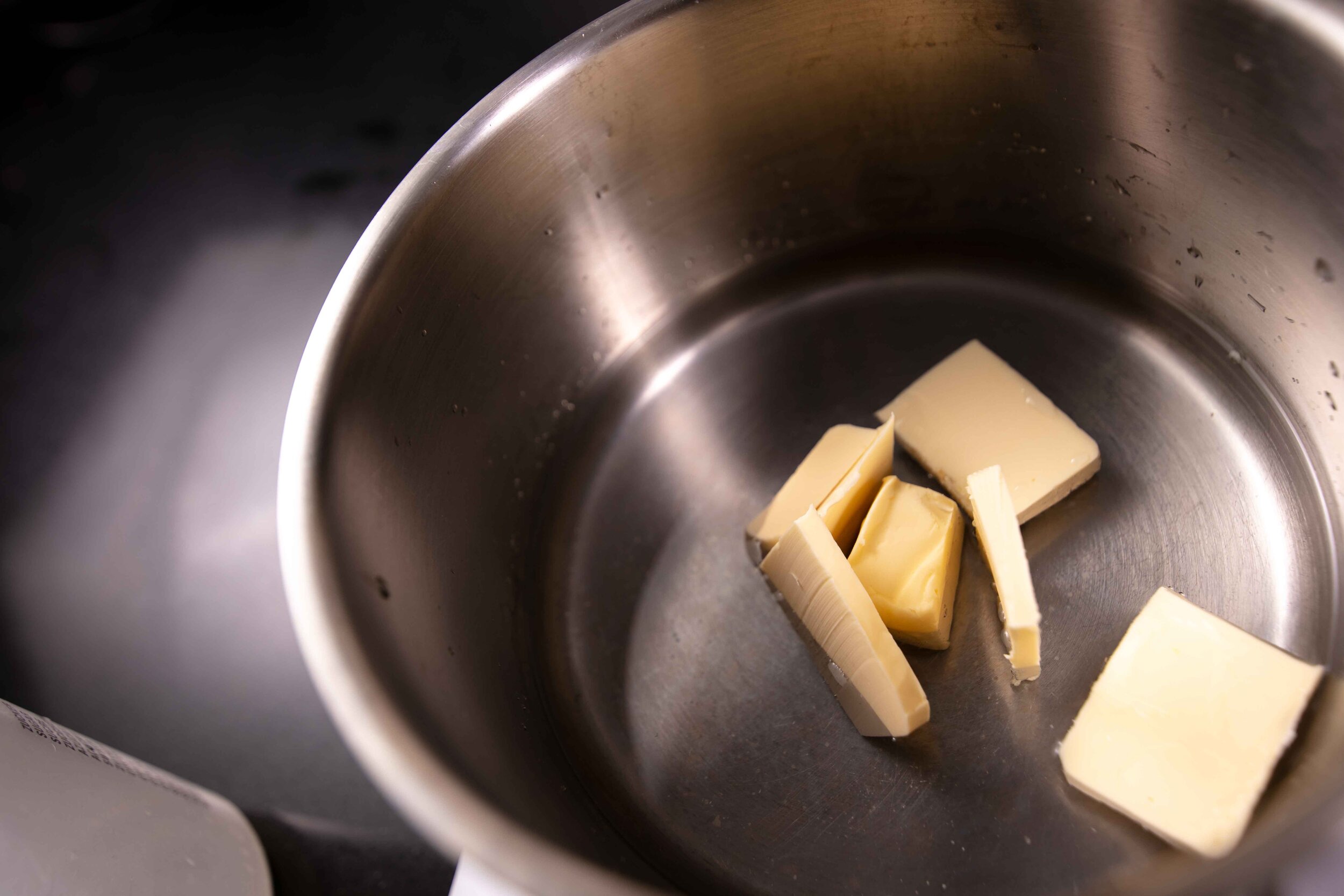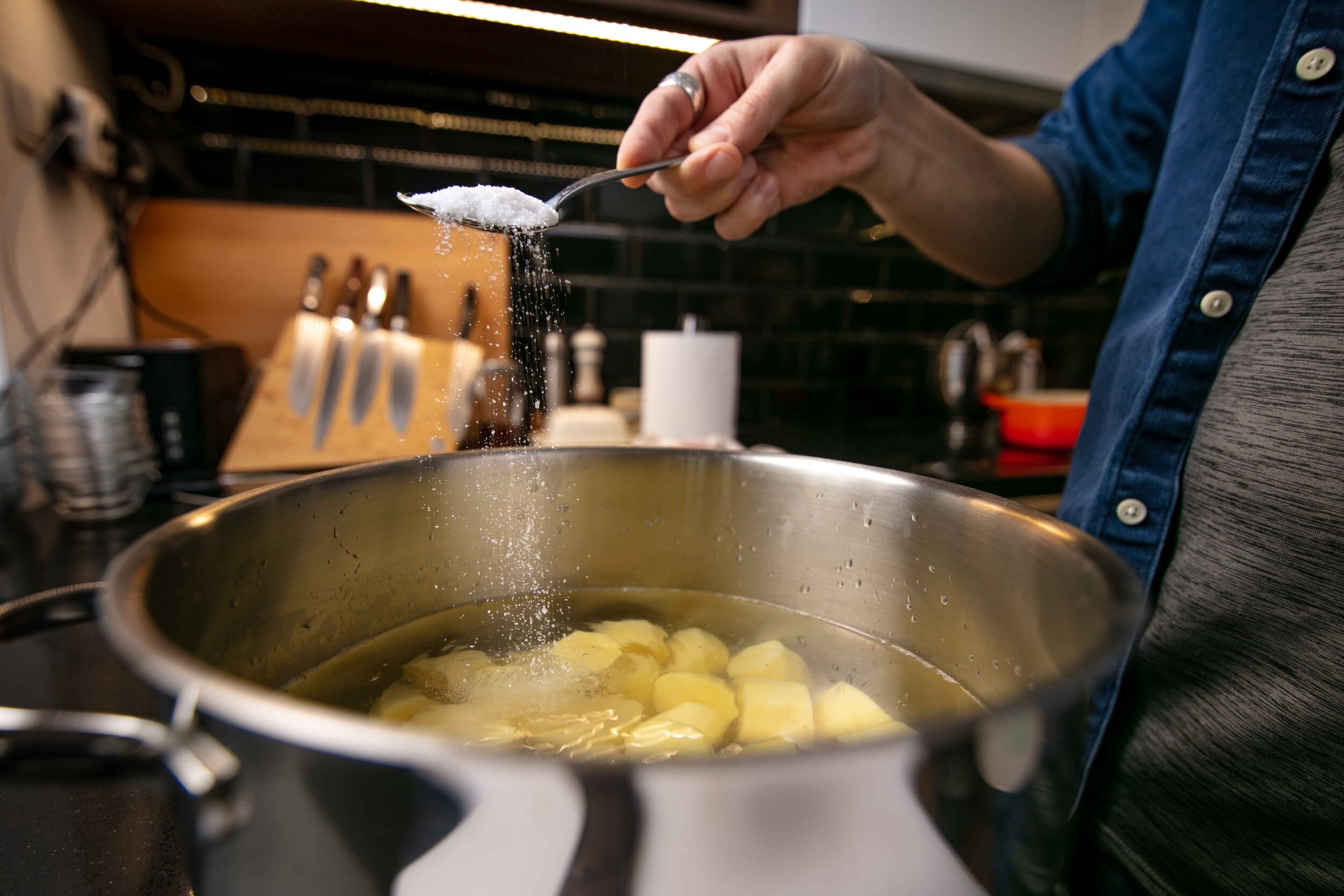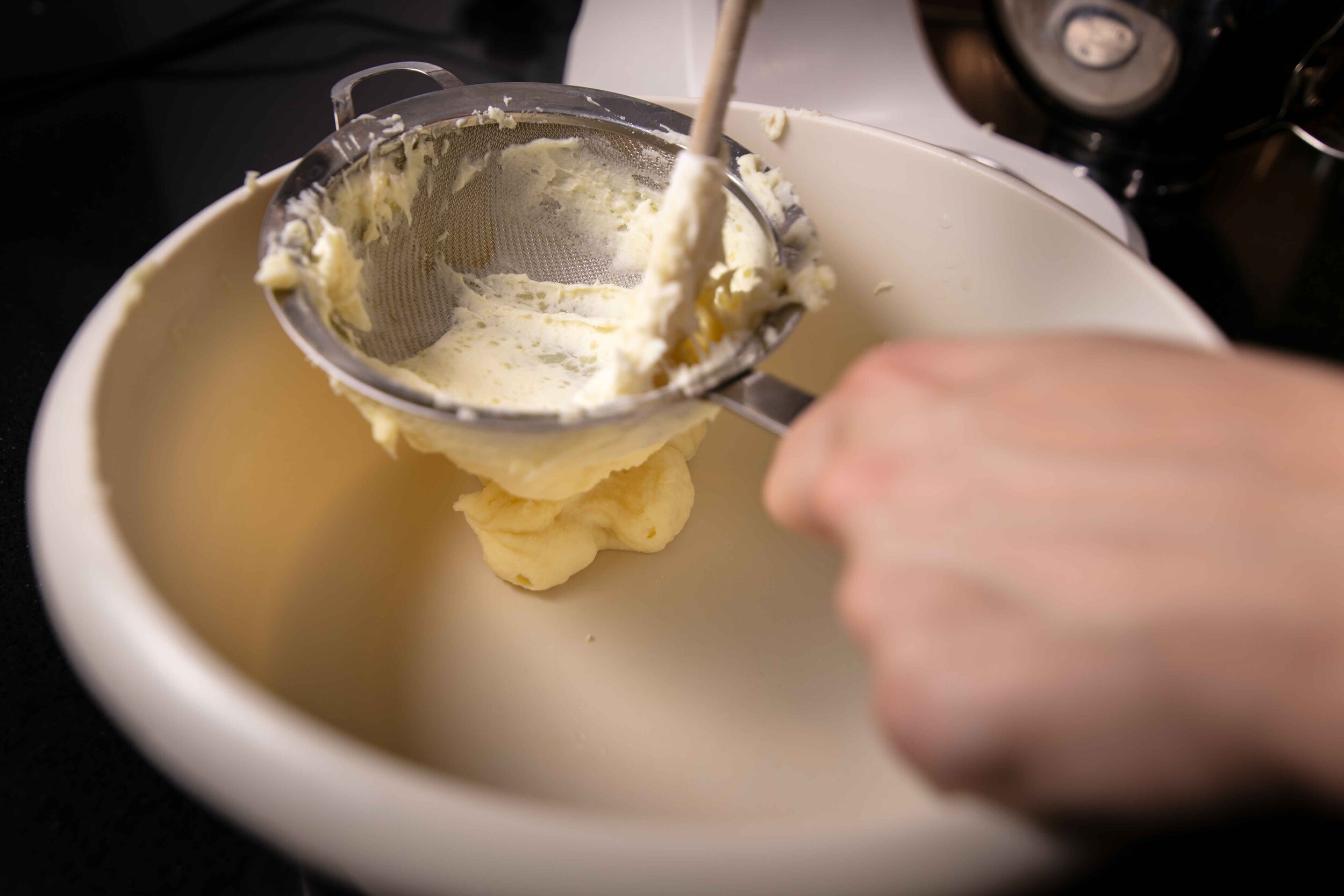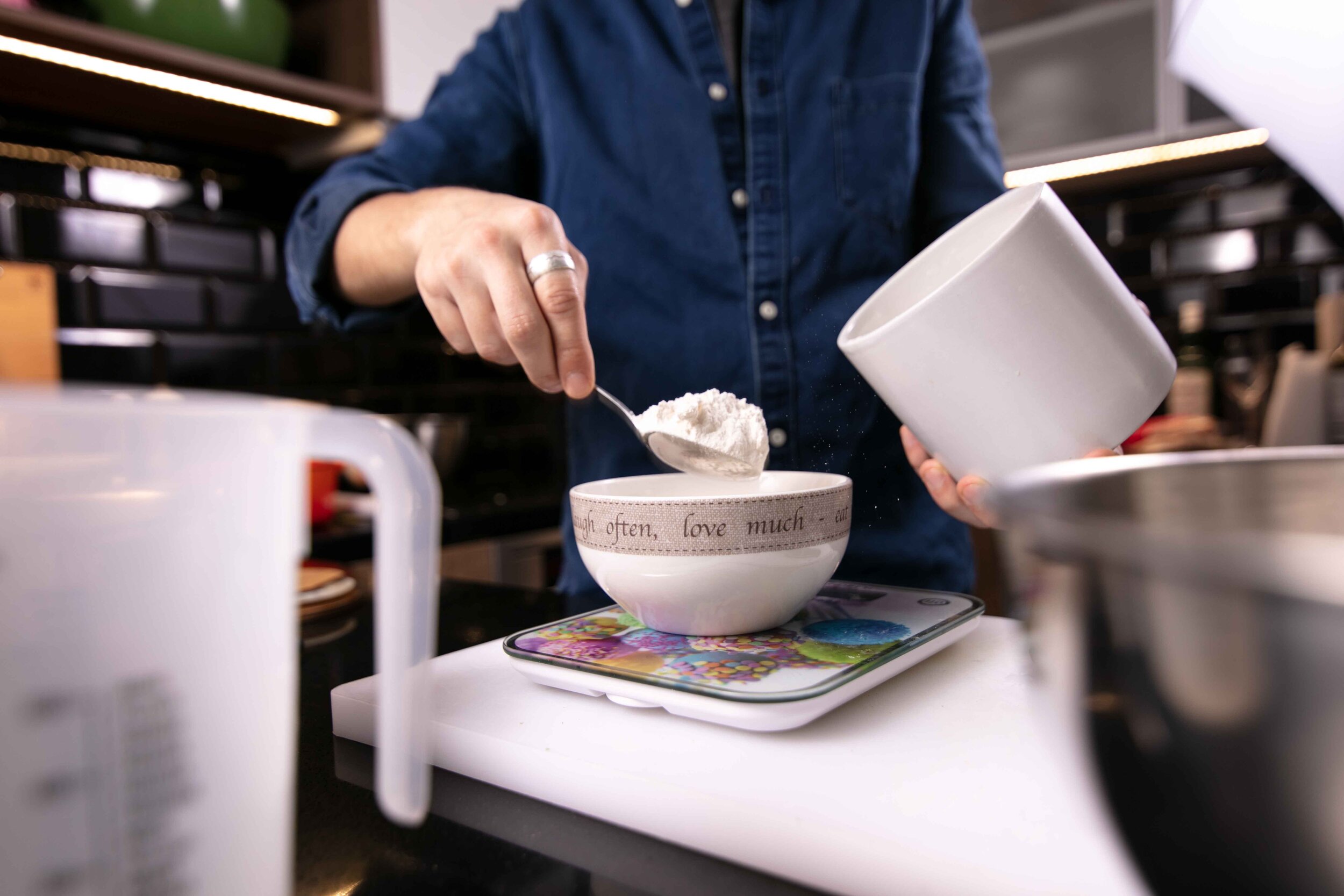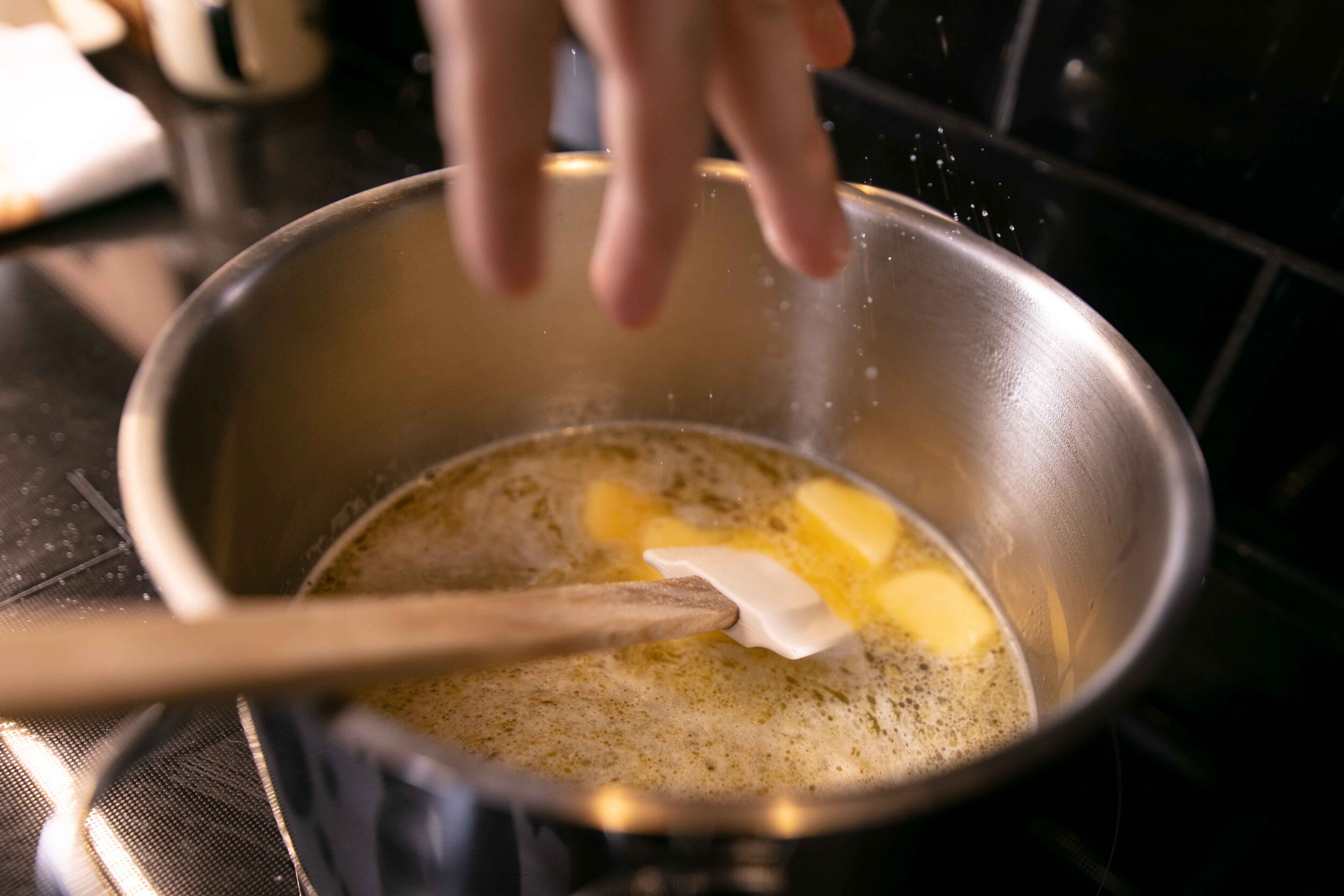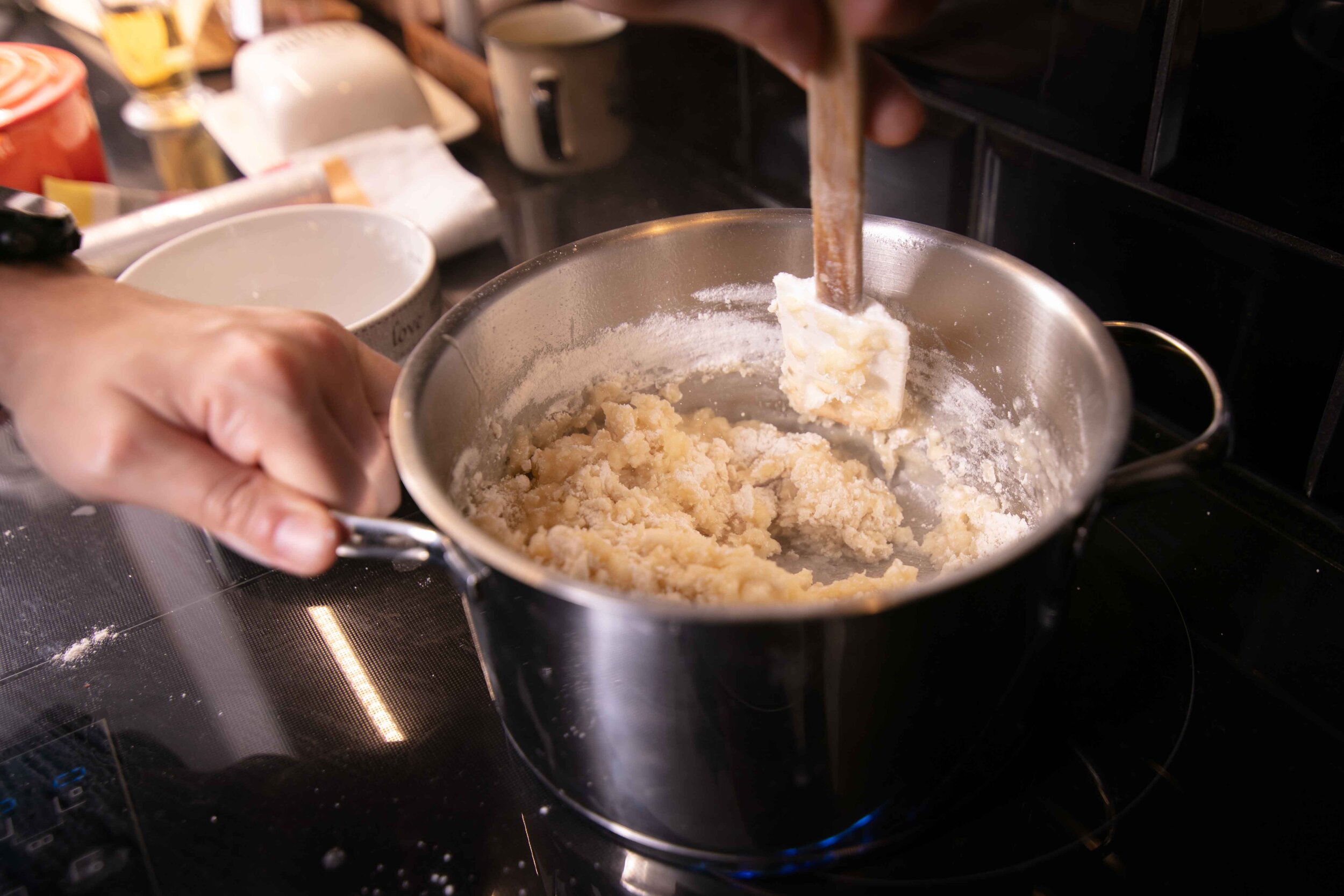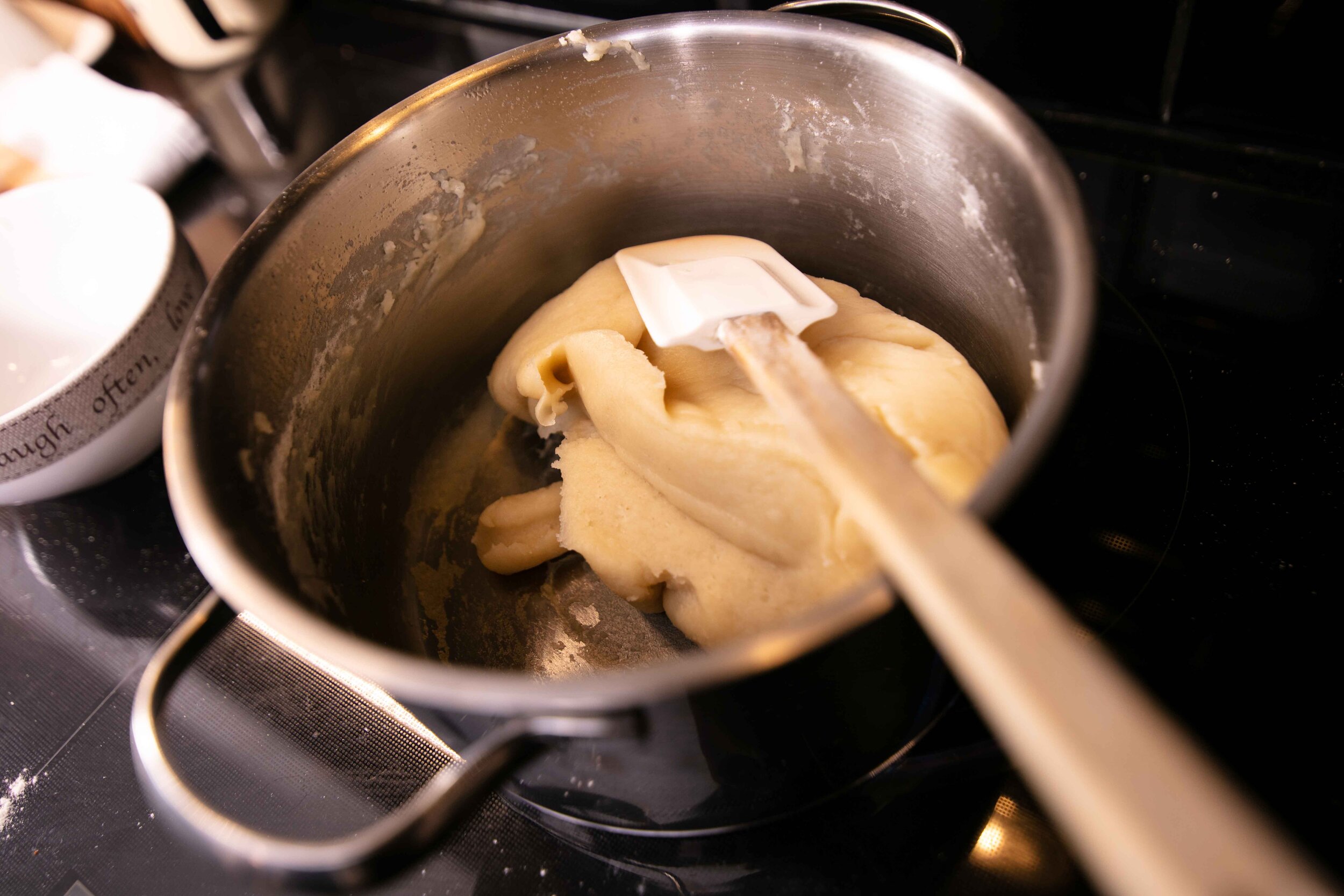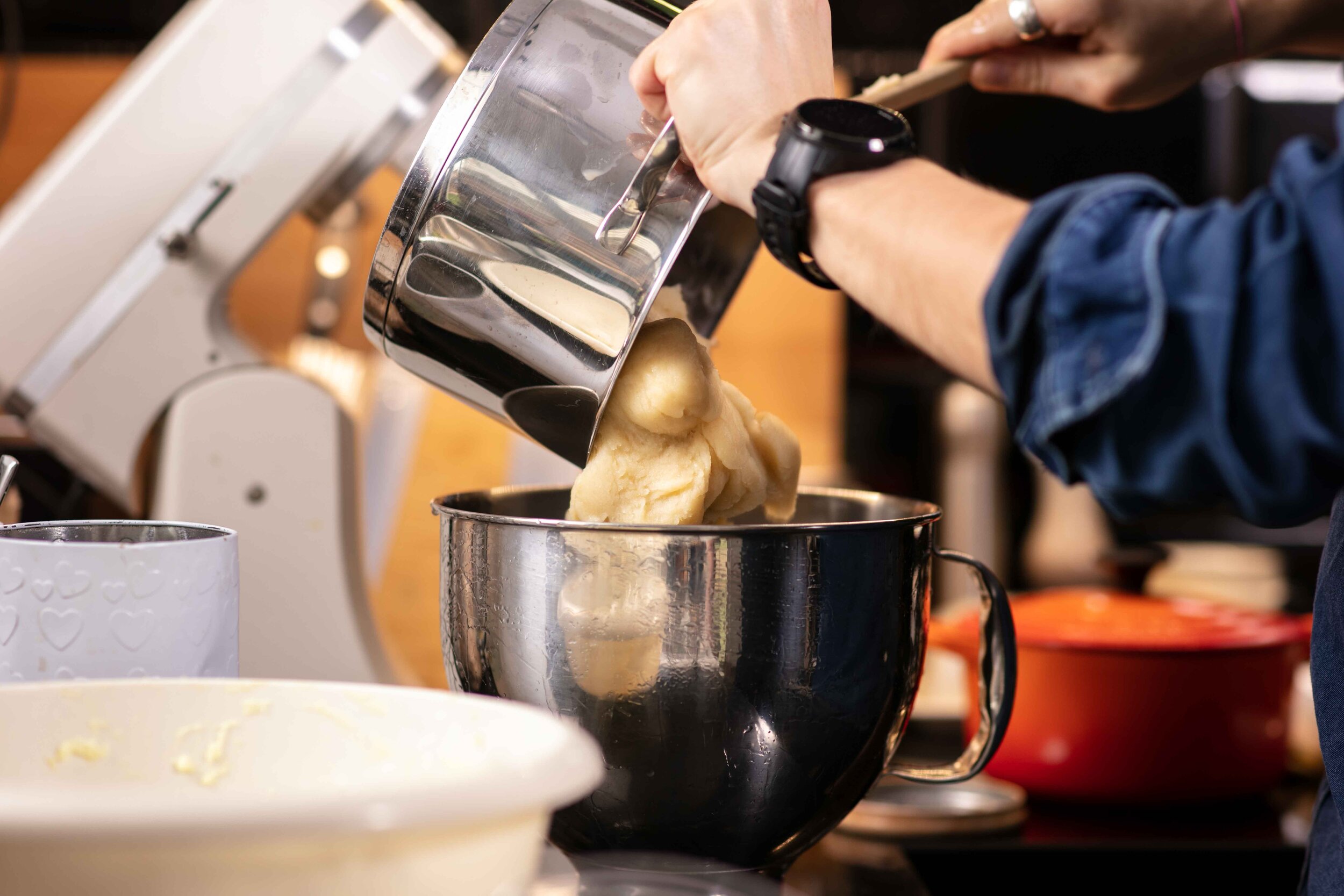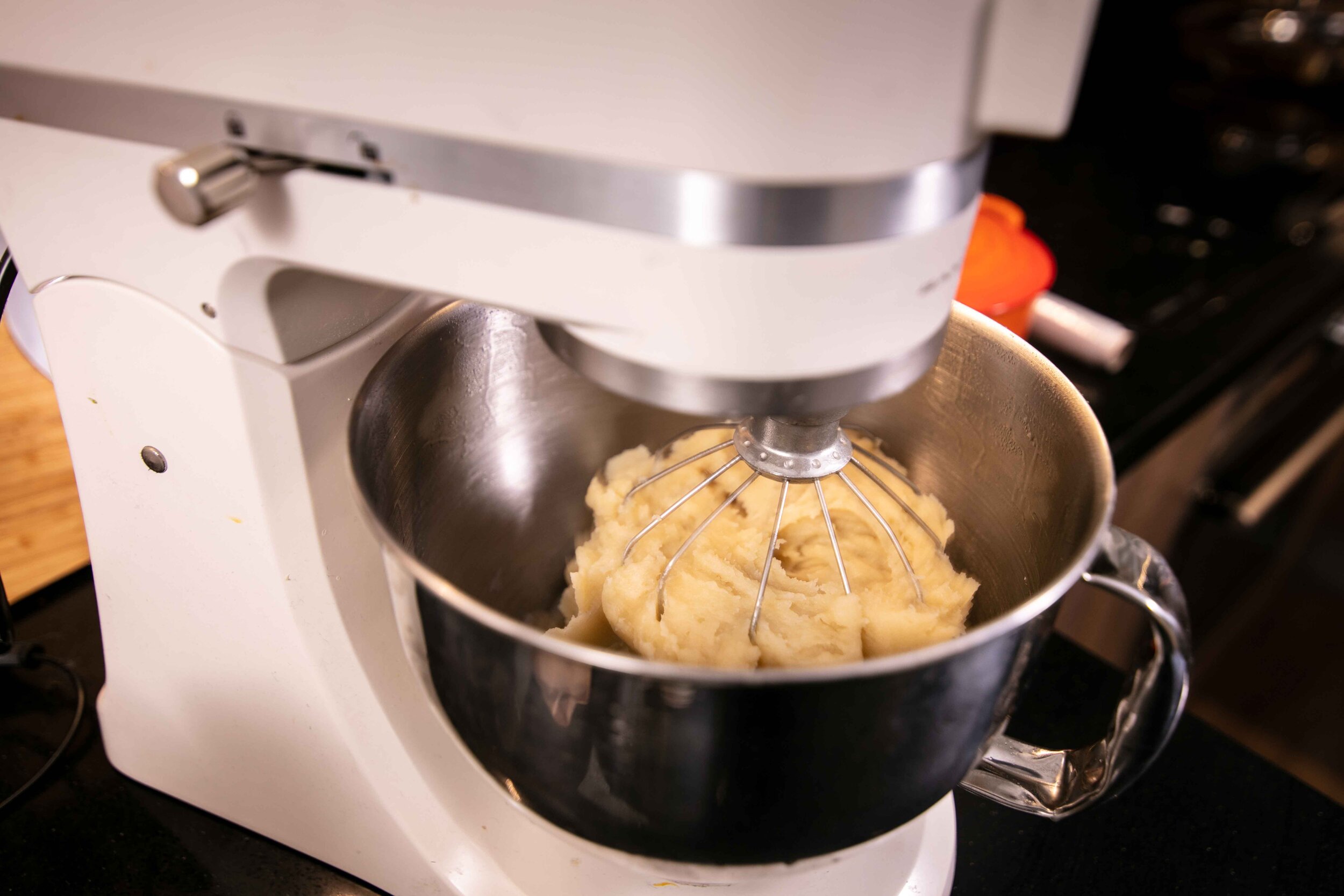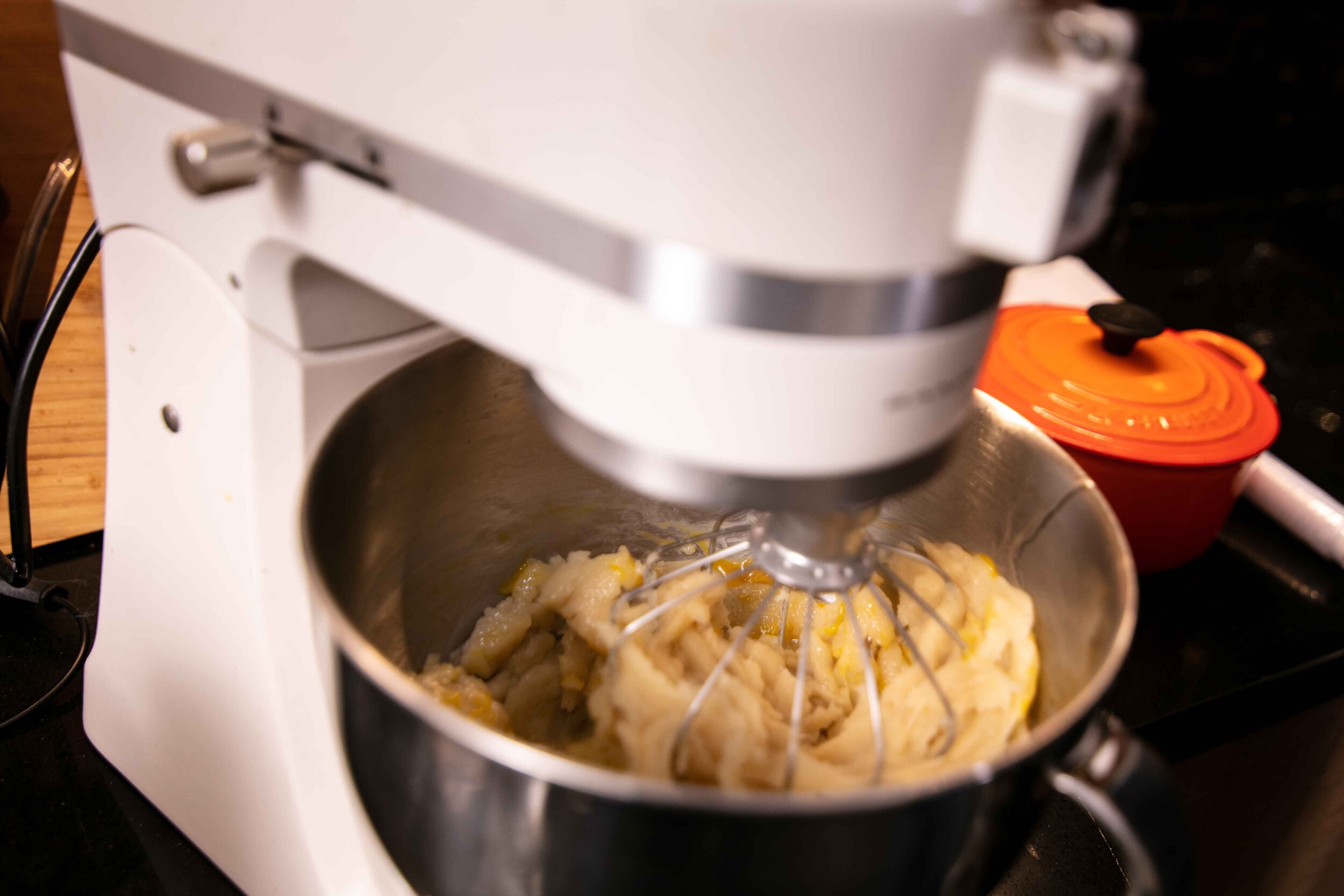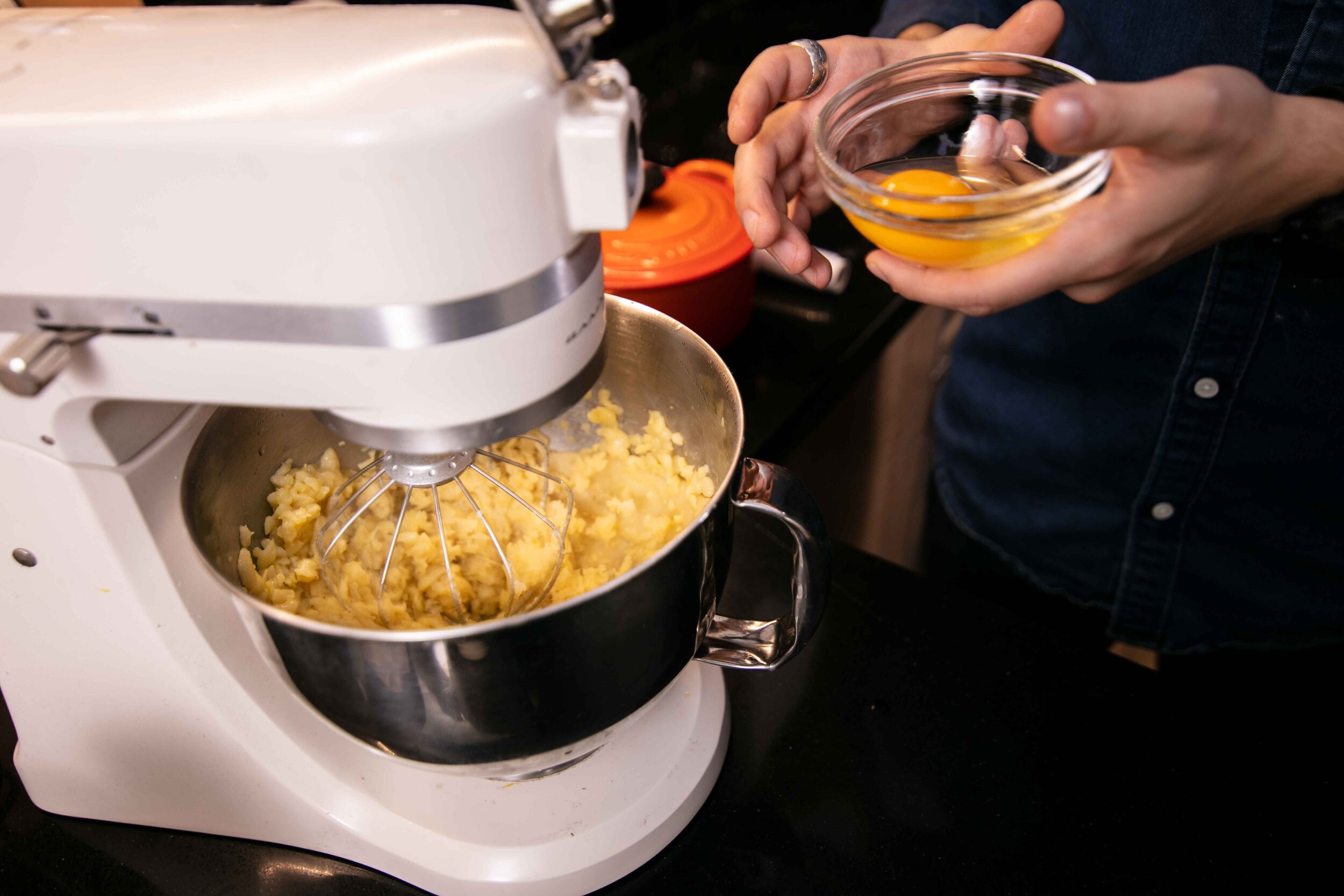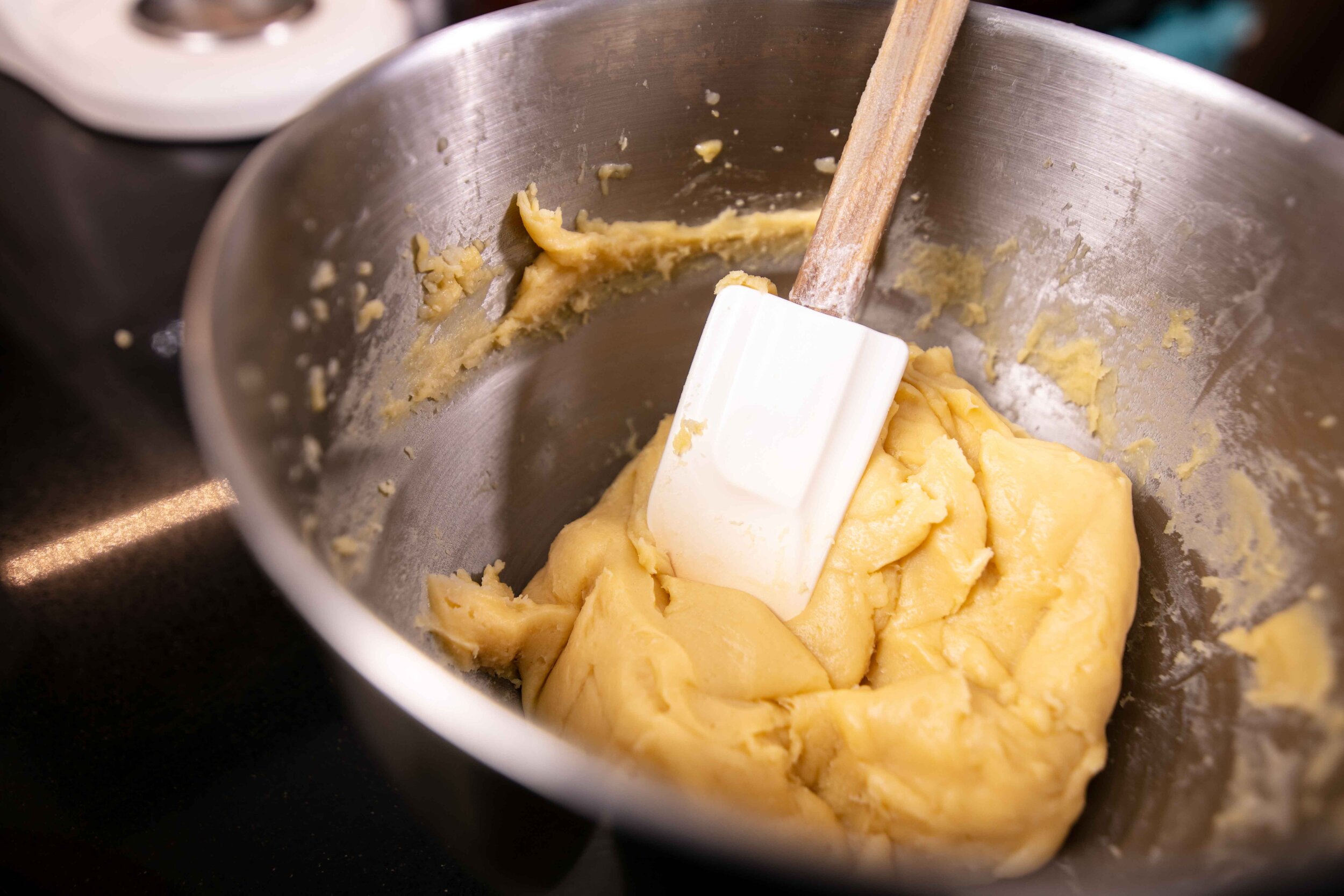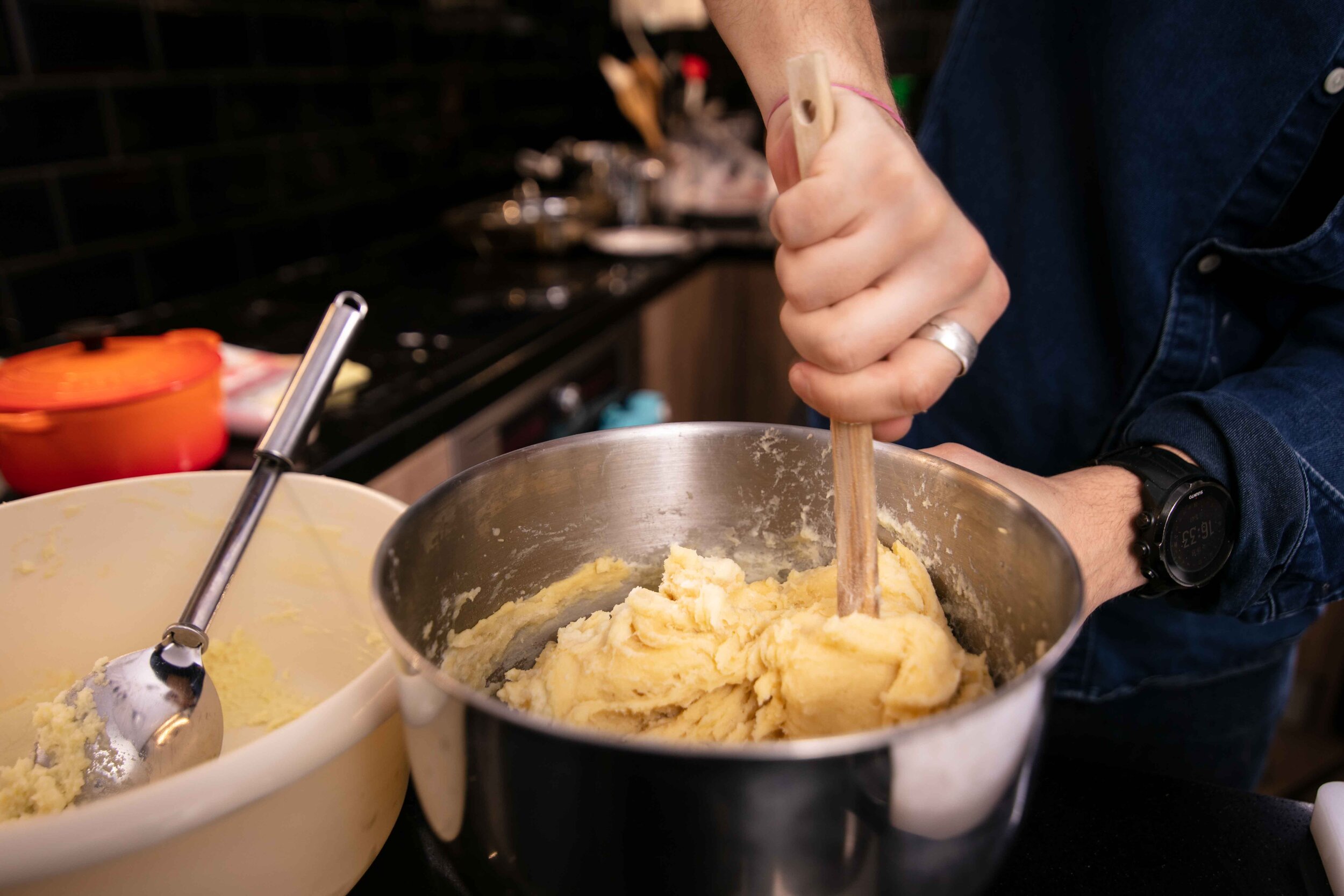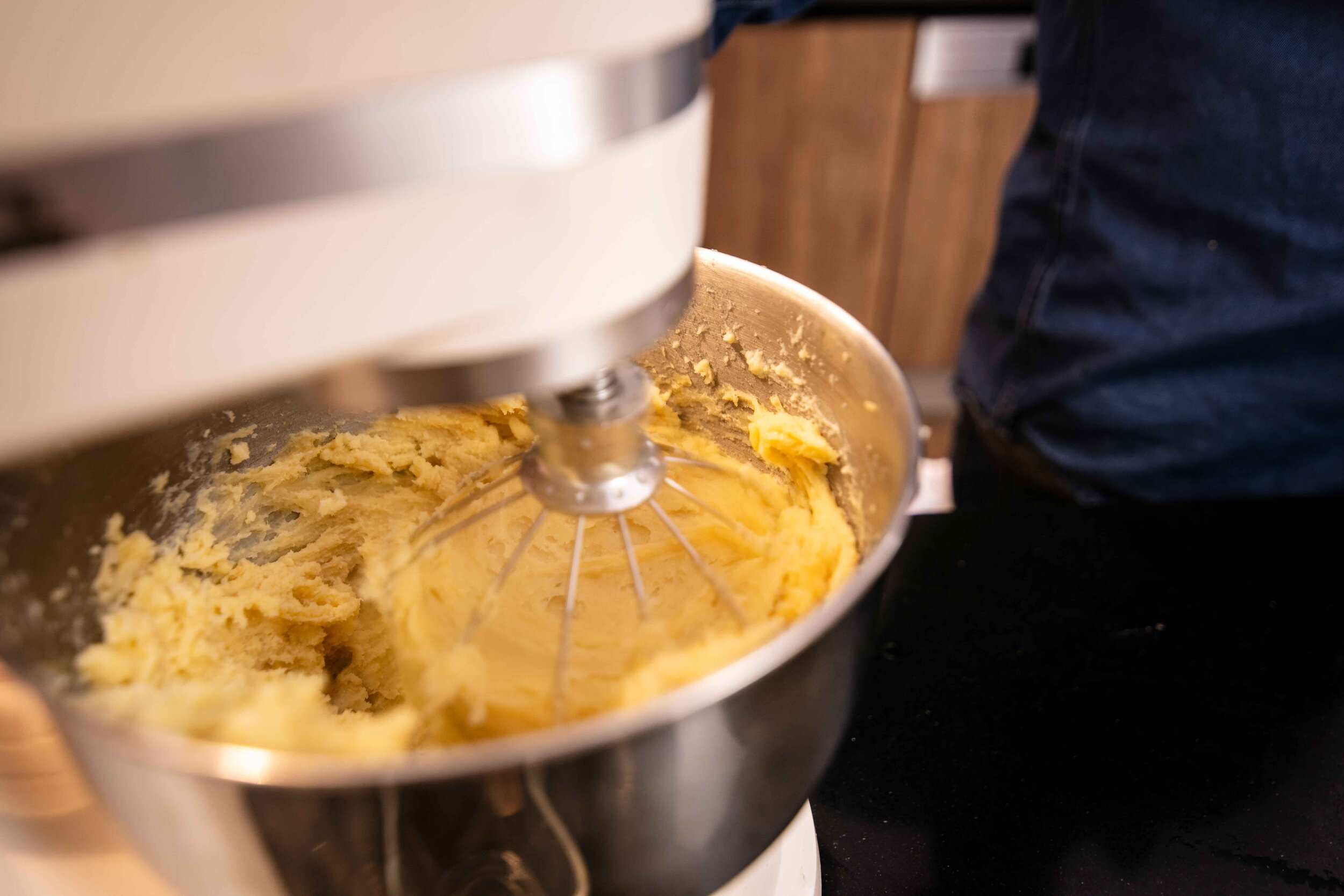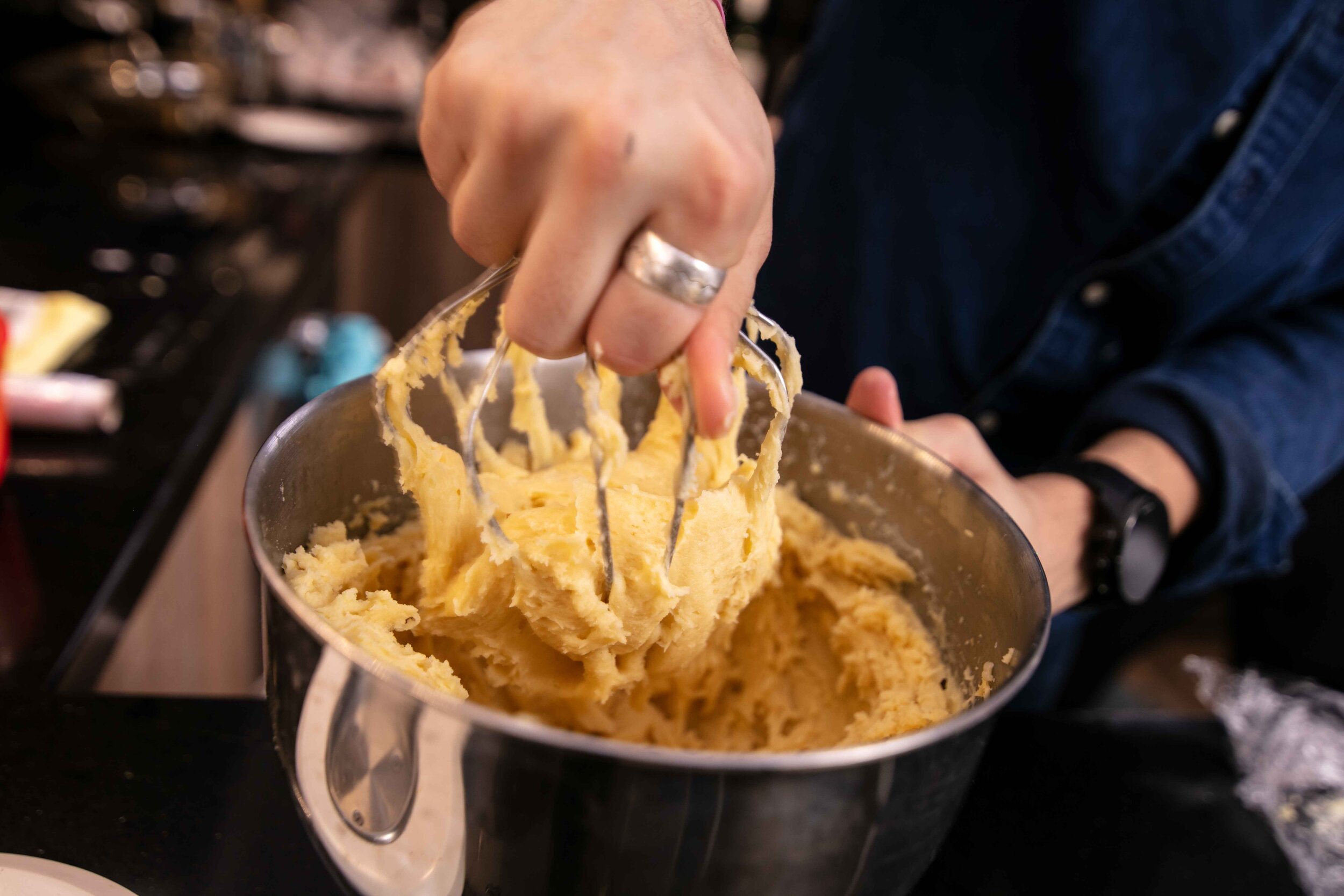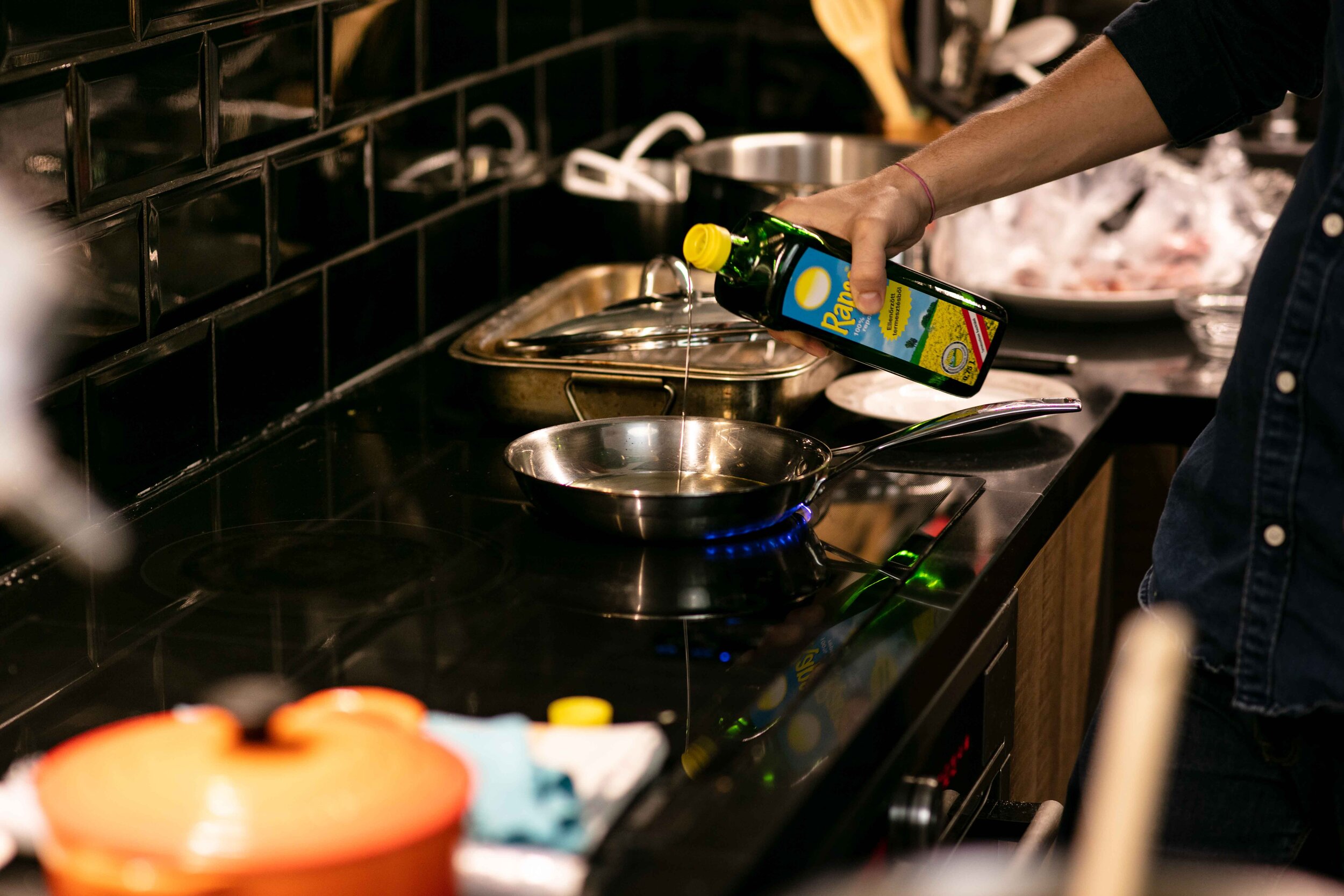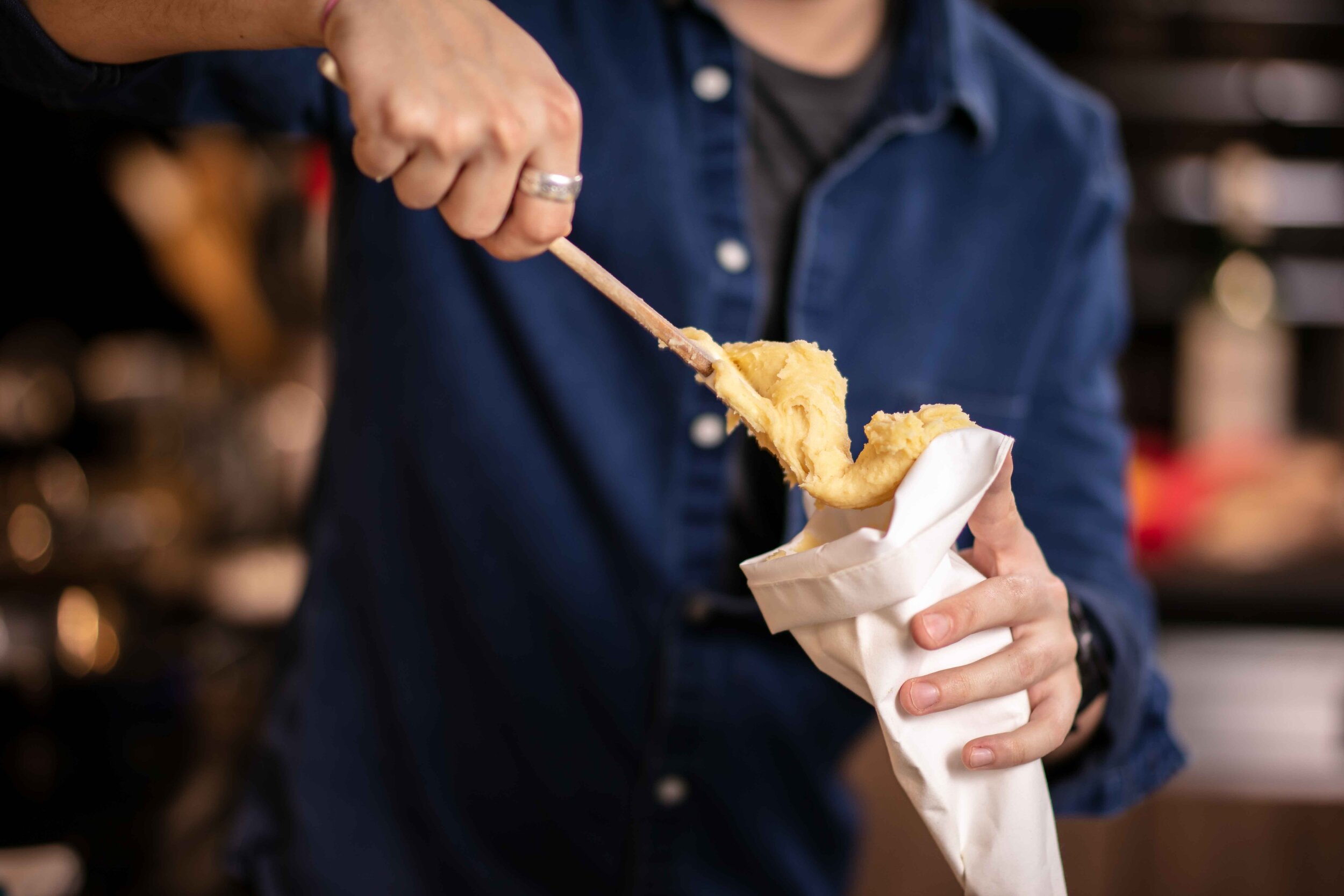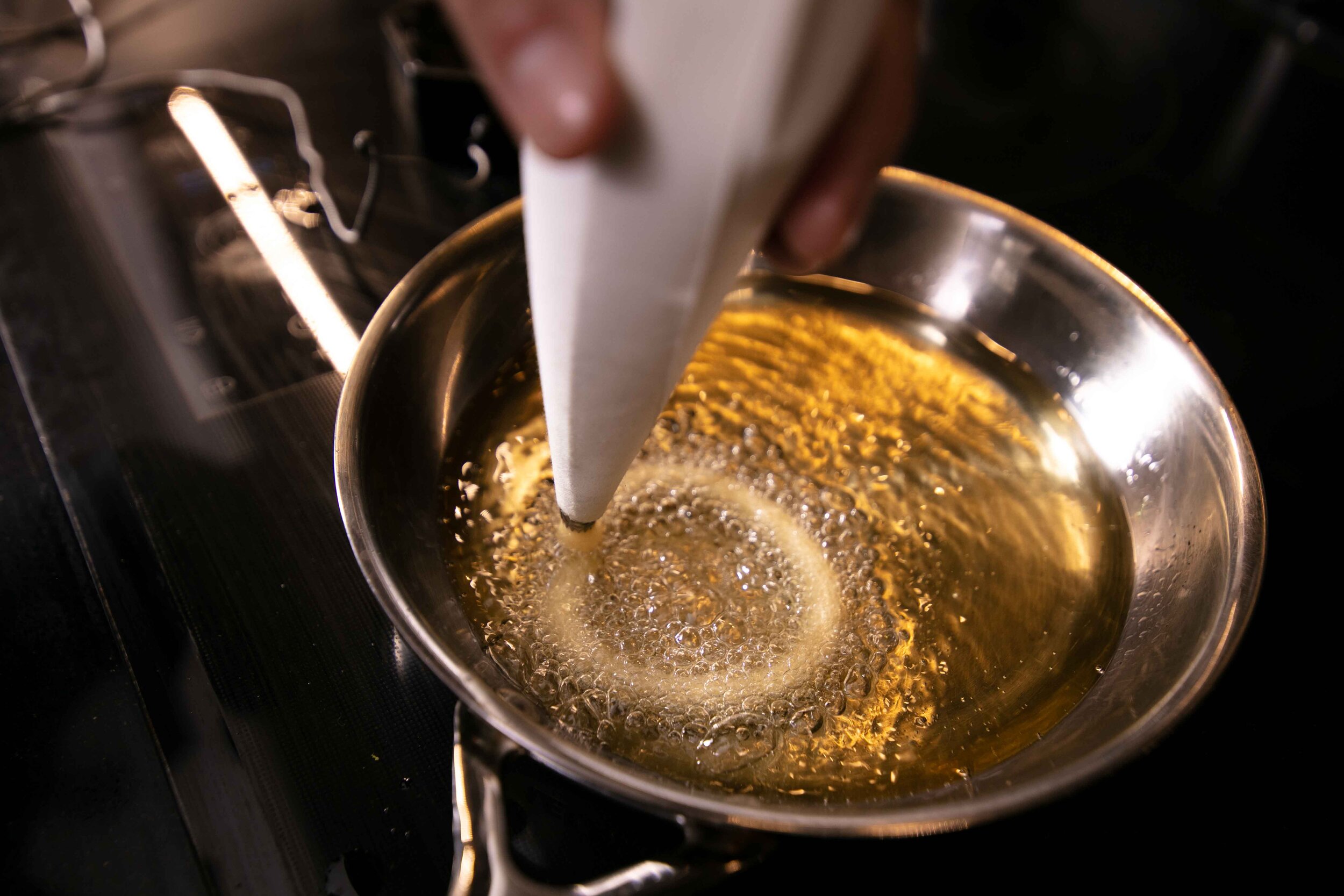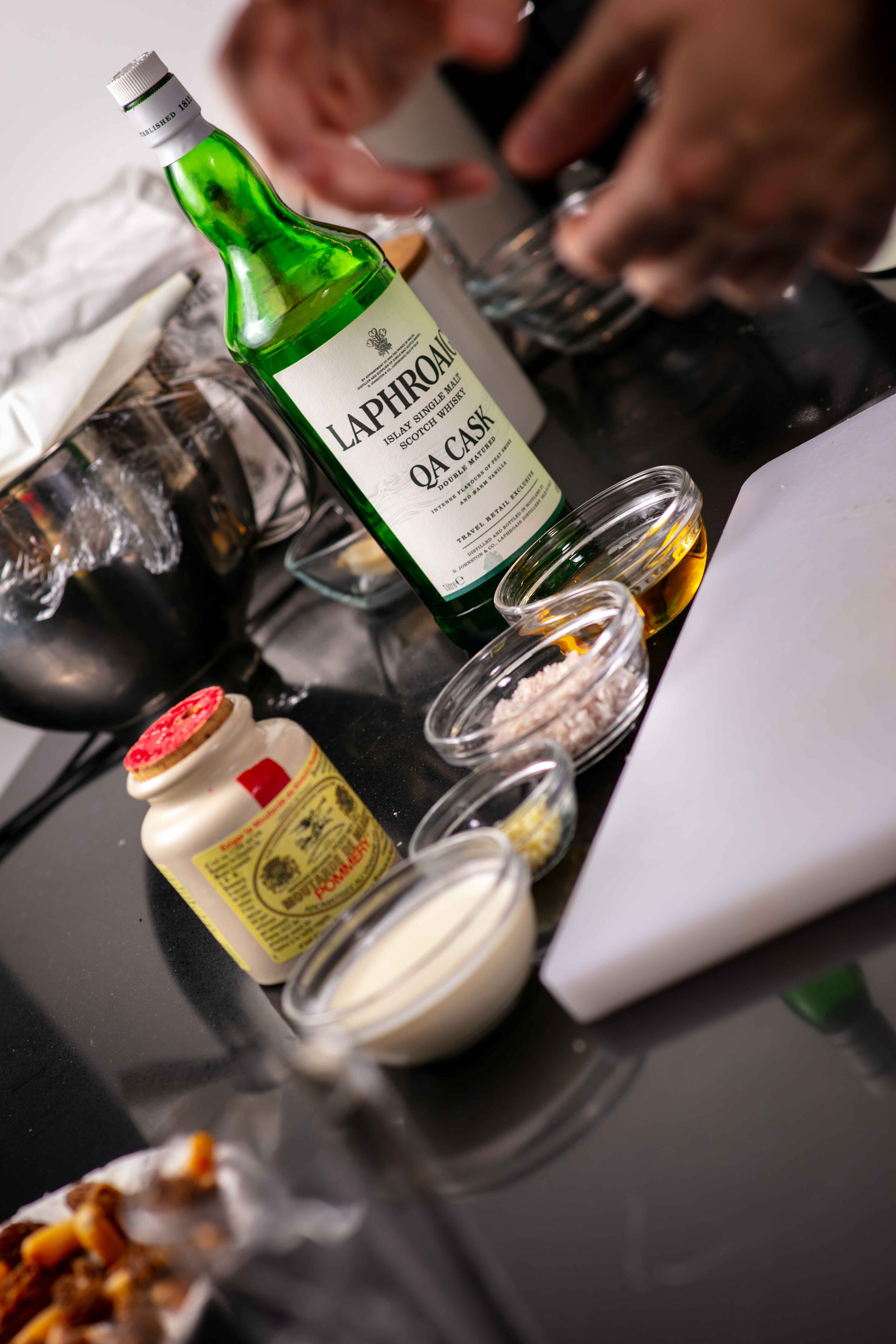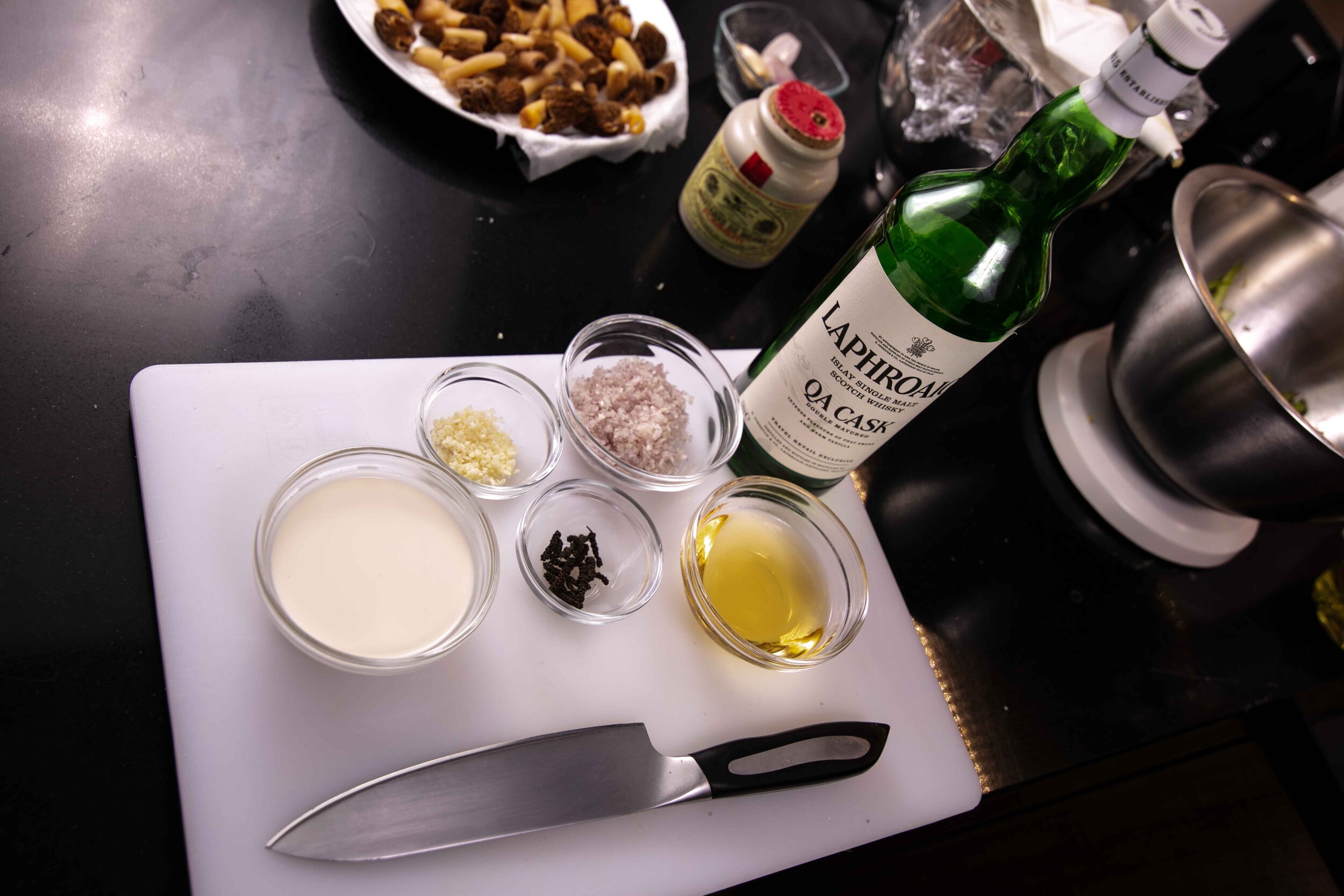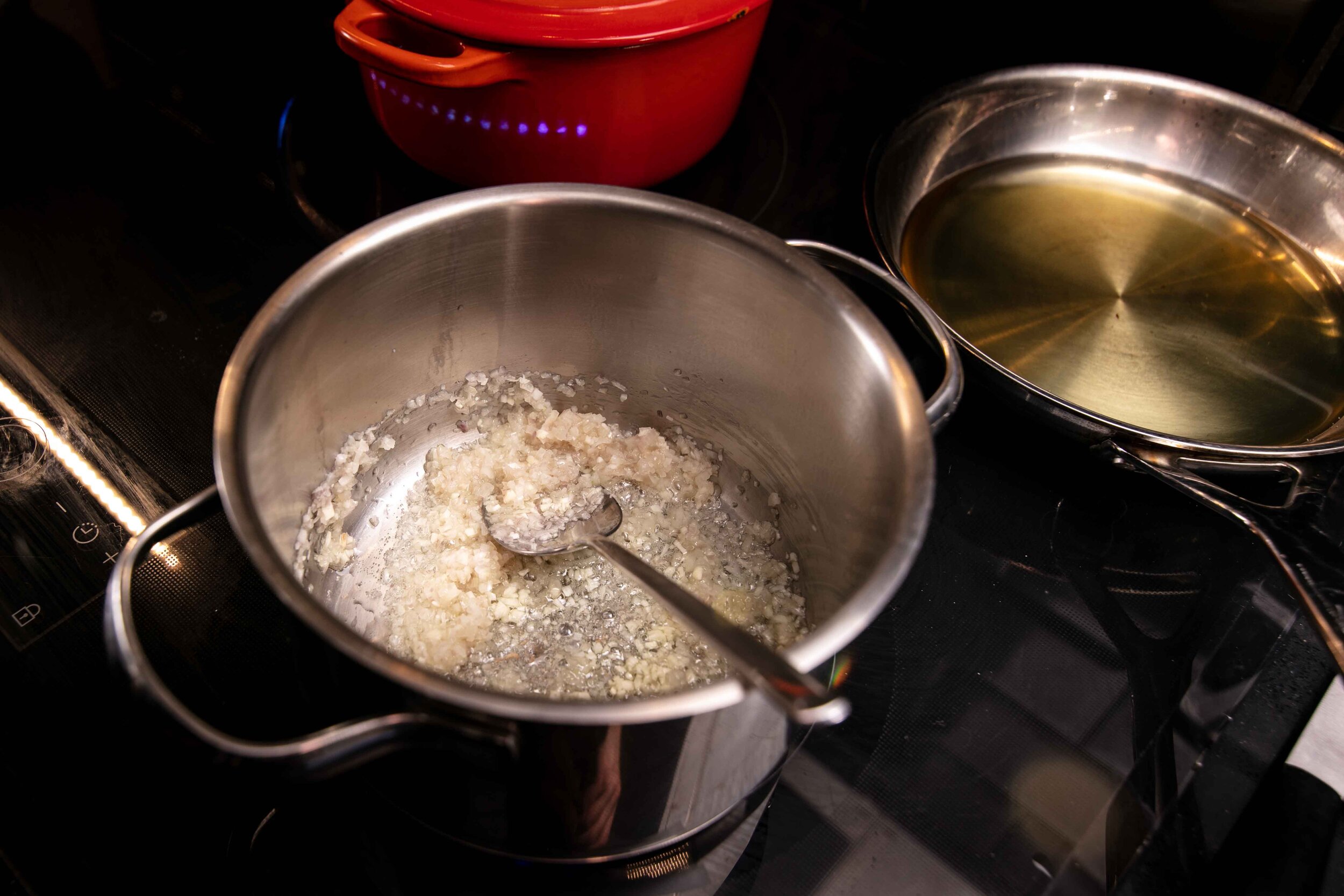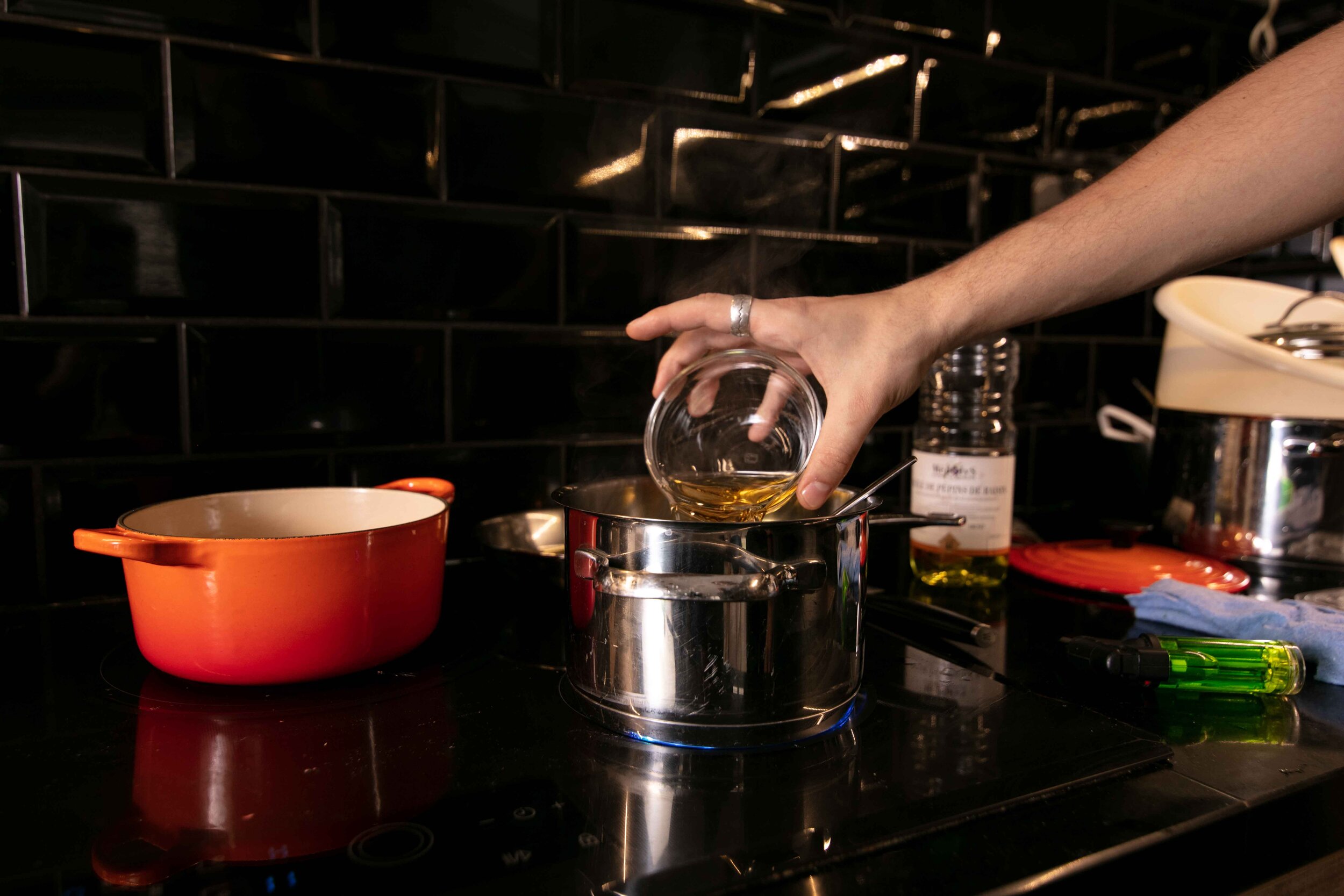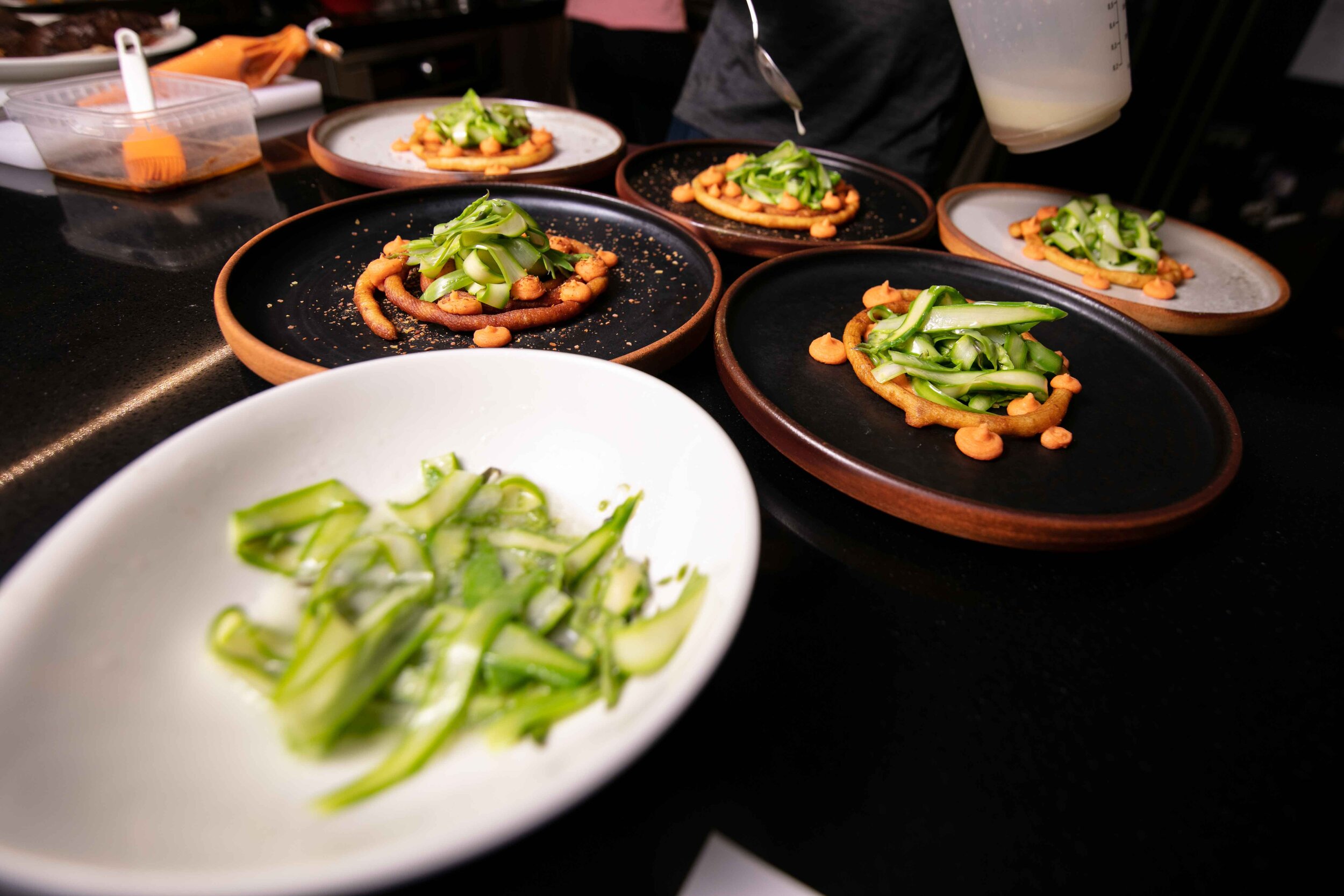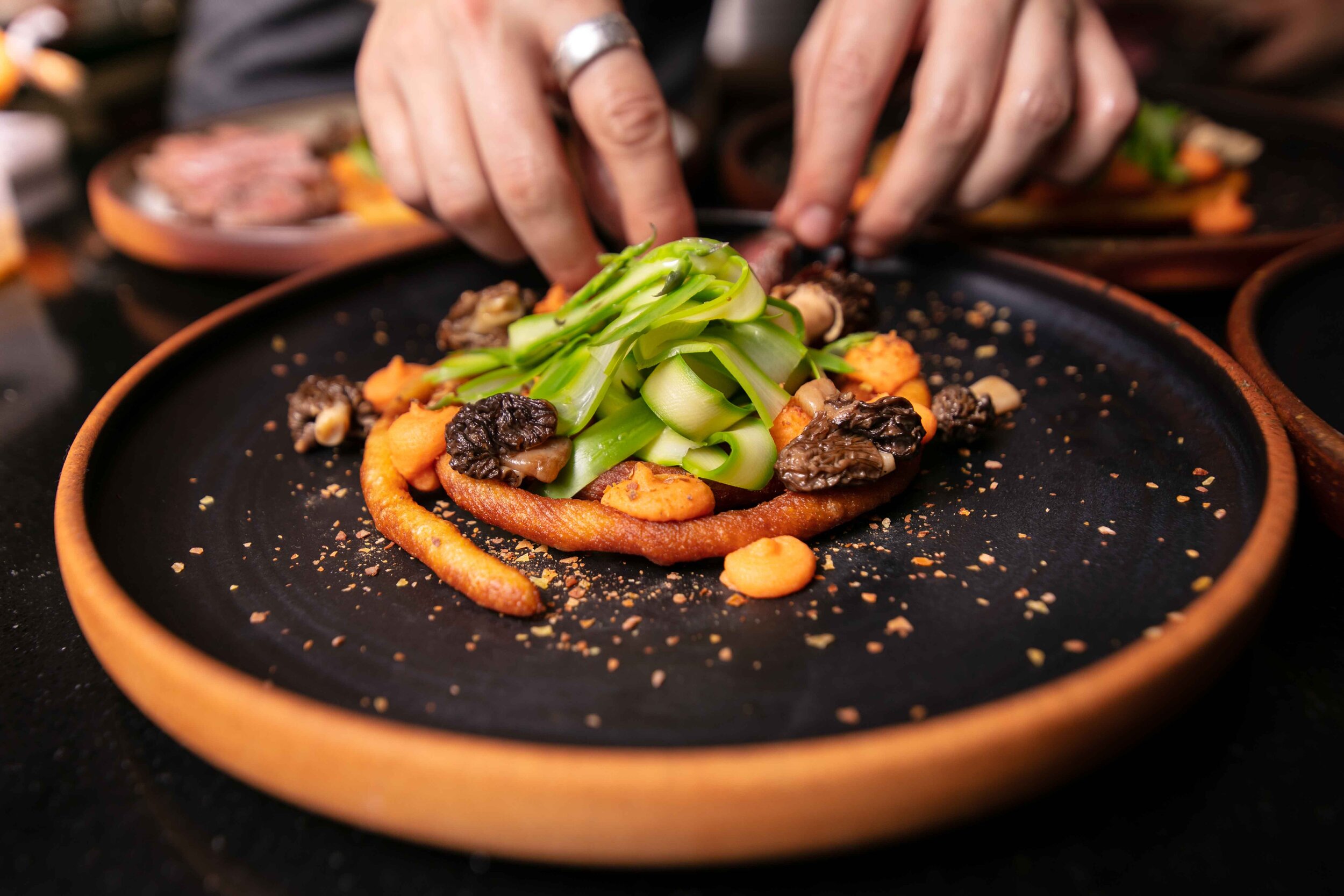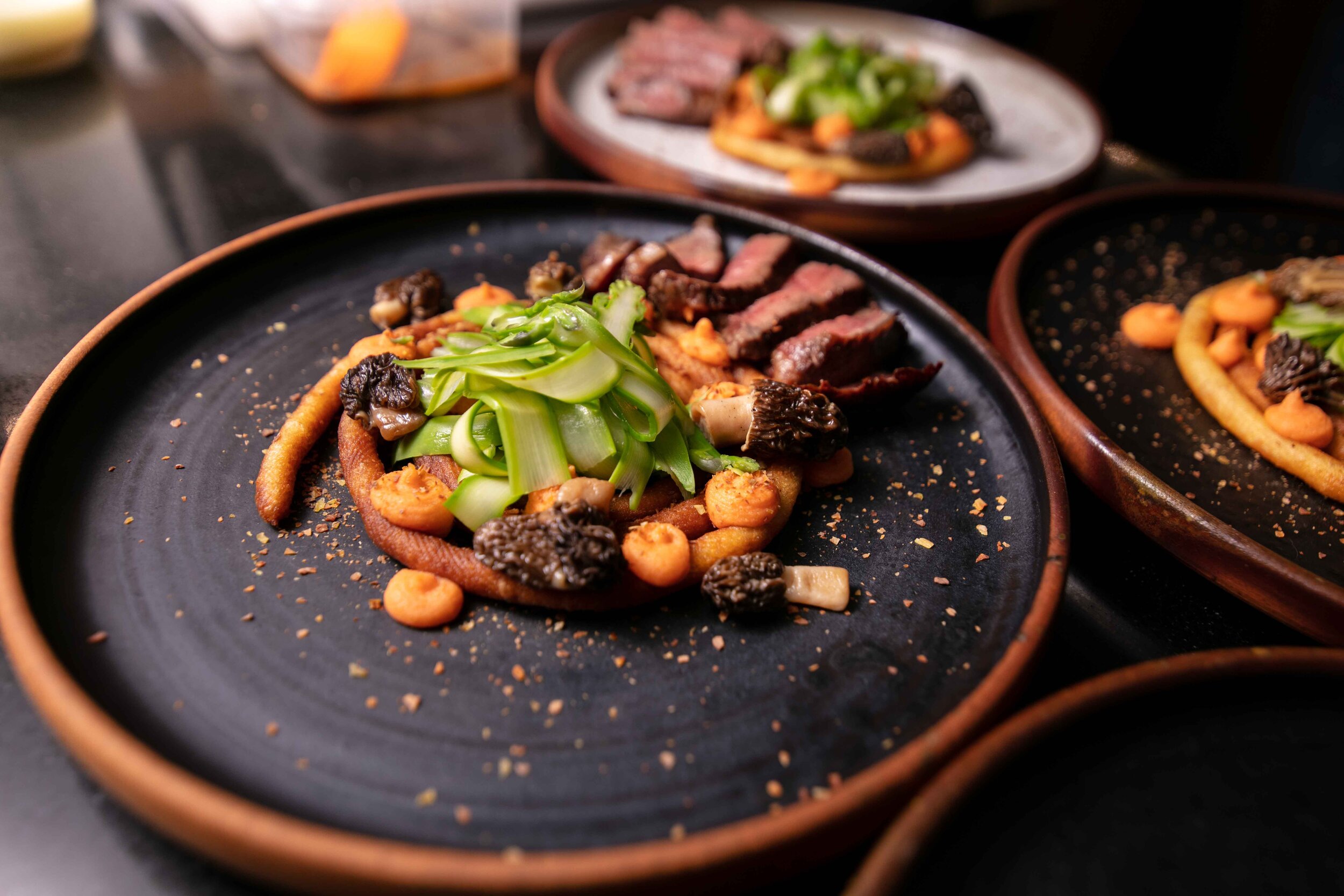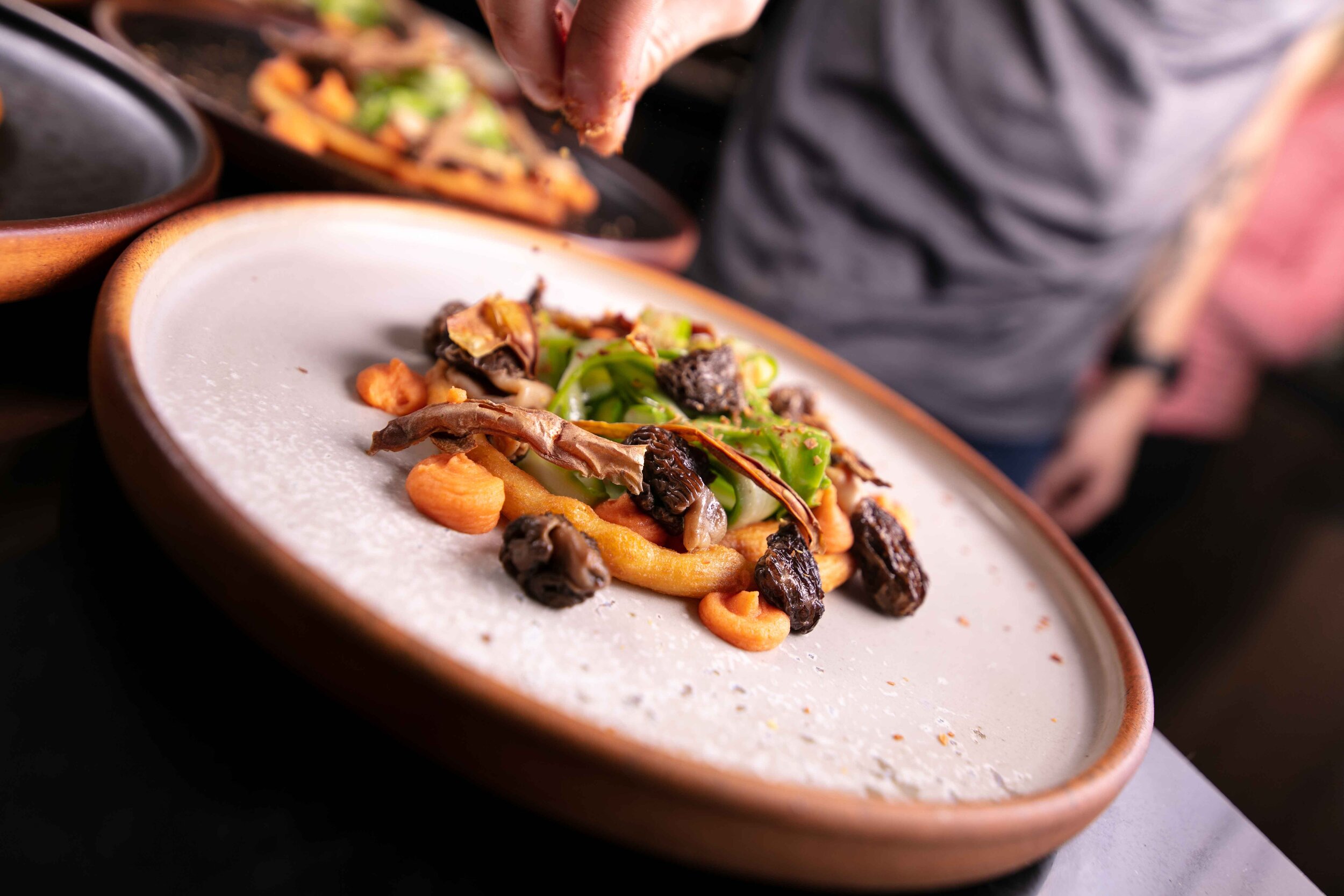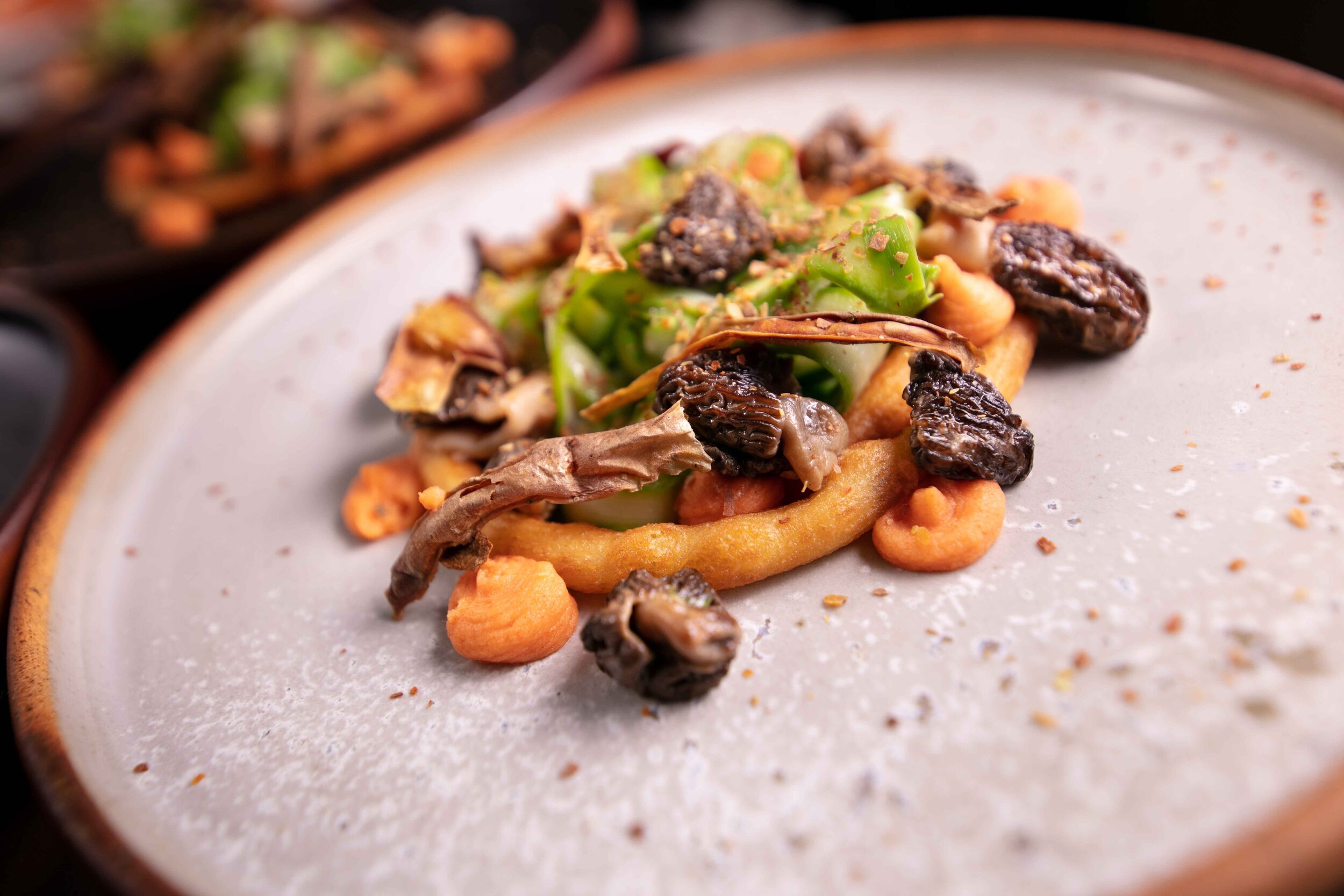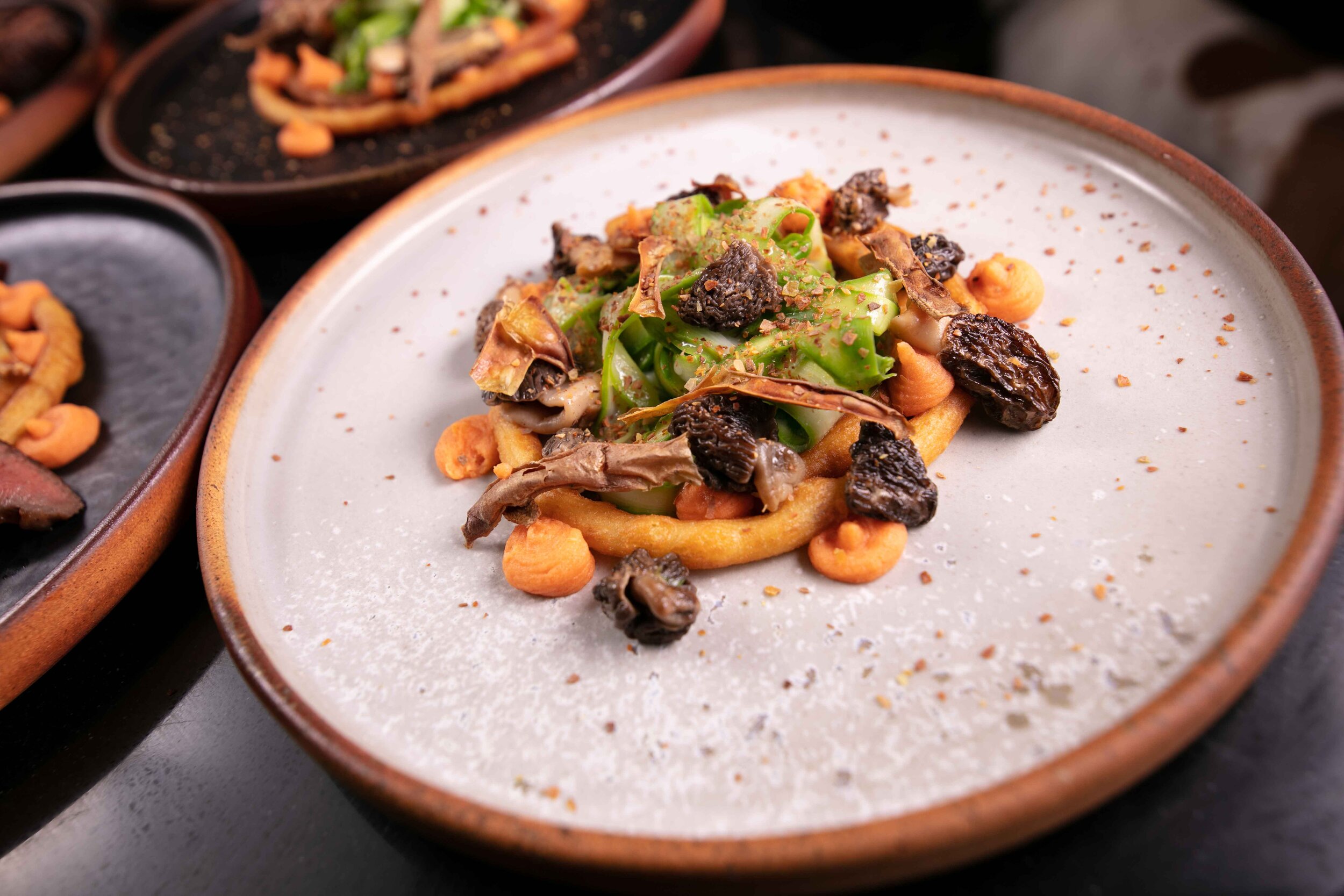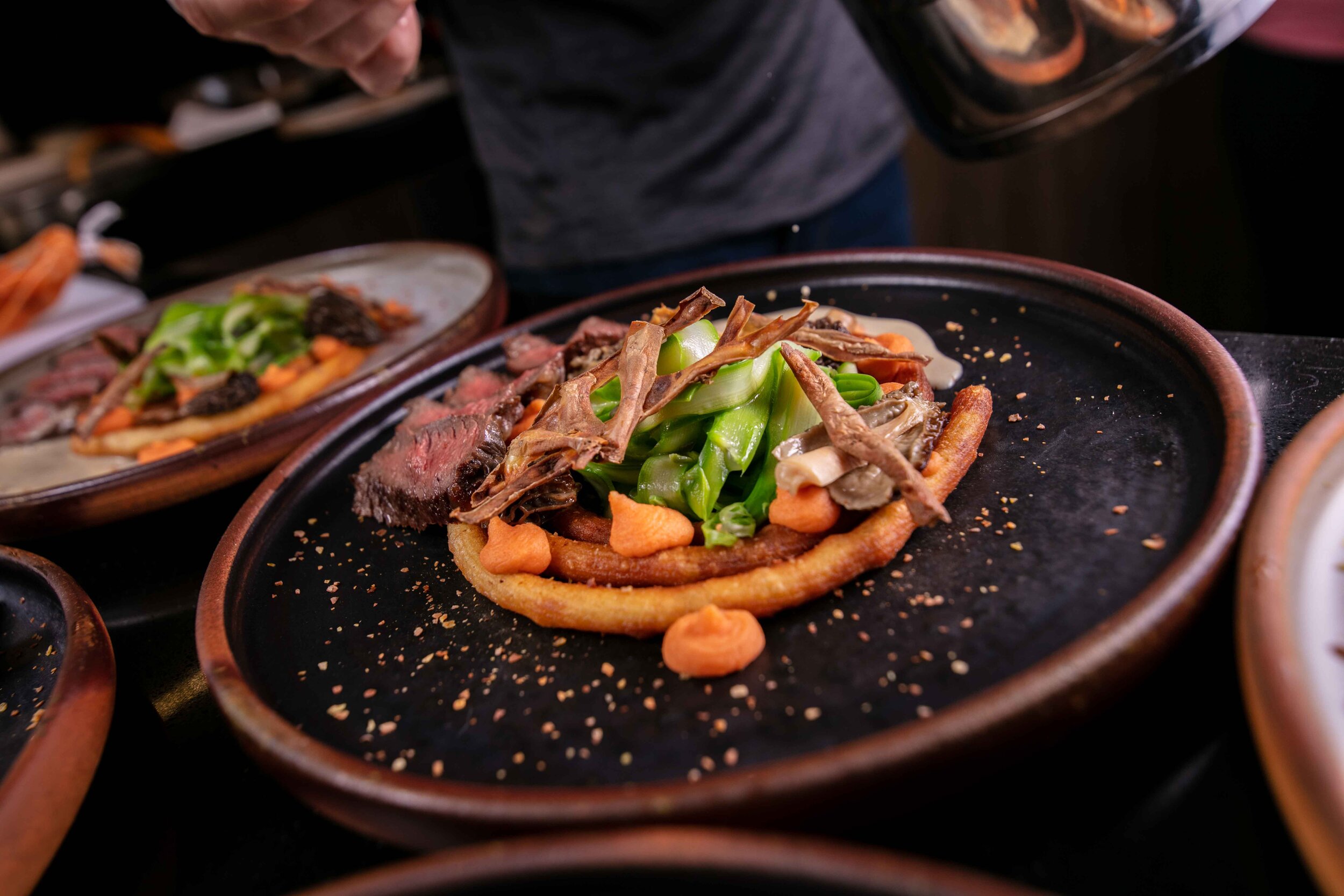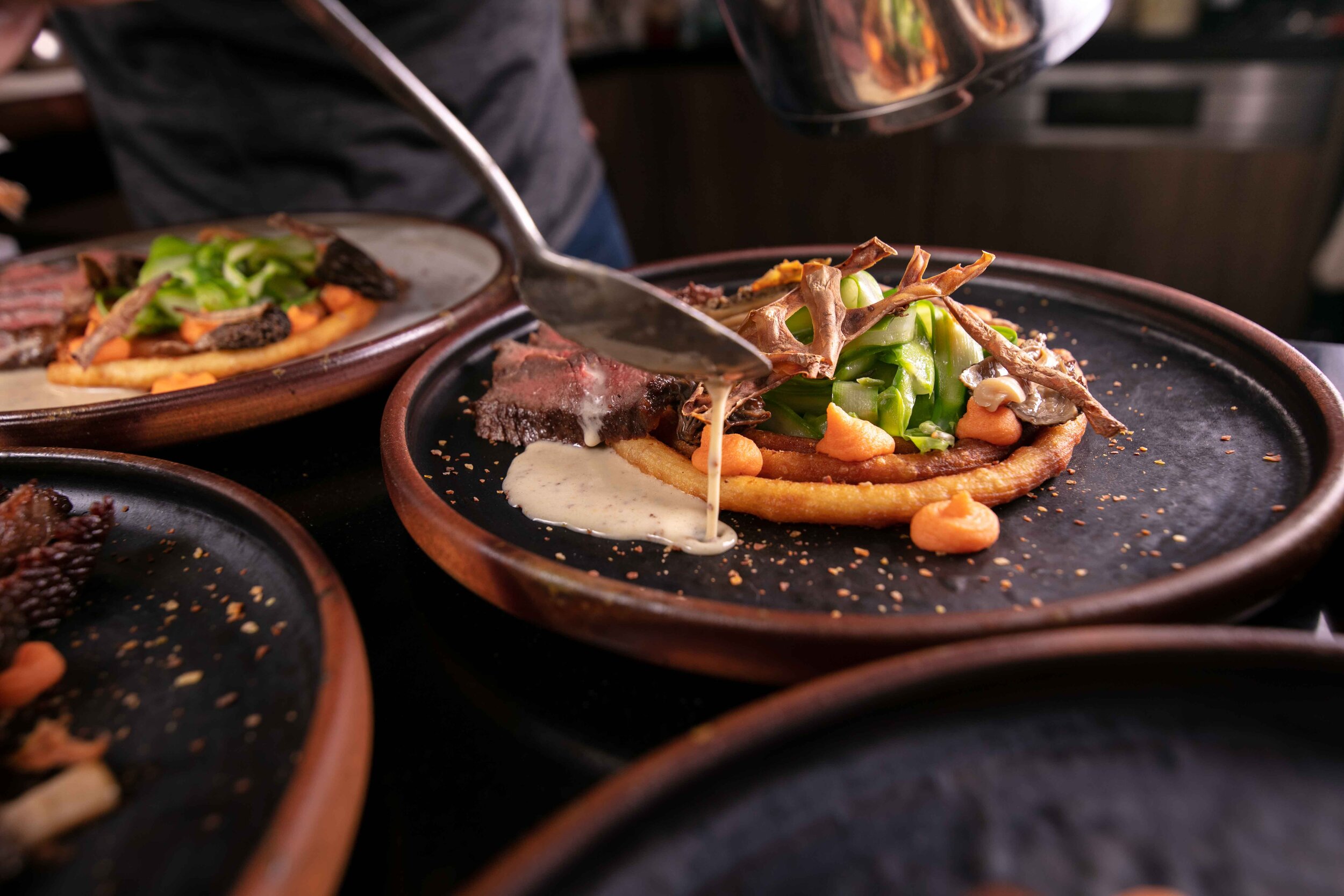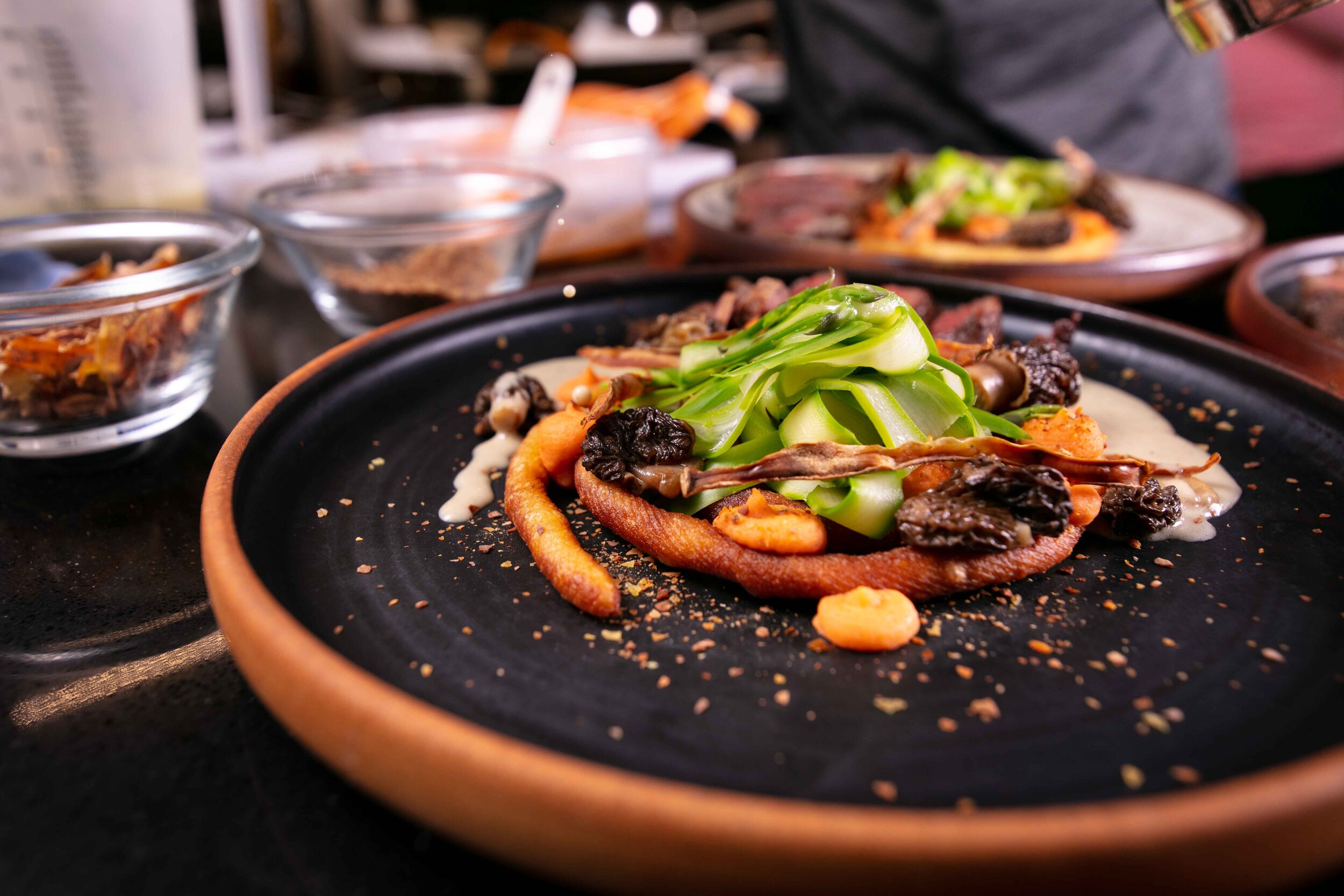Wagyu Tri tip with Timiz Pepper Sauce, Savoury Churros, Morels, and Asparagus
Hungarian Wagyu Tri Tip Steak with Early Morels served on a bed of asparagus, a smoky Ethiopian Timiz Pepper and Laphroaig QA Cask Single Malt sauce, Ratte Potatoes done thrice: savoury Churros, Mash with sweet Hungarian Rubin Paprika, and bitter Ratte-skin chips.
This menu was to test ourselves, skills, concepts using primarily seasonal ingredients. The fresh wagyu, morels, asparagus, and ratte potatoes. The key here was to display technical skill as well as creativity.
It is not a main course one makes every day, so we thought we would set the bar fairly high… if you have time, or are planning a dinner party, this menu has the wow factor in terms of overall umami and looks amazing.
They will be impressed.
It combines the buttery tenderness of the wagyu, the crisp asparagus with its dressing which cuts the starch of the ratte potatoes as well as balancing the fat from the wagyu tri tip and churros.
The Timiz pepper, and tobacco flavour combined with the smoky Laphroaig QA Cask Single Malt whisky sauce worked – it just did – surprisingly well (Chef – great job there!). The smokiness of both complemented each other in just the right amounts and with the wagyu adding that extra layer of caramel and buttery tenderness.
Usually, we see Timiz pepper used for liver terrines and goat’s cheese and even bitter chocolate. Never have we seen this combination before – perhaps a world first – and one to add to the wow factor steak sauce list.
The bitter potato skins crushed add a crunchiness to the sweetness of the greens as well as the savoury churros, while the colourful and aromatic, sweet Rubin Paprika warms.
One thing we would do different: perhaps not use the paprika as it was not cooked and still had a little raw bitterness, or lightly roast it prior to adding to mash.
This menu was crafted by the chef in our foodie triumvirate – and I have to say it worked out great. The Wagyu was tender, perfectly prepped with some sea salt (we will go into all the details later).
Since its Spring and we have had a bout of intermittent rain, we were able to get early morels (the first crop of the season, known in Eastern Europe as Czech Morels) and new green asparagus, which gave the dish a crunch with the simple vinaigrette cutting the richness of the meat in the smoked whisky sauce, while also giving us a flourish of new Spring green colour.
This first menu is a showcase of what we can do…
As the writer, I have to say I had no hand in the menu apart from supplying the whisky, a double smoked Laphroaig single malt, and the wagyu tri tip. The rest was down to our chef and our resident gourmet.
The Meat
1.2 kg Trimmed (Fat Untrimmed ̴ 1.7-2 kg)
Wagyu Tri Tip
Makes 5 Portions.
Preparing the Wagyu Tri Tip
Tri Tip is one of our favourite cuts of meat. It is a small triangular cut from the sirloin (often called the triangle part of the loin) and has all the full beef flavour you would expect from a much pricier cut. The French refer to it as aiguilette baronne, while in Germany it is known as the Pastorenstück.
Highly underestimated and in our experience, better than the Picanha. Our Tri Tip was supplied by Zichy Mihály and bought from: https://francegourmet.hu/, whose wagyu has become better year after year.
If you are planning on making steaks from this cut then there is a special way of cutting it, shown below. We recommend cutting across the grain when you serve the steak, as cutting it along the grain will only give you a tougher steak to chew on as you will chew along the grain.
Remove the fat as this can be cut into small squares and frozen- and later can be used to make delicious wagyu crackling – more on that later!
In a decent Tri tip, usually weighing around 2-3 kilos, you will “lose” around 15-20% through cleaning the fat.
Some cook with the fat on, however, with quality beef such as this wagyu, you have ample marbling and can comfortably lose the fat to another dish, or occasion. We have a plan for that for another post, so hang in there!
Our wagyu was graded with a Marbling Score of 3-5**. More on beef grading here, https://www.steaksandgame.com/wagyu-beef-grading-and-marble-scores-15658.
Potato Elements (The Churros, The Mash, The Chips, and The Powder)
Ingredients (For 5 portions)
For a full ingredient/shopping list click here.
600 g Ratte Potatoes
50 g Unsalted Butter
250 g Milk
2 Eggs
150 g Plain Flour
1 Heaped Teaspoon (tsp) Sea Salt
For frying some Peanut or Rapeseed Oil
Method
For the churros and mash, we used Ratte potatoes (also known as la Ratte, or Asparges), a French potato which has the necessary starch and a nutty flavour supposedly coming from the type of soil where it is grown in France.
1. Firstly, preheat the oven to 180 C (fan).
2. Carefully wash the dirt off the potatoes under cold running water with a brush, then dry them well (on kitchen towels).
3. Peel the potatoes and put the skin into the preheated oven on a tray with baking paper (make sure the skins are only one layer thick!) and bake them until nicely brown and crispy (do keep an eye on them and check them every few minutes because they burn easily!)
4. Cut the potatoes to thumb thickness (slices) and boil them in salted water for 10 minutes or until soft and ready to be mashed.
5. Drain the cooked potatoes and place them to a mixer with a whisk attachment and start to mix it carefully while adding the milk slowly. When the consistency is soft and fluffy, they are done.
6. We then press the mash through a sieve to remove any lumps in the mixture.
7. Separate the mashed potatoes into two halves, one half for the churros, the other for the simple mash.
8. For the churro dough, add the water, butter, salt, and sugar into a pot and bring to the boil.
9. Add the flour to the boiling base while constantly mixing with a wooden spoon and cook for 2-3 minutes.
10. Then place the mixture into the whisking bowl of your mixer (whisk attachment attached) and whisk for 1-2 minute to let the mixture cool down a little, while maintaining the temperature above 70 C.
11. While mixing, add one egg at a time to the hot dough, and mix until the texture is smooth and sticky.
12. Finally, add half of the mash to the dough, mix again until smooth in texture. Once cooled enough, fill the mixture into a piping bag whose tube is to your preference (thin for thinner churros, larger for more traditional churros; we used the thinner attachment).
Frying the Churros
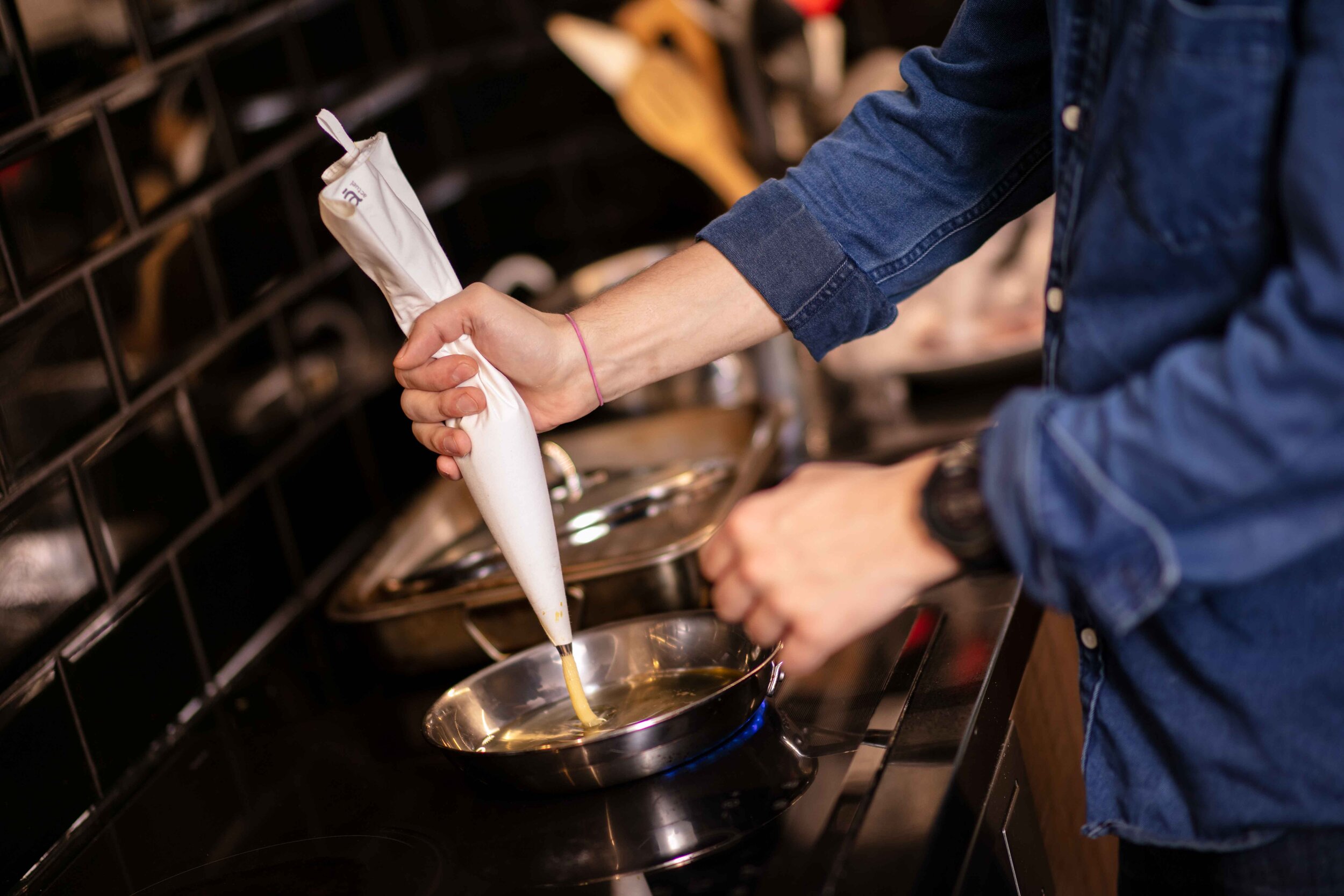
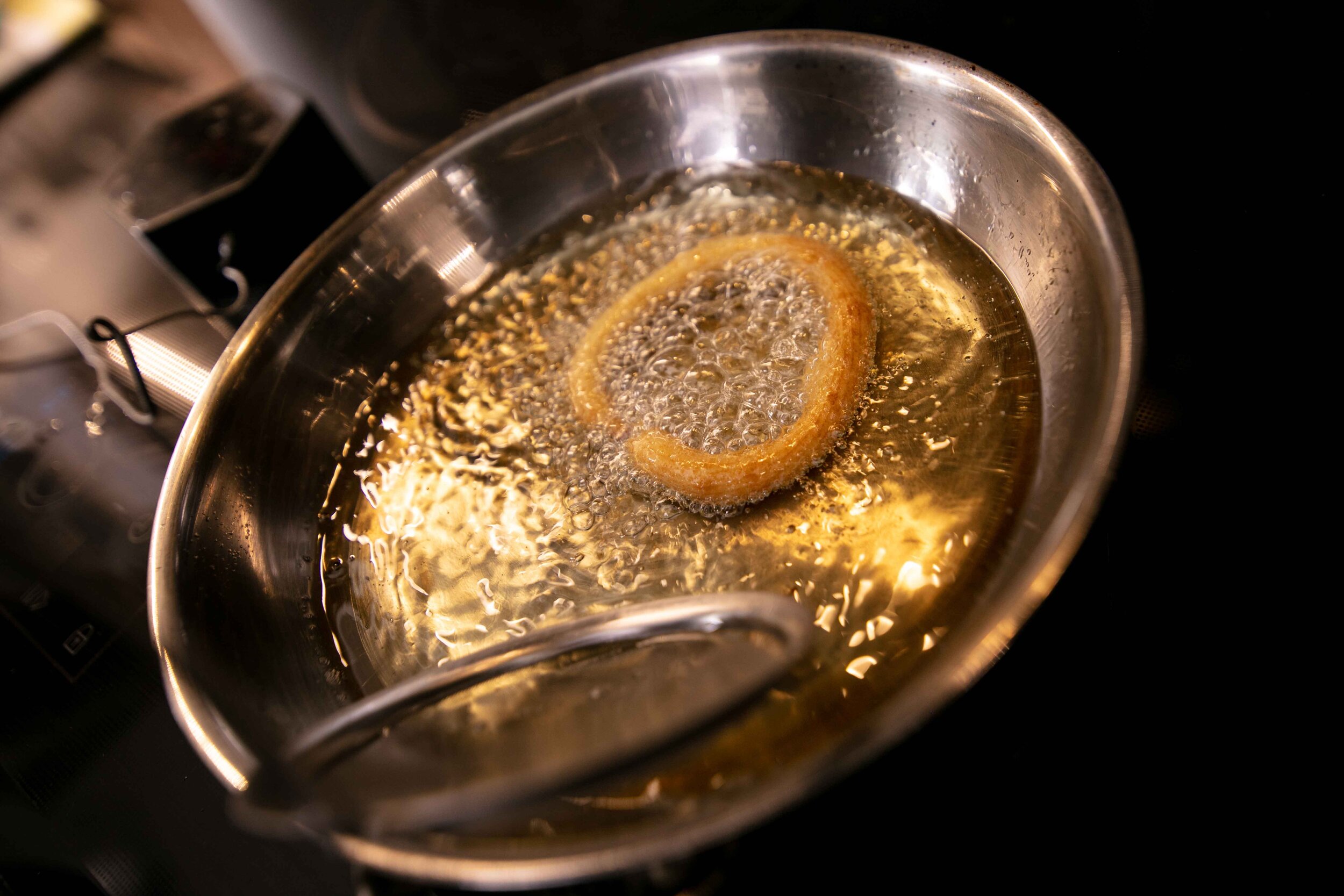
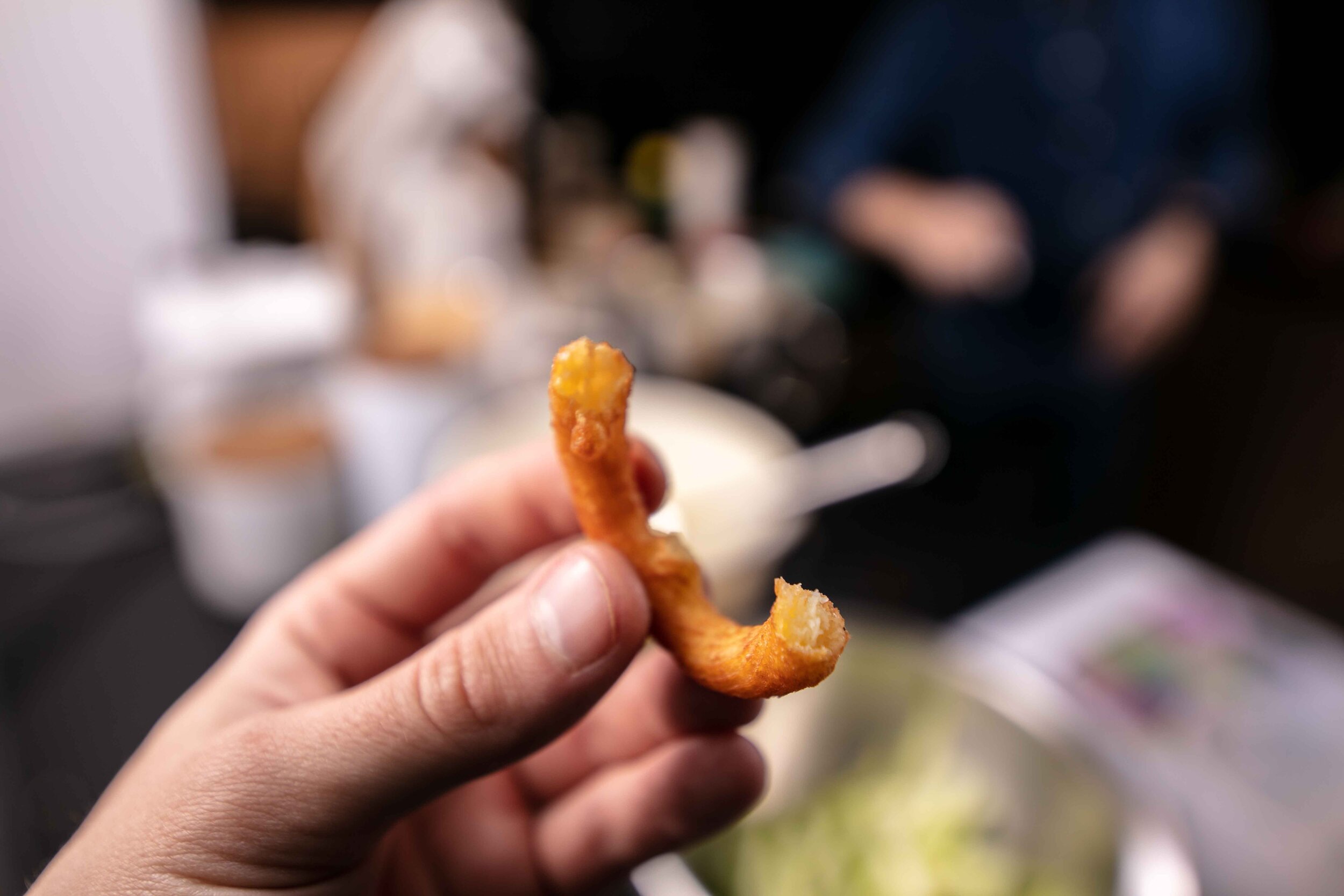
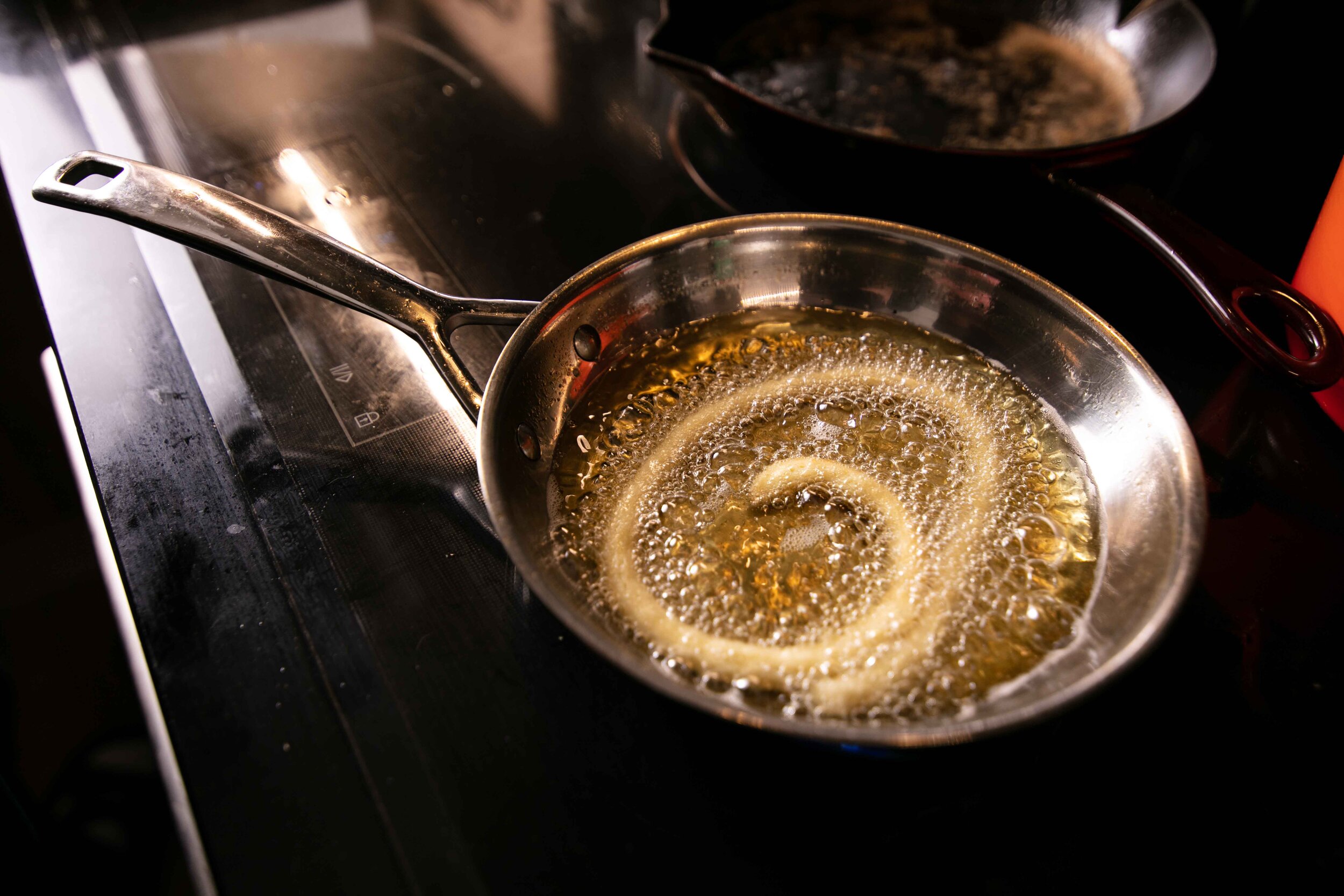
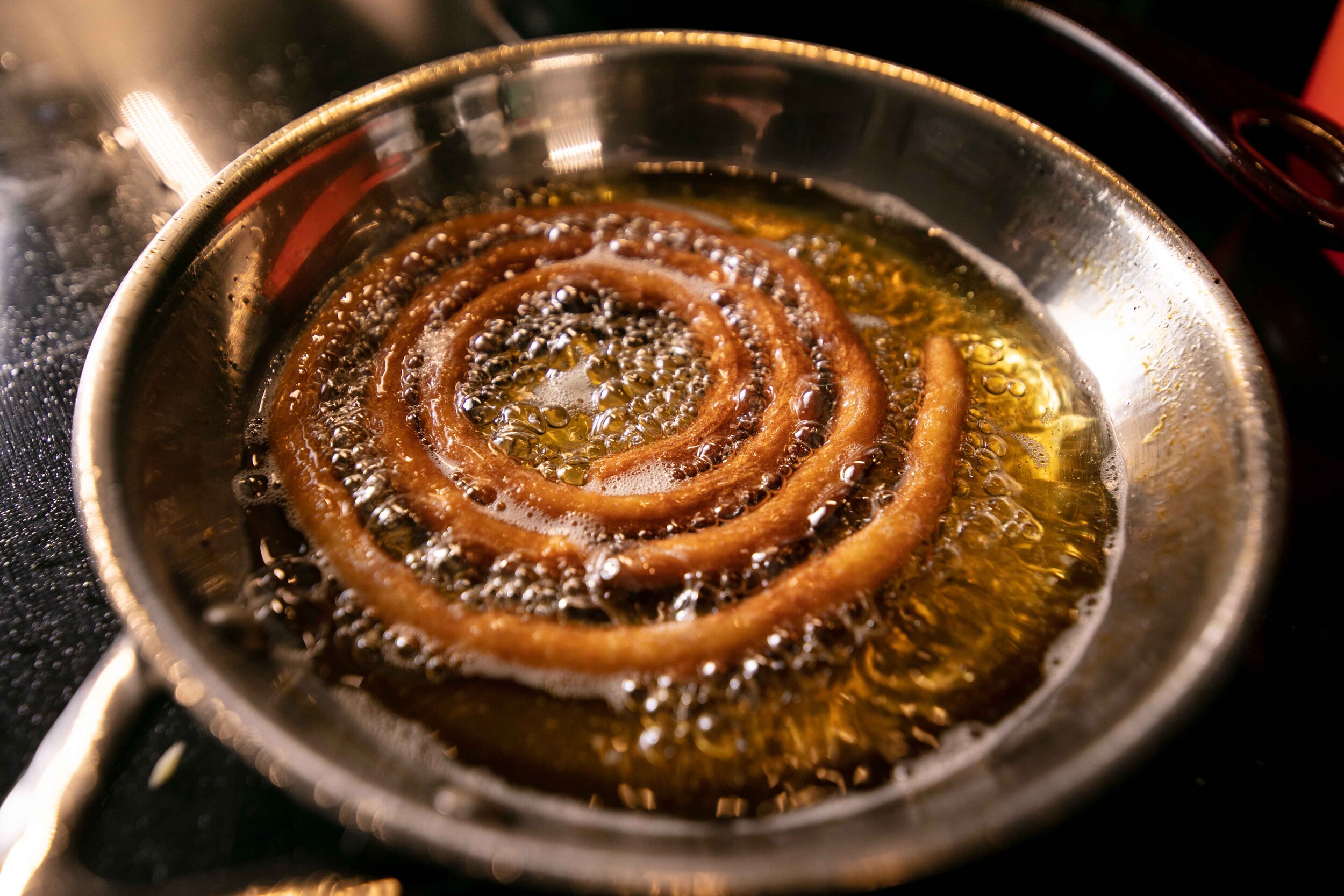
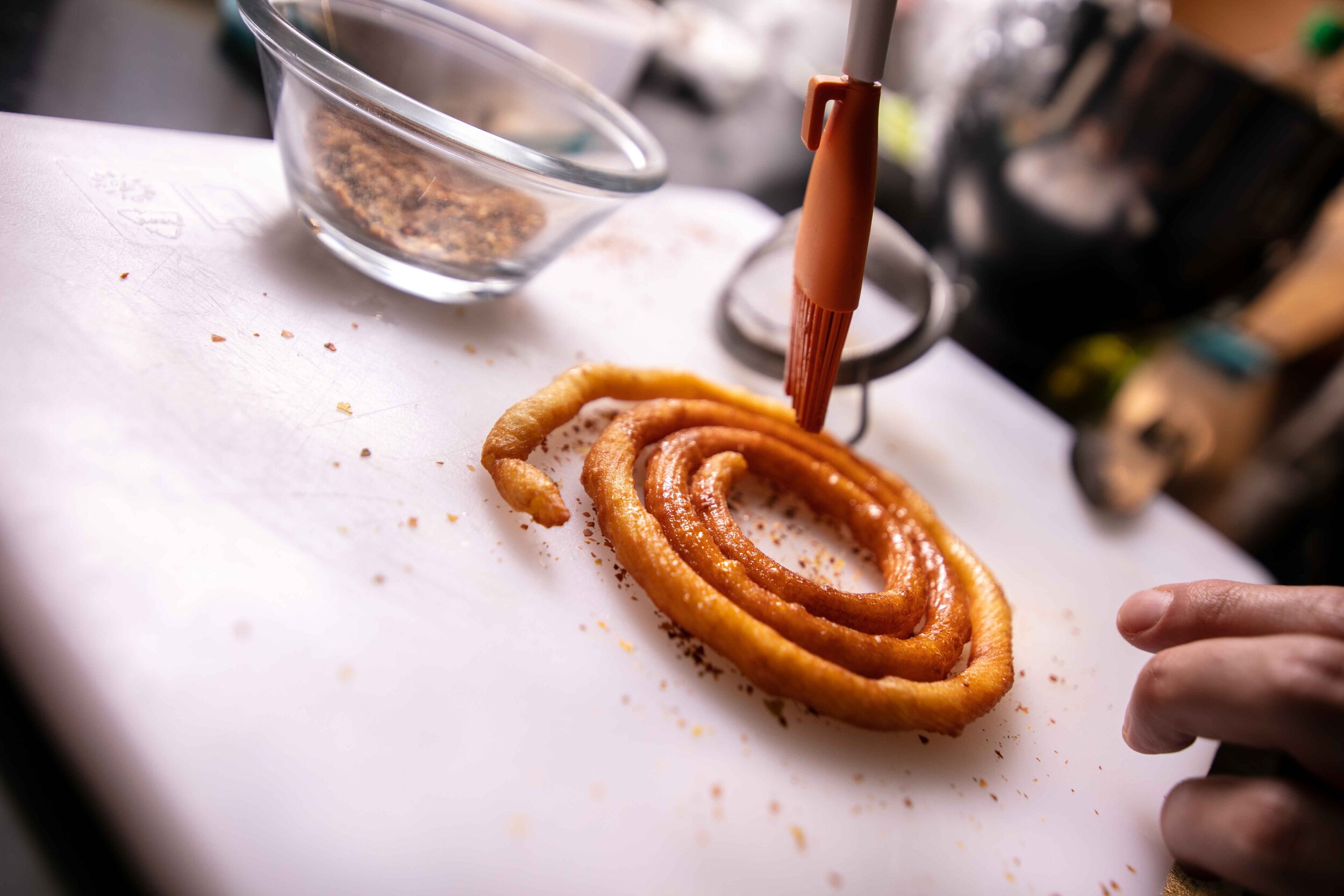
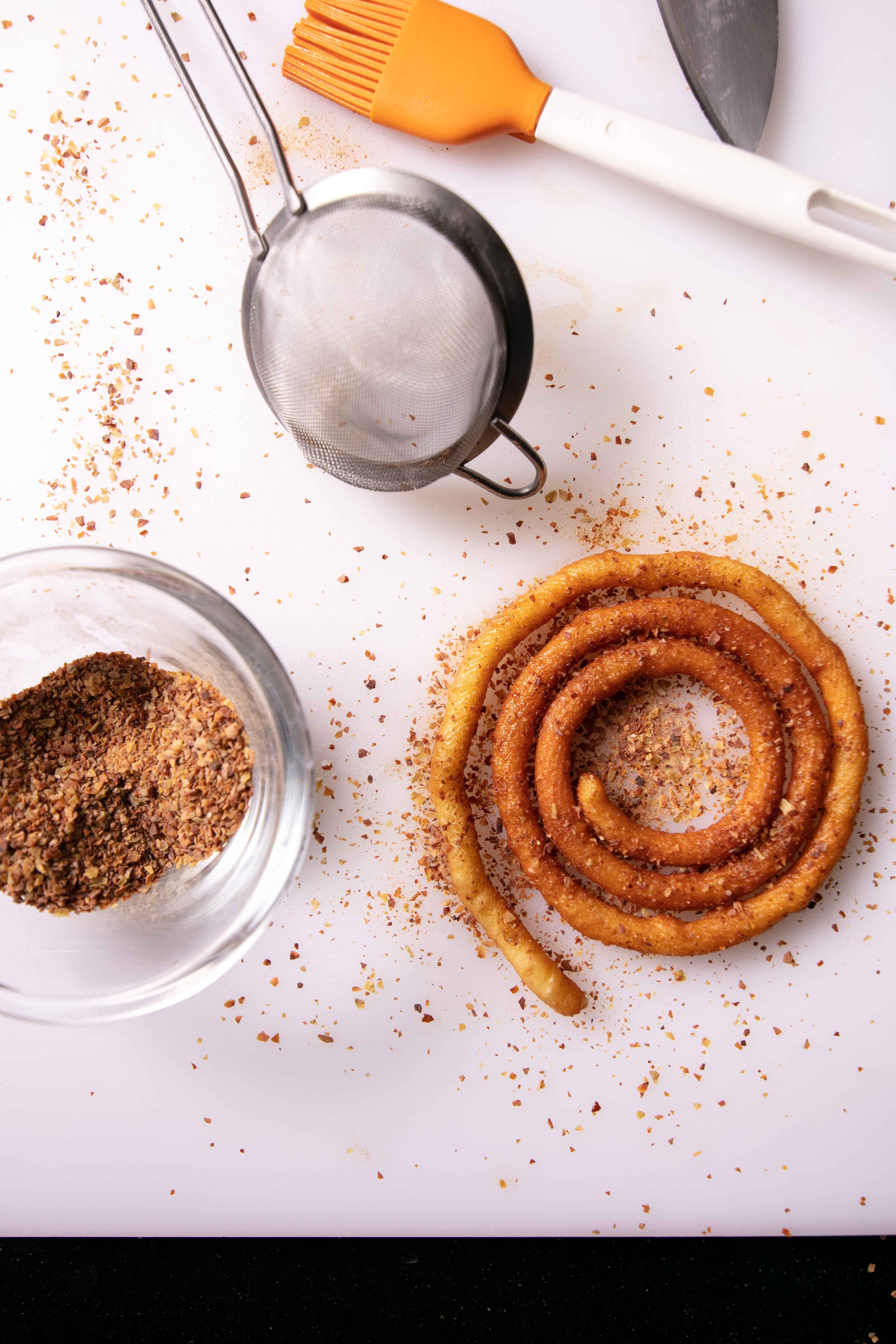
1. Heat the oil in a frying pan to 180-200 C, making sure that the oil covers your churros when frying.
2. Make spirals of the churros dough to the oil (WARNING! there is often air trapped in the piping bag, and when you push pop out into the very hot oil and splash. Be very careful and do not push the mixture out too hard).
3. When its golden brown and crispy, place them on paper towels to dry.
4. When we are ready with the churros, powder the half of the potato skin chips, and set it aside before plating.

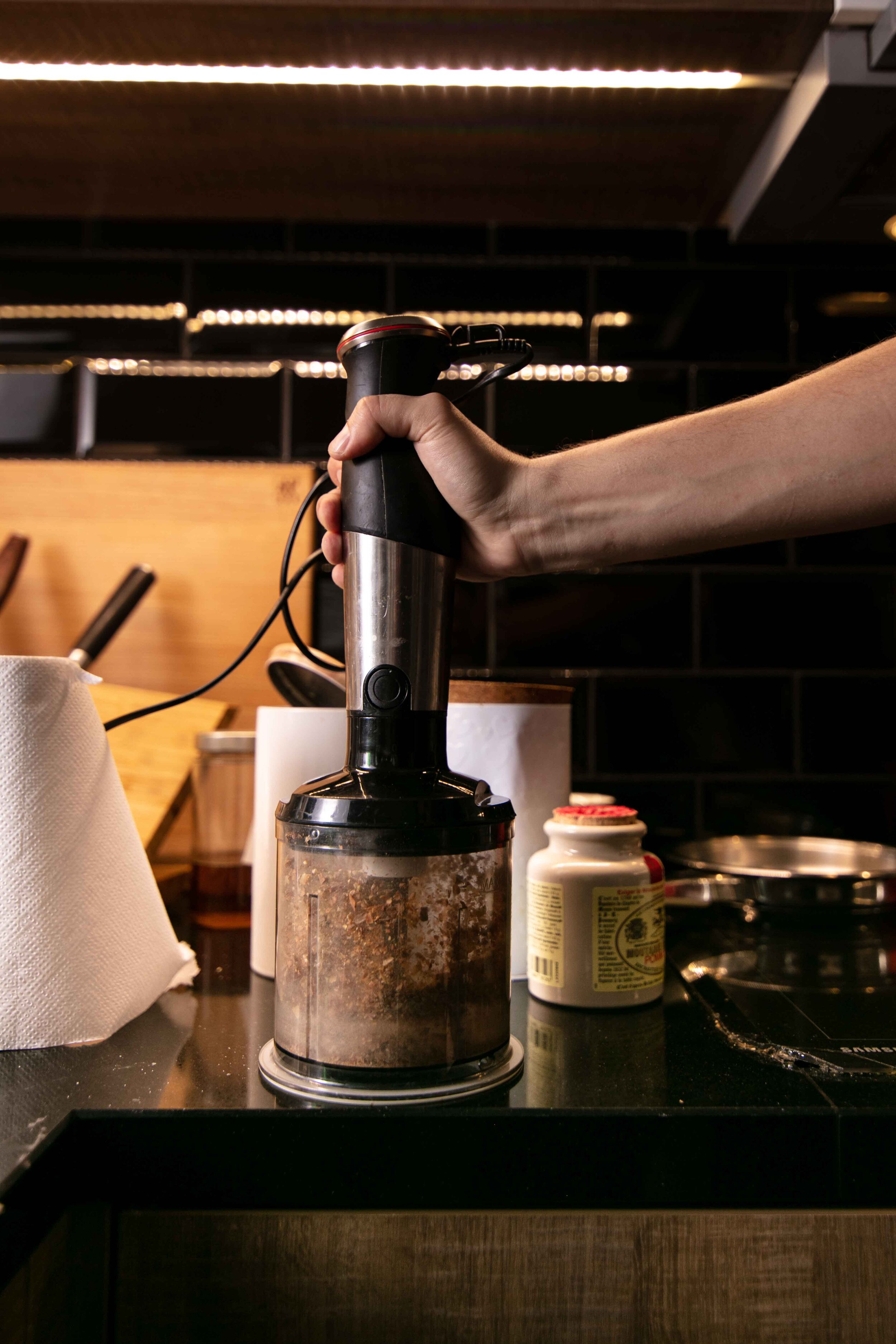
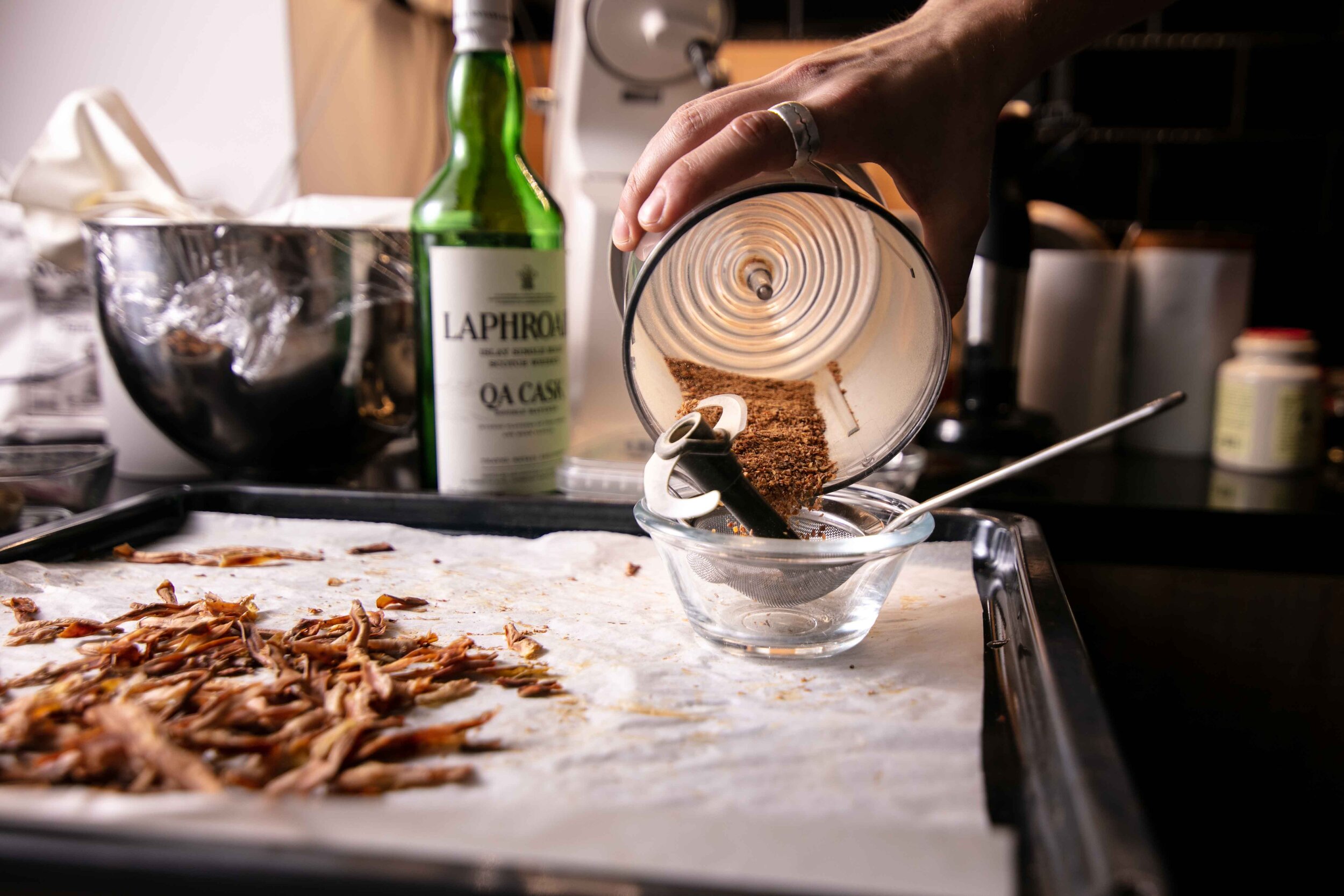
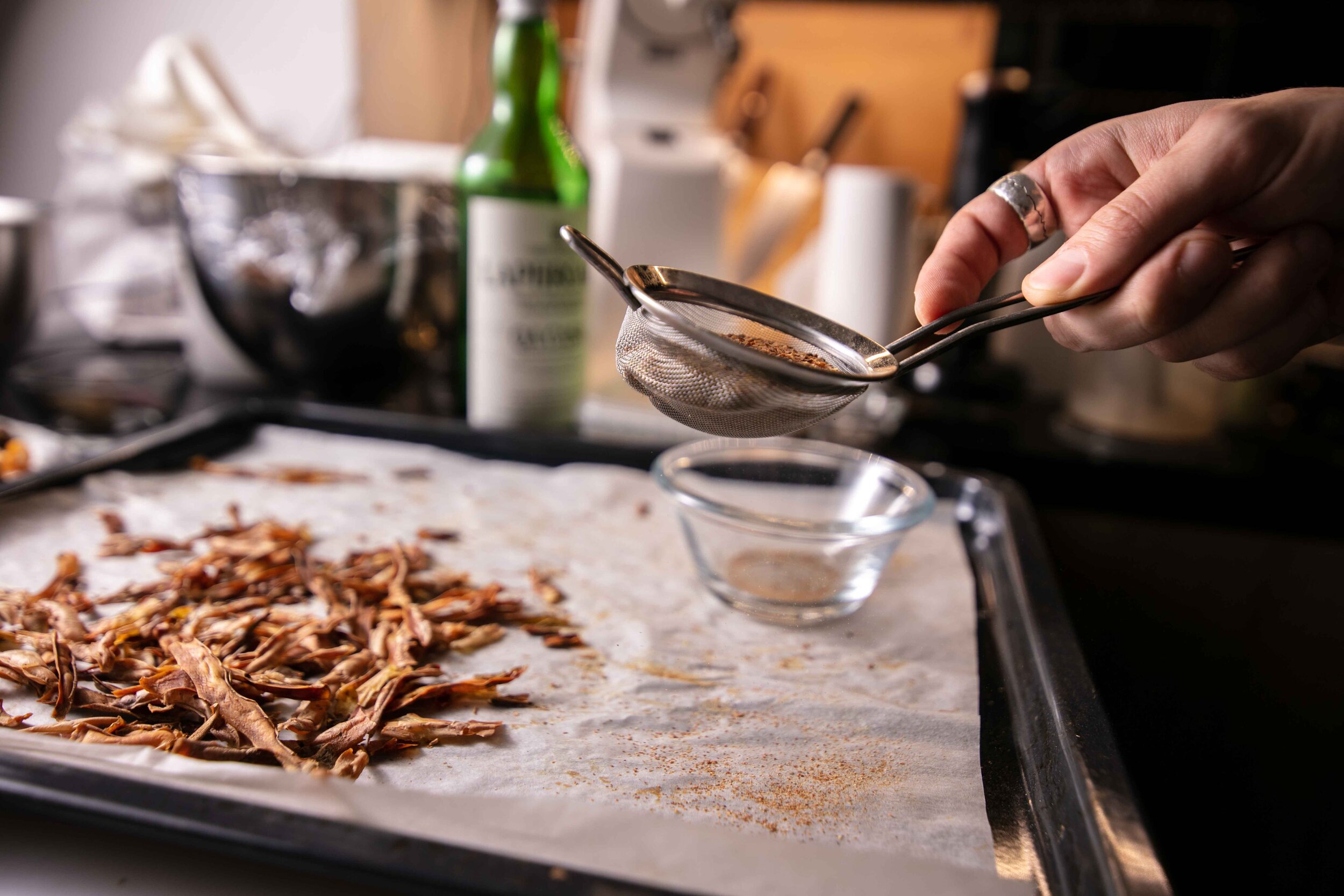
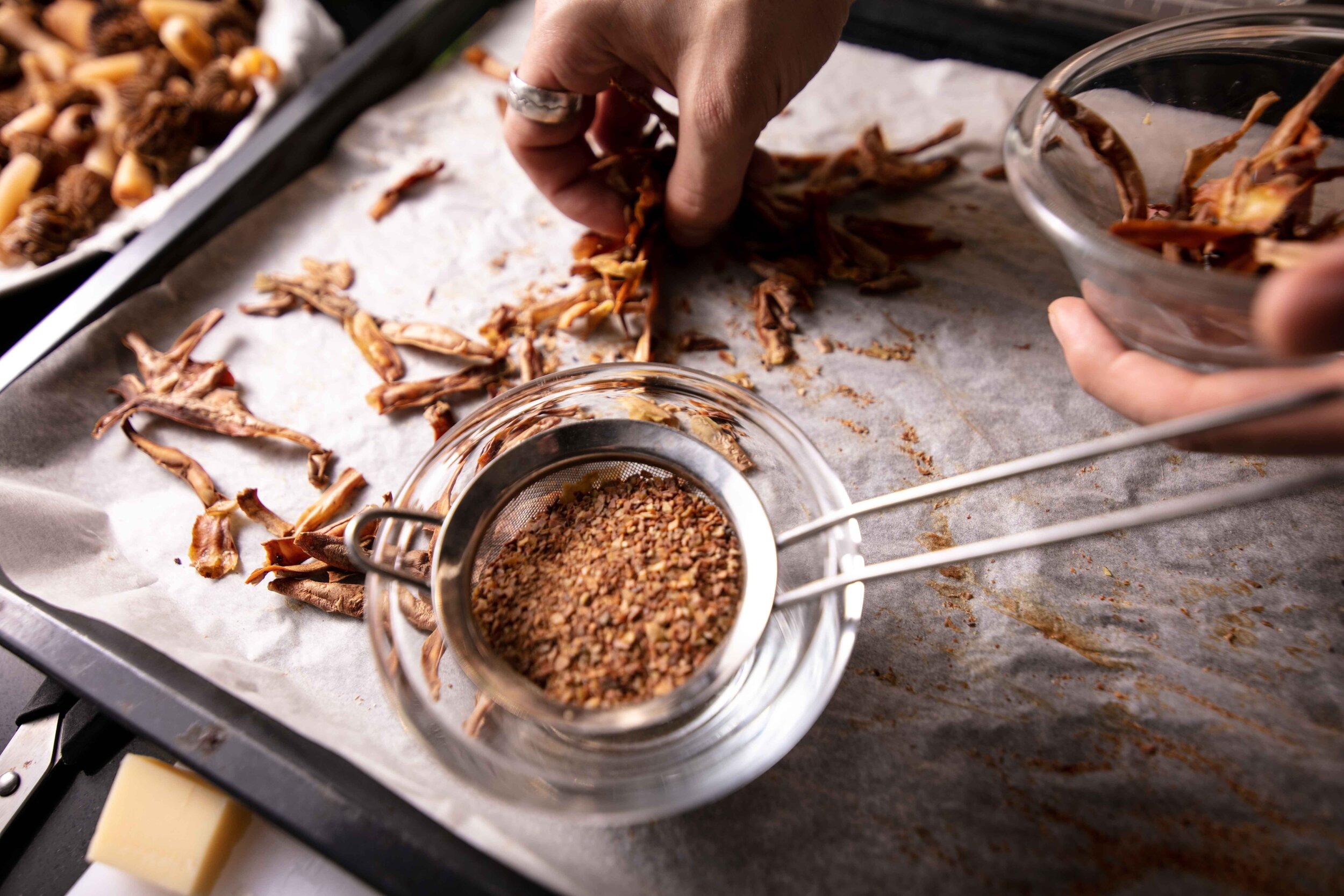
Once you have done this, start preparing the asparagus and morels as we will fry the churros right before we finish the steak – the last part of our menu.
The Asparagus Salad
250 g Green Asparagus (you can use white if you prefer, but the colours are more enticing with the green)
For blanching asparagus:
Pot of Water
1 Teaspoon Soda Bicarbonate
Makes 5 Portions.
For the Vinaigrette:
30 g Good Apple Cider
90 g Rapeseed Oil
To Taste: Sea Salt
Makes 5 Portions.
Prepping the Asparagus
This early in the season you can use the thicker asparagus as it is easier to mandolin. Do have some ice ready for cooling immediately after blanching – more on that below:
1. Break -yes, break, not cut – the woody part of the stem. Feel along the asparagus until you can see that it will snap and break off the woody part.
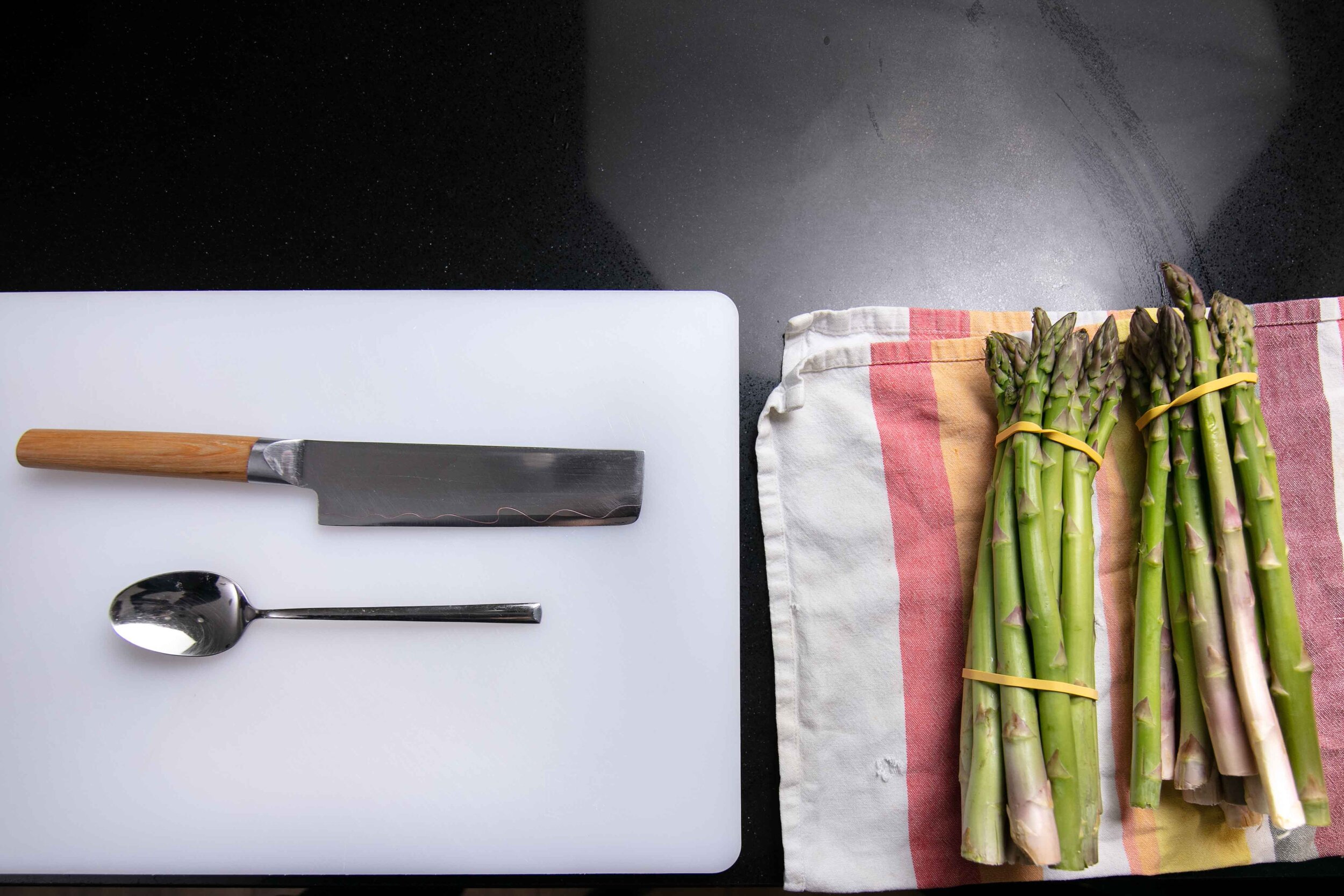

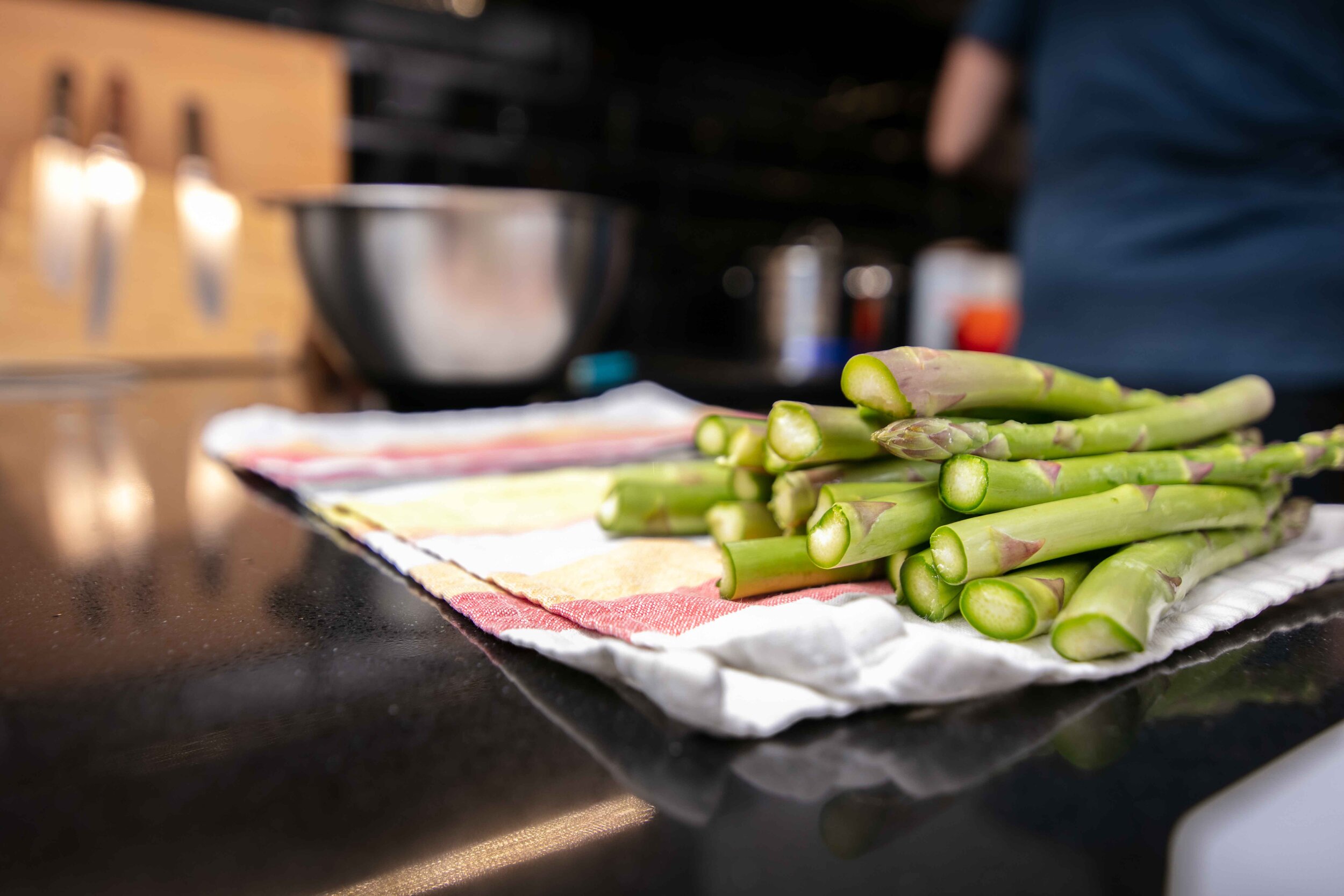
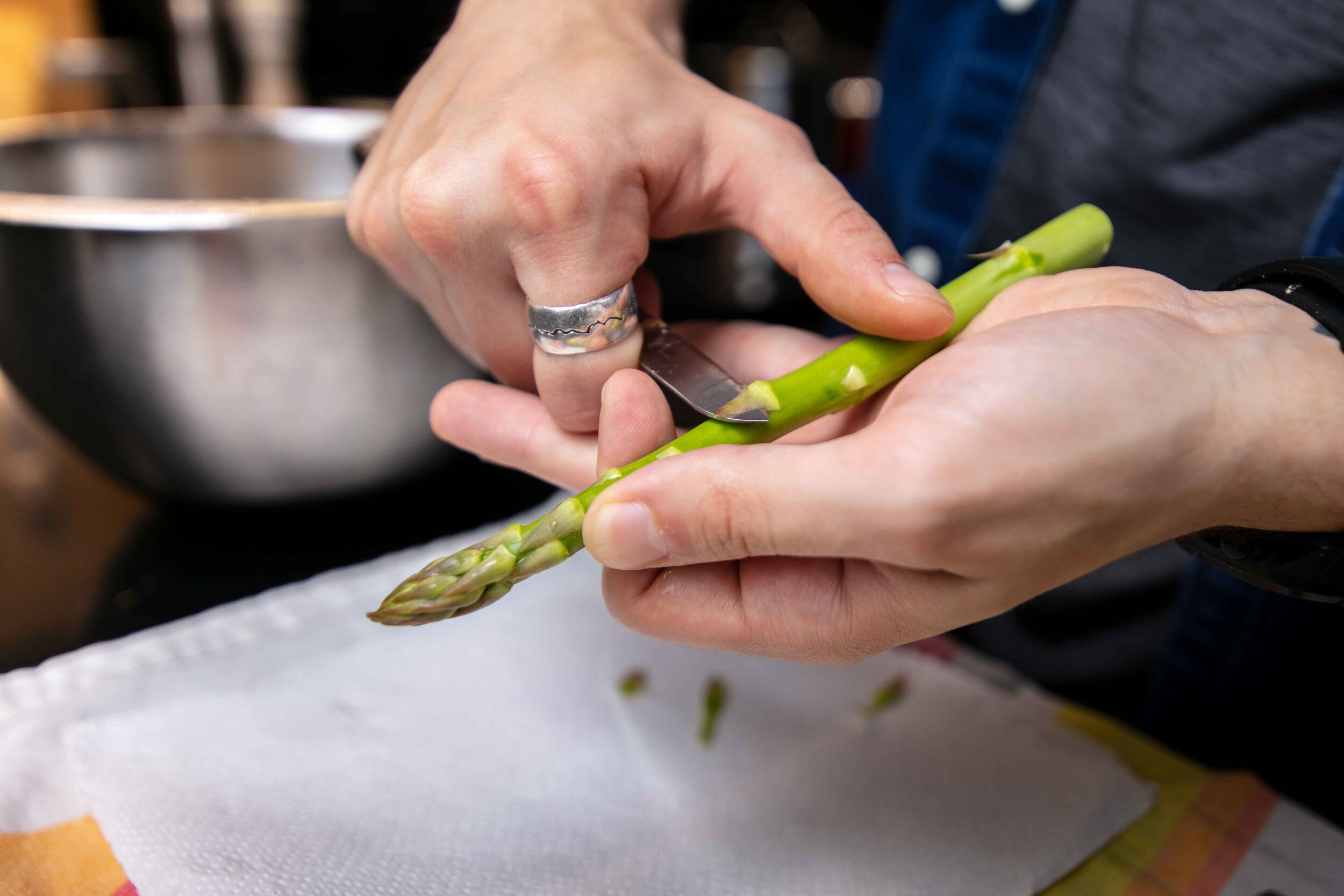
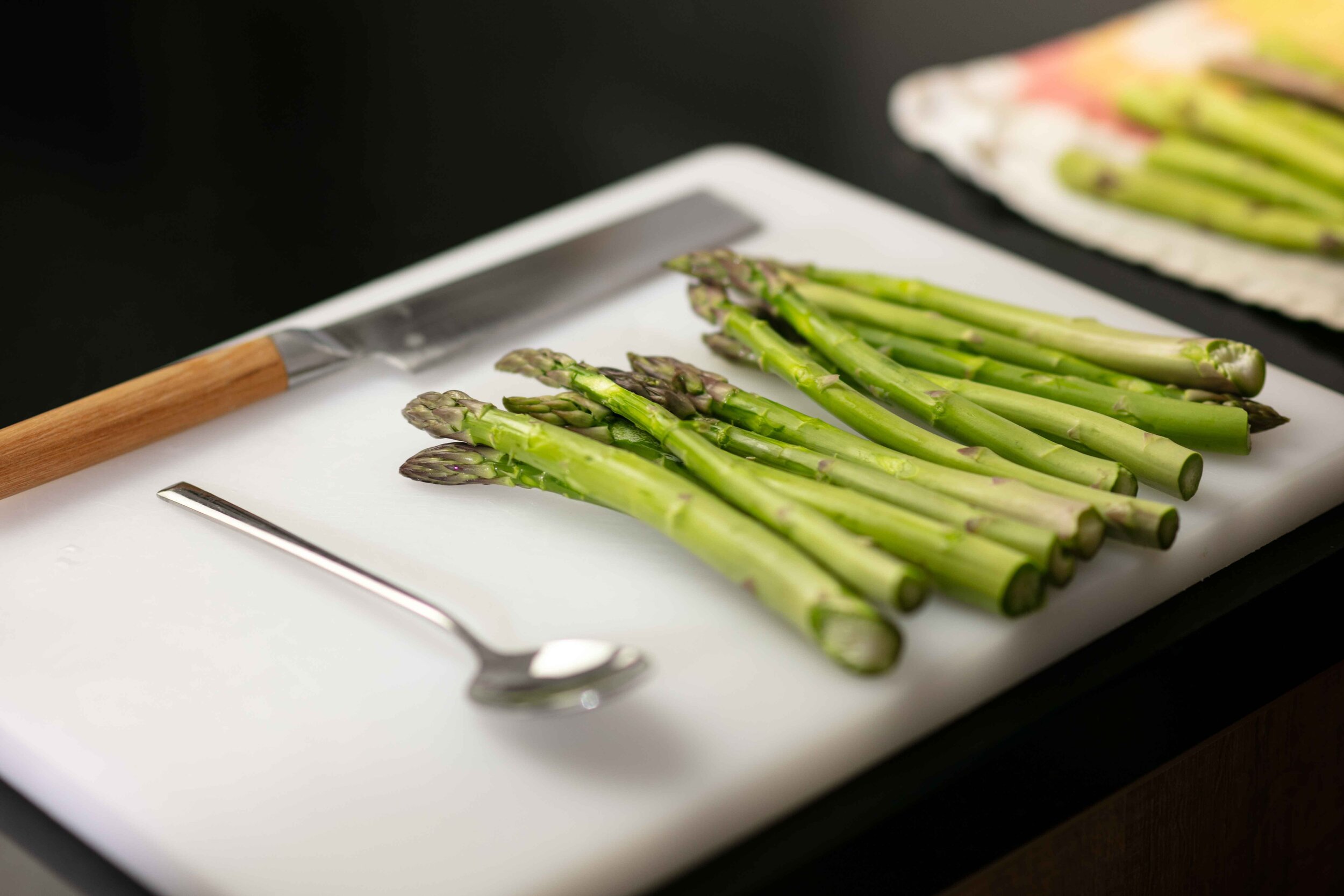
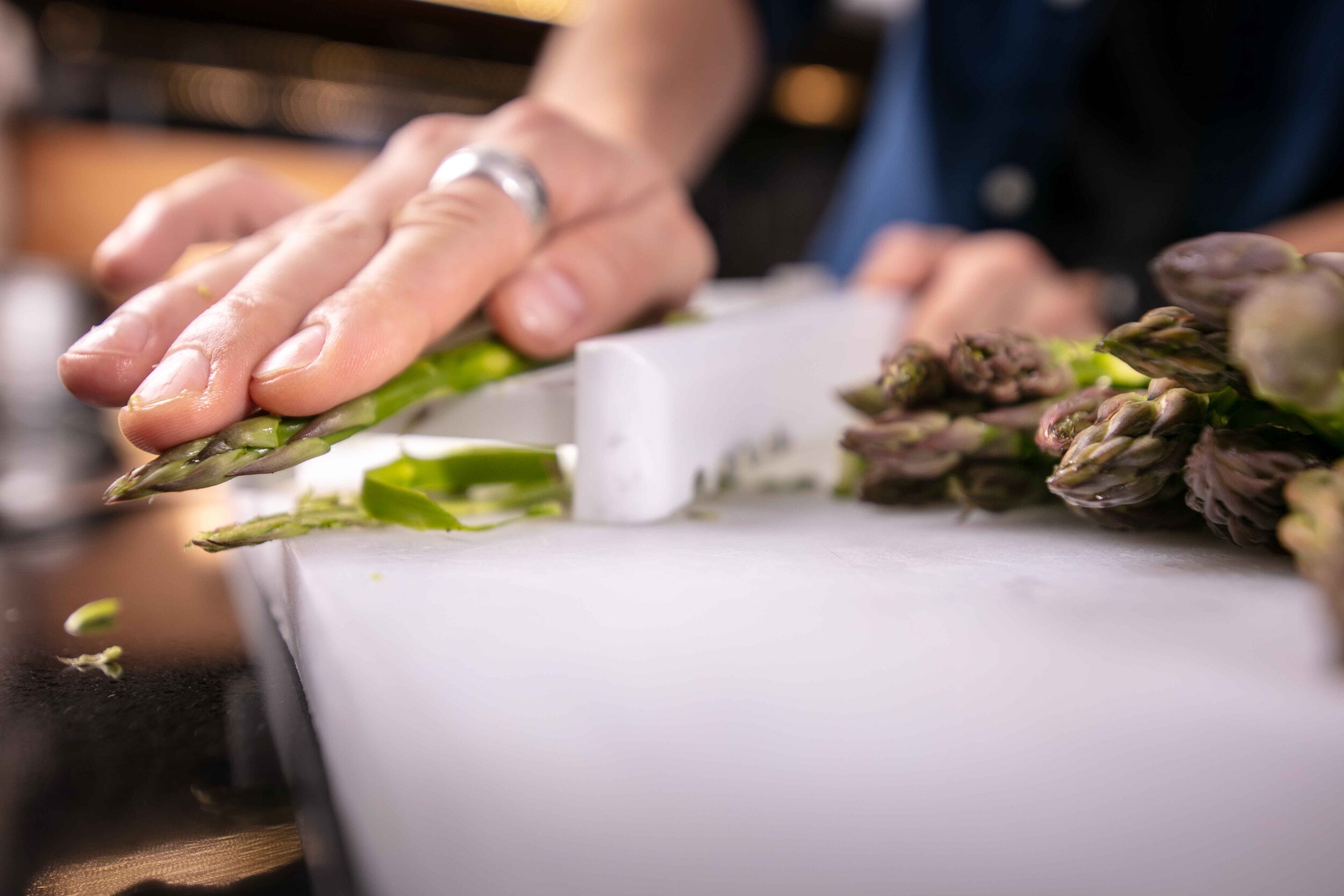
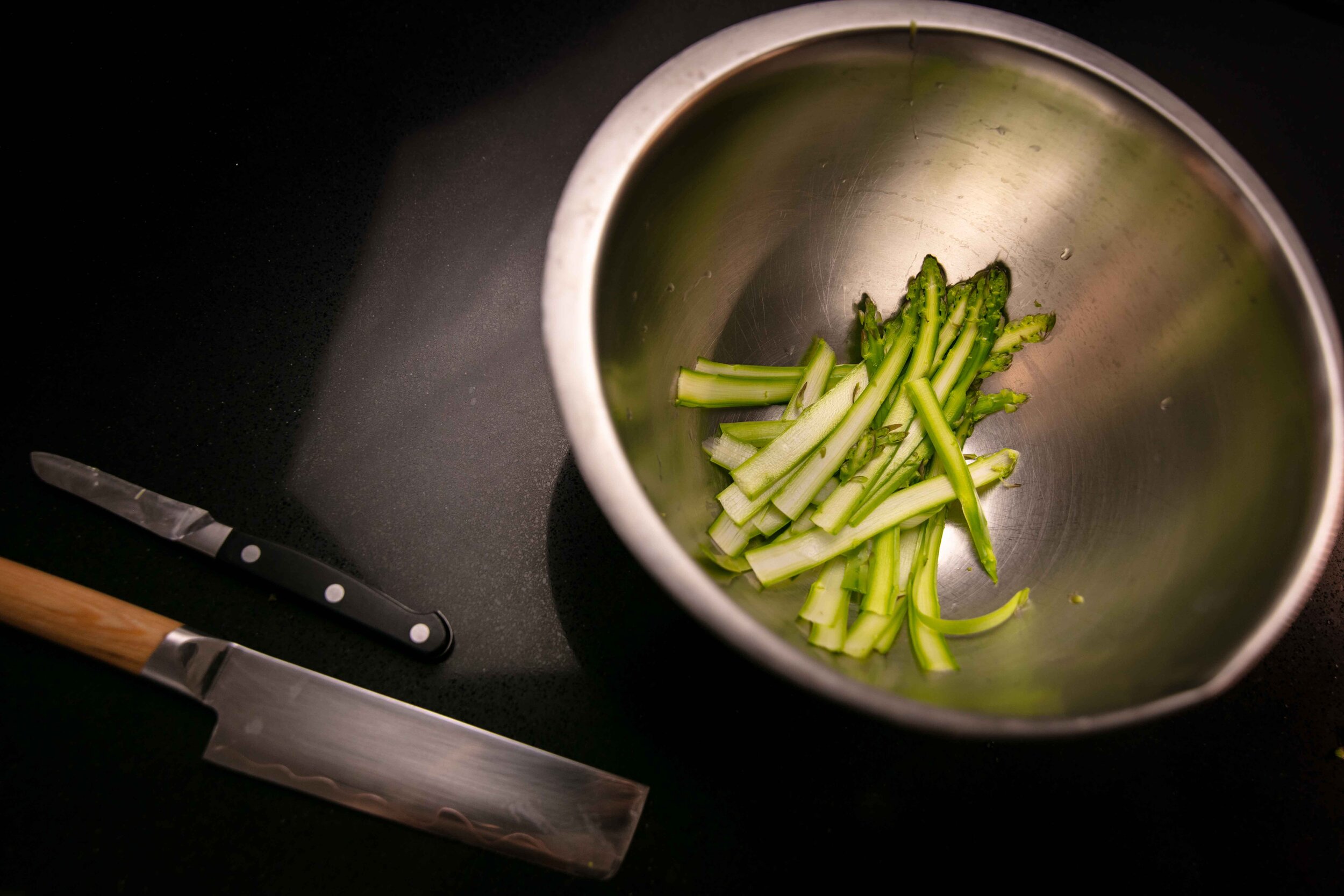
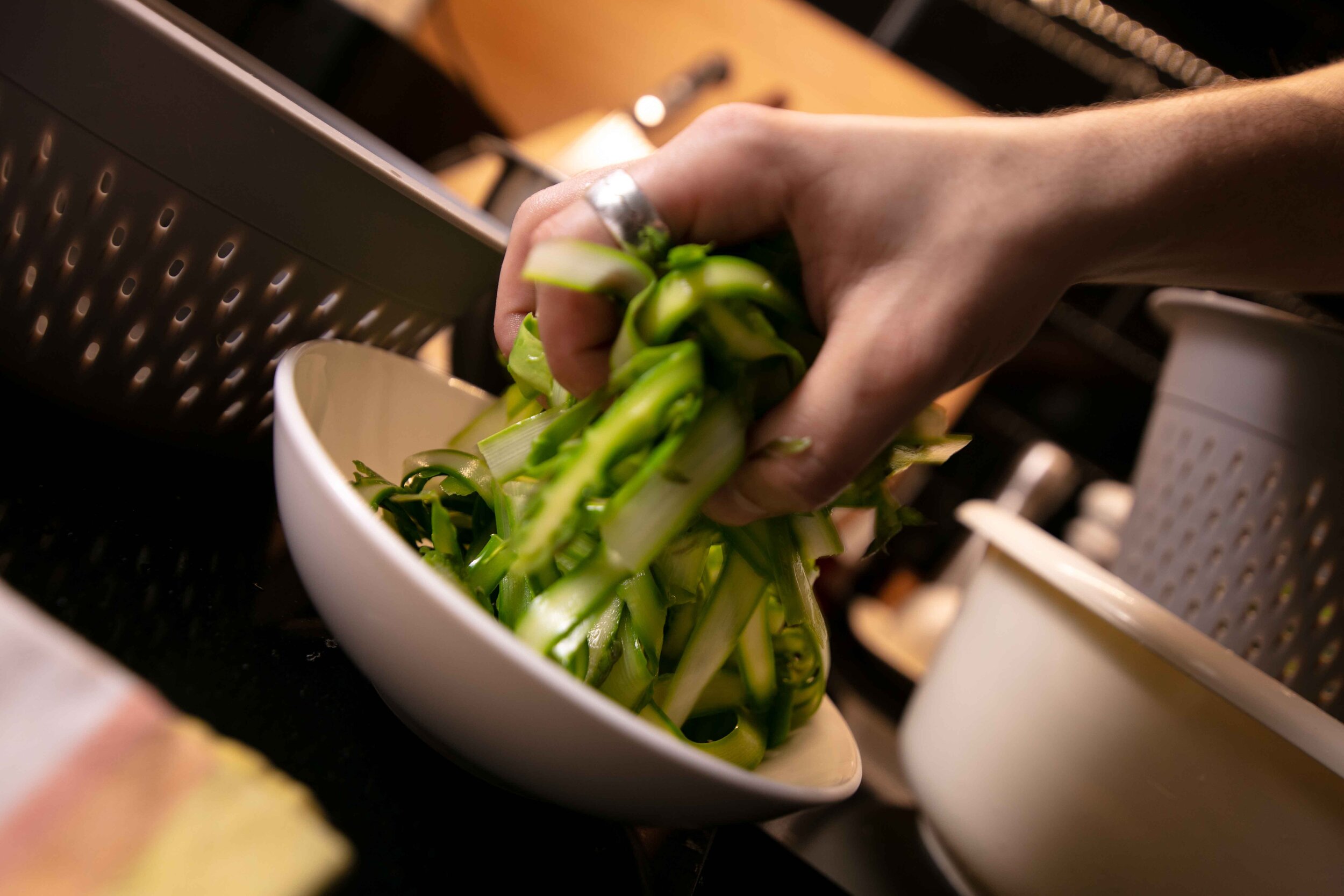
2. Then we cleaned the asparagus, removing the leaves (small bitter spikes on the side of the asparagus with a paring knife).
3. Slice the asparagus using a mandolin[2]
4. When you are ready to blanch the asparagus, make sure to have a bowl of ice water ready to cool the cooked asparagus down immediately.
5. Place the asparagus into boiling water with the soda bicarbonate (this will ensure that your asparagus stays that vivid fresh green colour and does not fade into a forest brown).
6. Blanch for just 10 seconds at most then immediately place in the ice water to stop the cooking process, drain (and this is where your salad centrifuge can come in handy – place in centrifuge and gently dry and place on kitchen towels), and set aside in fridge for the vinaigrette to be added right before plating to maintain the fresh crispy flavour of the asparagus.
The Vinaigrette
Add the ingredients together in a blender and emulsify, adding salt to taste. Remove once emulsified and place in the fridge in a sealed container.
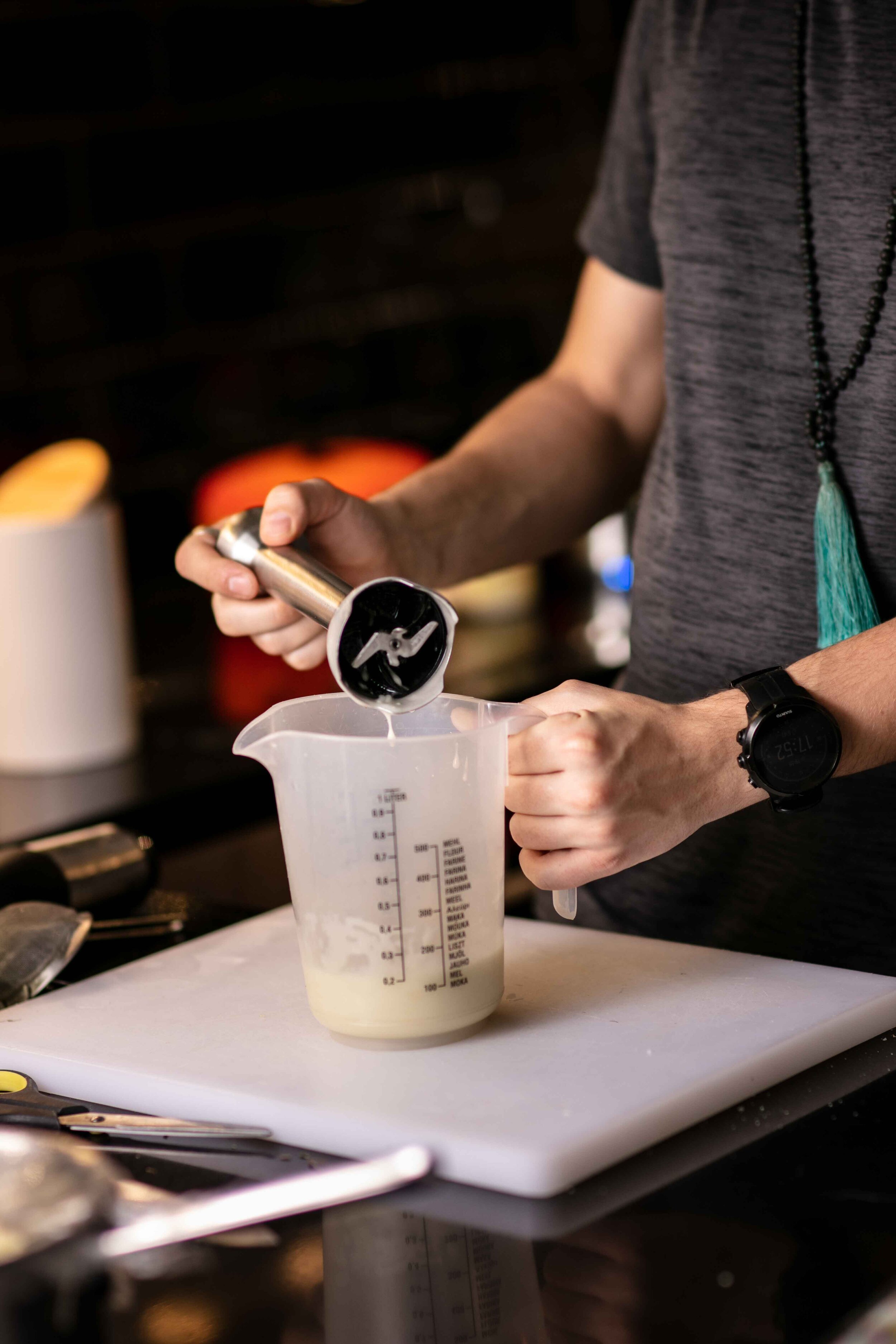
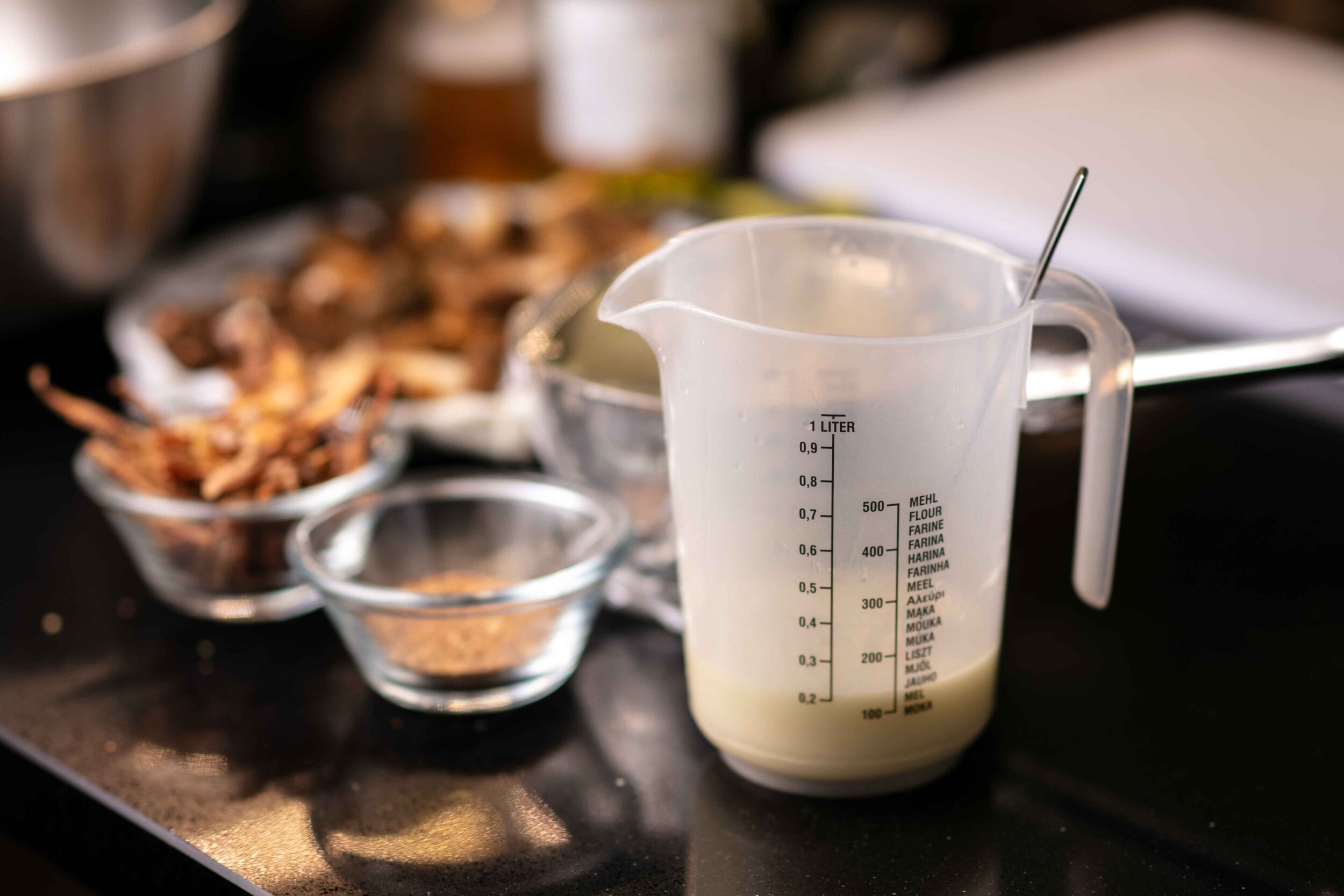

The Morels (for 5 portions)
Early Morels
200 g Fresh Morel Mushrooms
1.5 Tablespoons (TBSP) Rapeseed Oil
To Taste: Sea Salt
Makes 5 Portions.
Prepping the Morels
Morels, known as Morchella, are some of our favourite mushrooms and we were lucky with the weather and found some fresh spring early morels at the market.
Traditionalists say that Morels should not be cleaned, or if cleaned, a soft brush is all that is required, to get the dirt off. However, we disagree.
In our opinion, no matter how much one cleans them (without water), you will always get some grit (early morels here in Hungary are normally found on the sandy banks of the Danube and tend to be a little gritty, while the second flush of morels are normally found at the edge of meadows where the treeline of the forest begins – we will do a post especially for mushroom picking and cooking as soon as weather permits!).
We suggest washing them very quickly. Do not soak them!
Process in detail
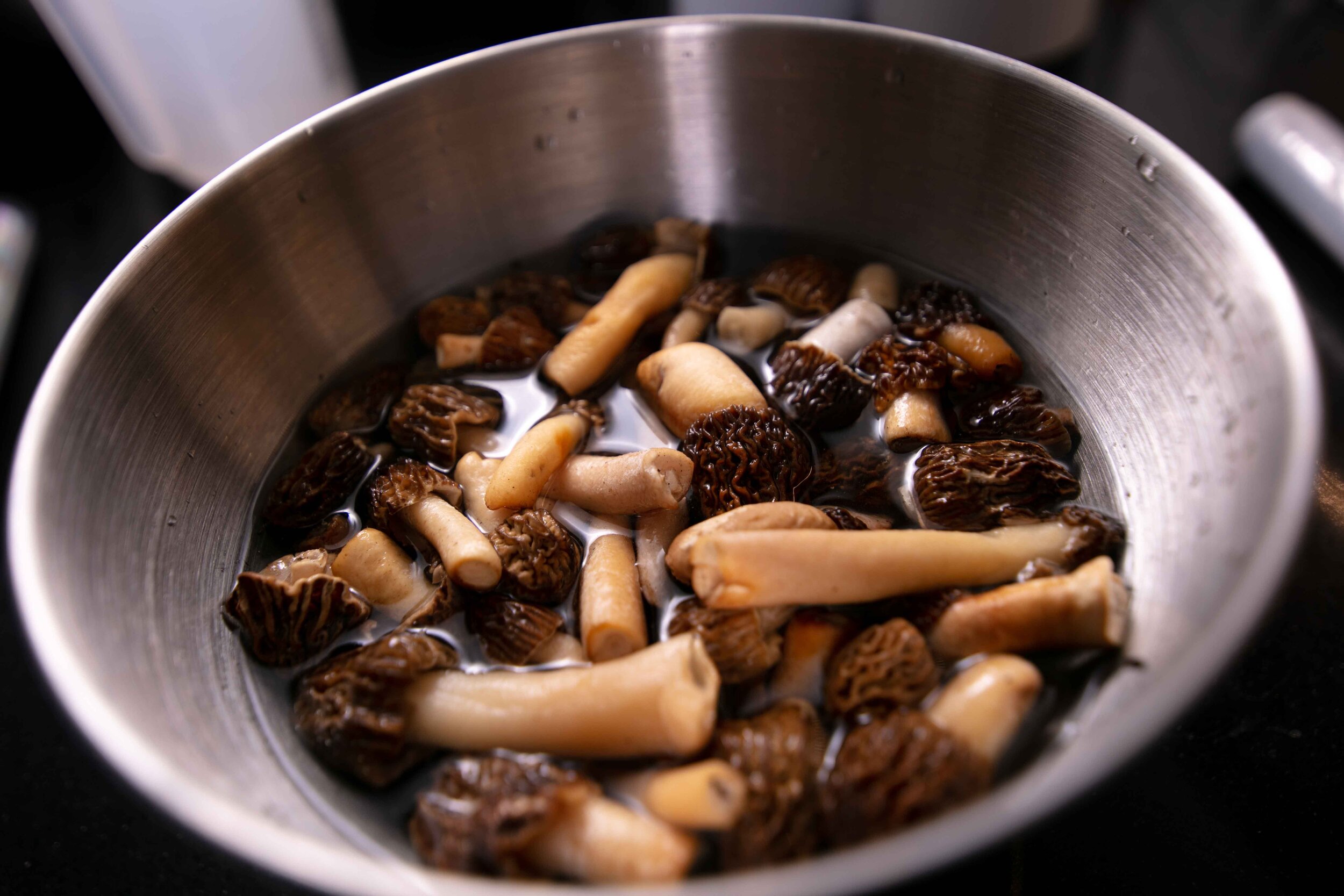
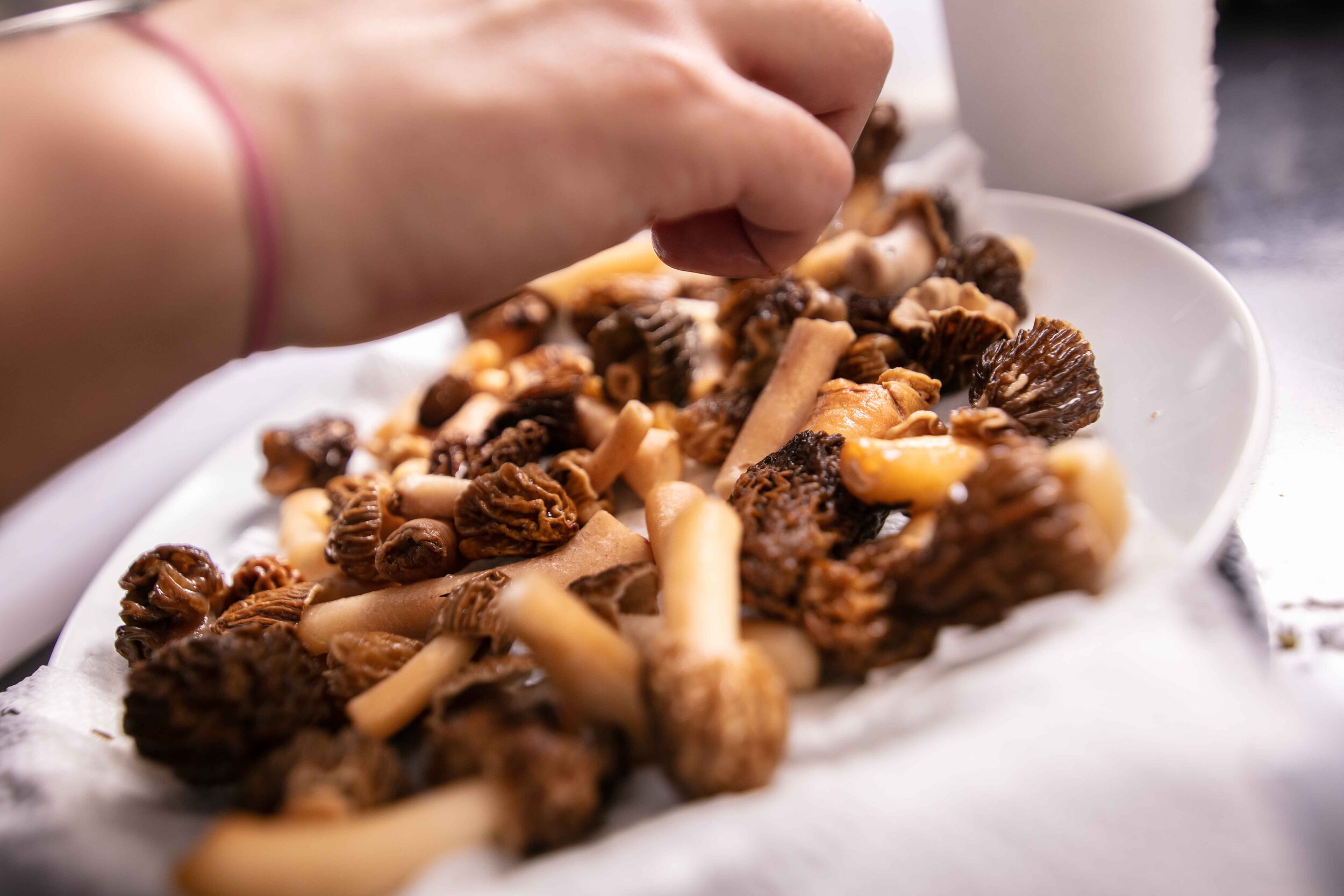
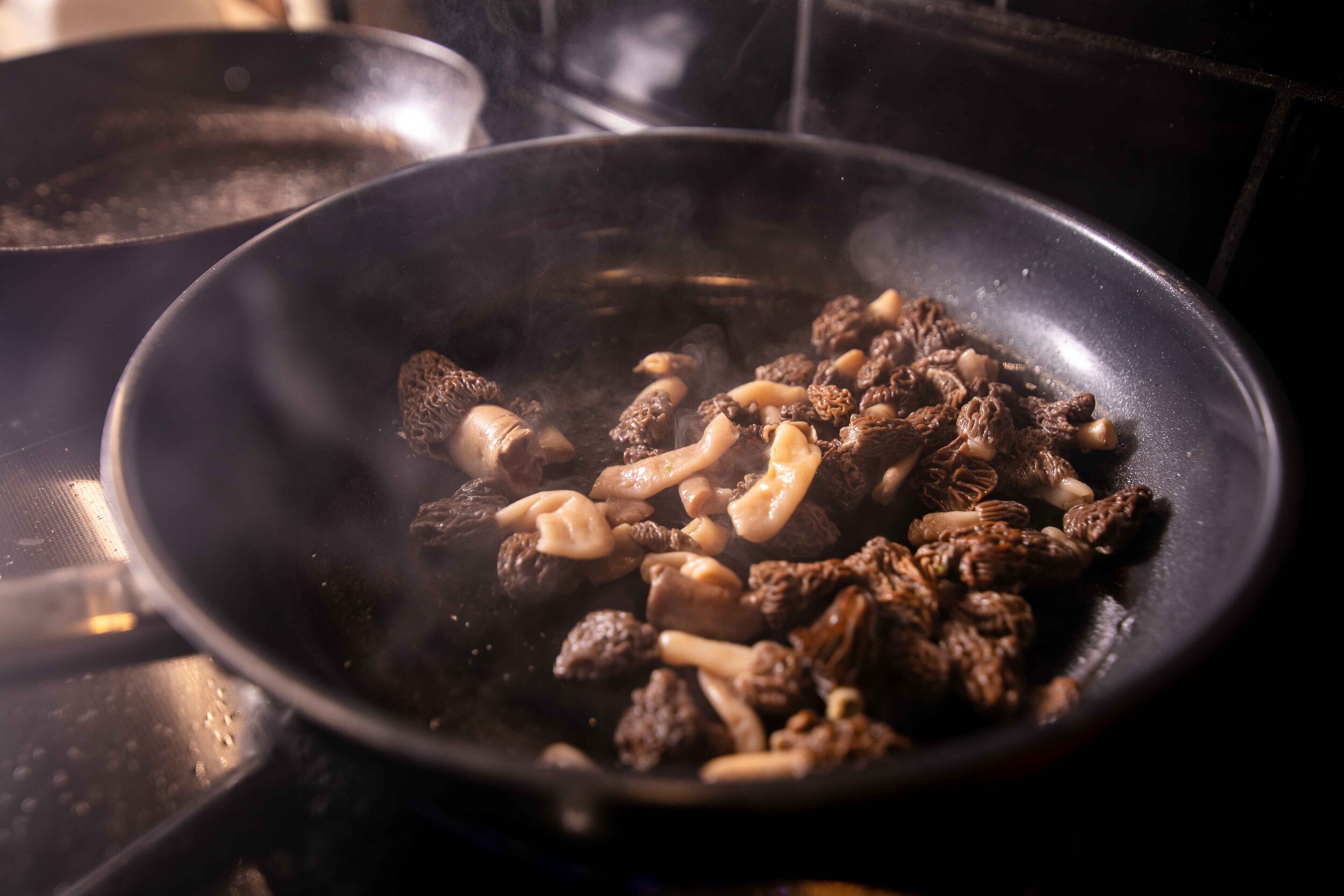
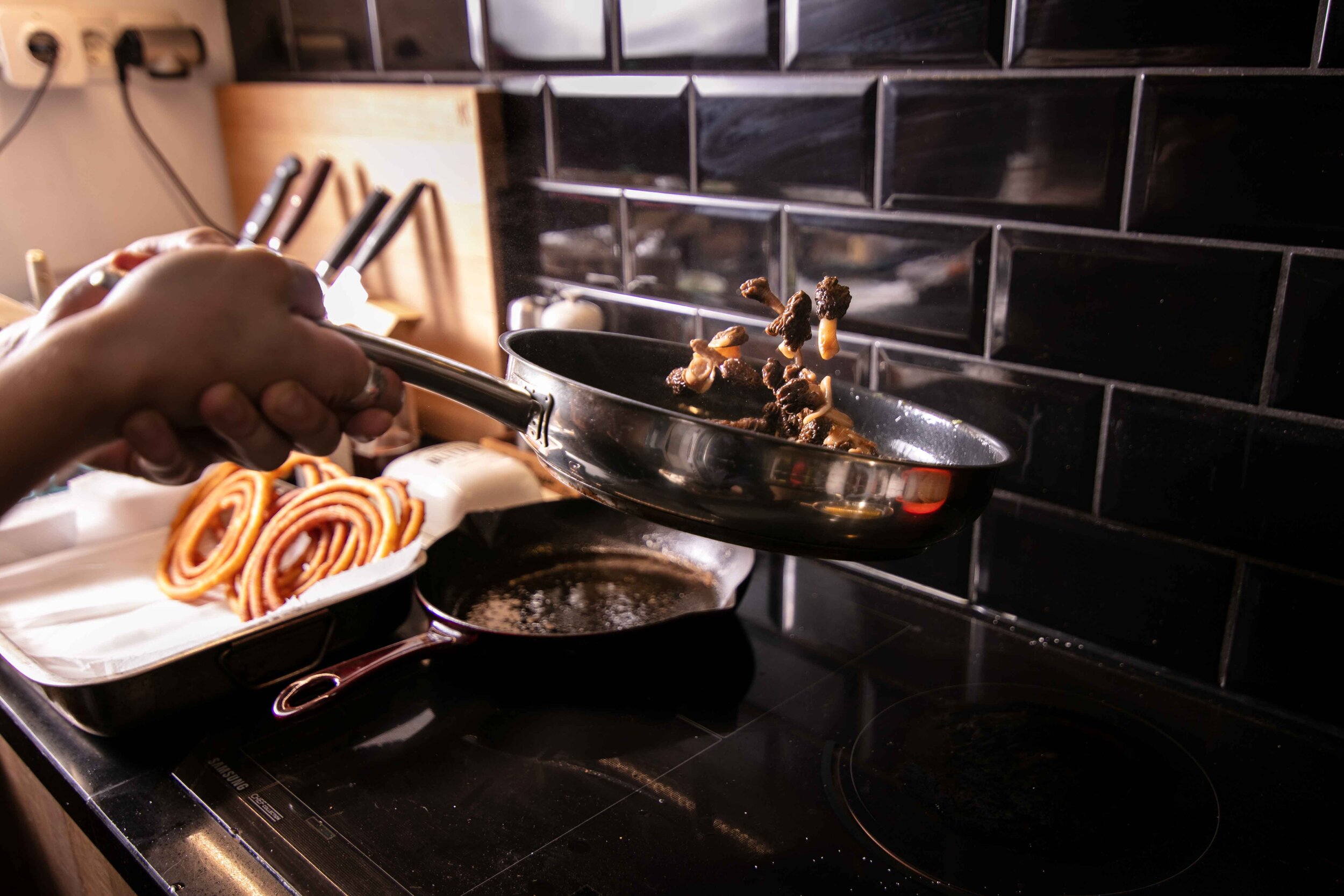
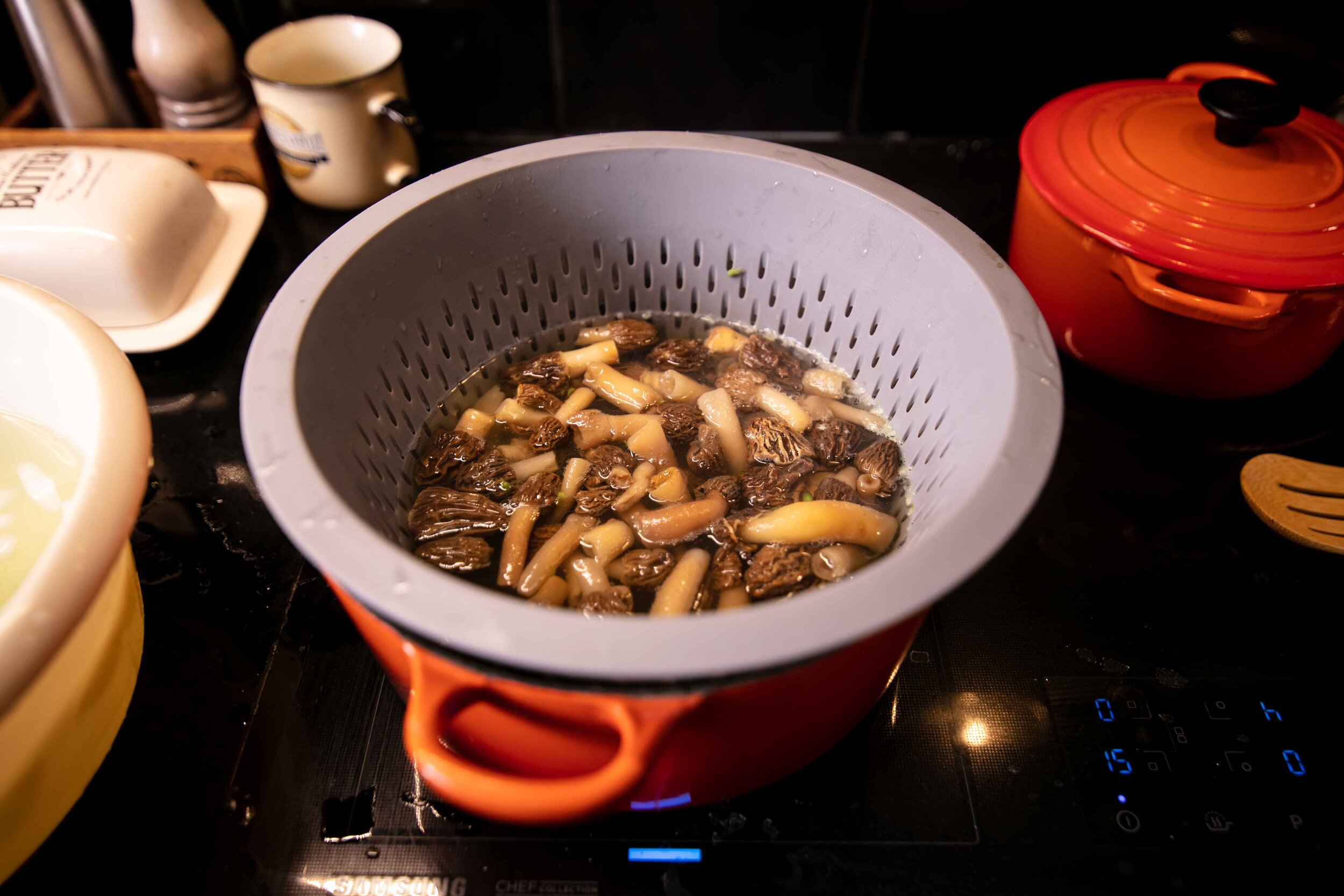
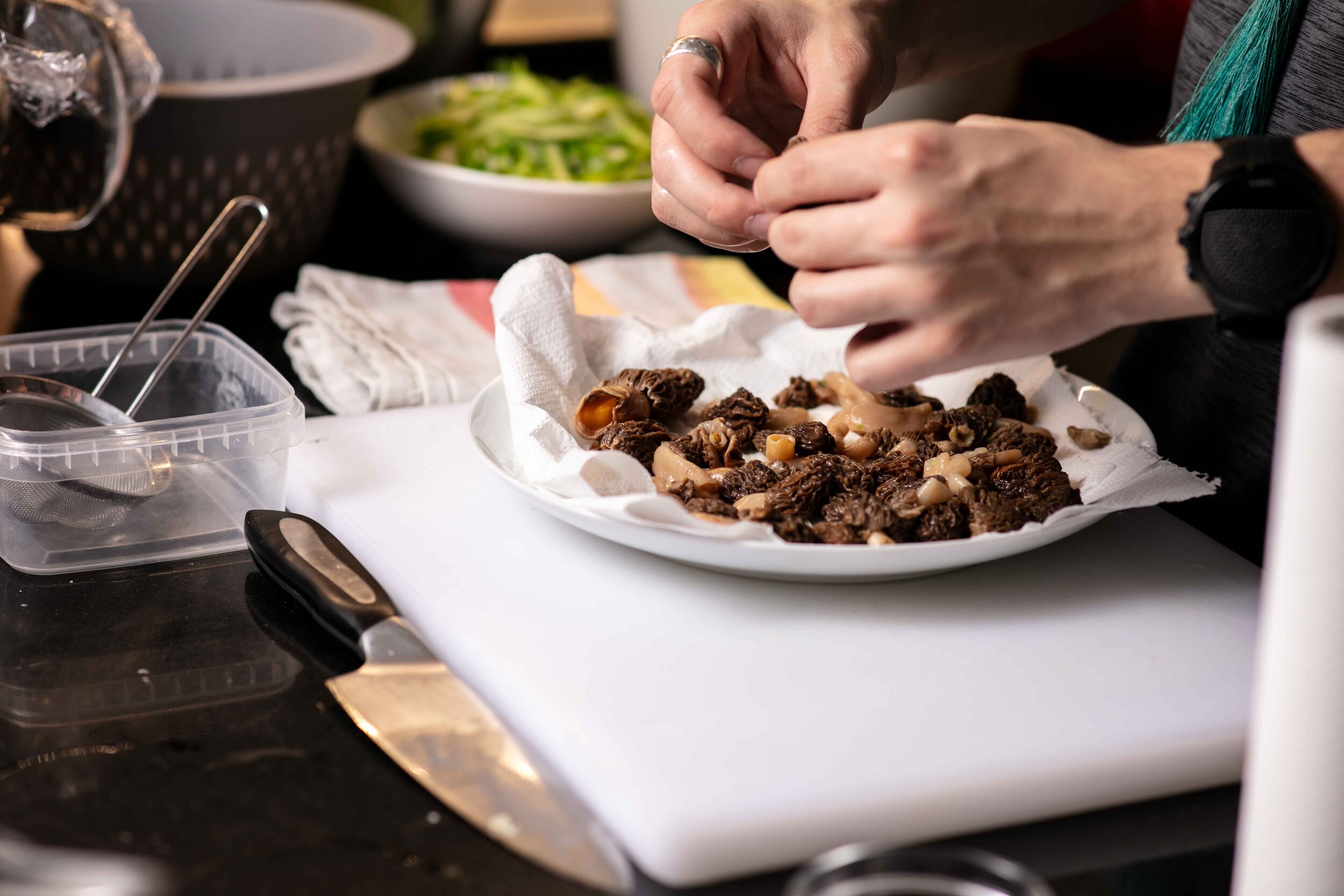

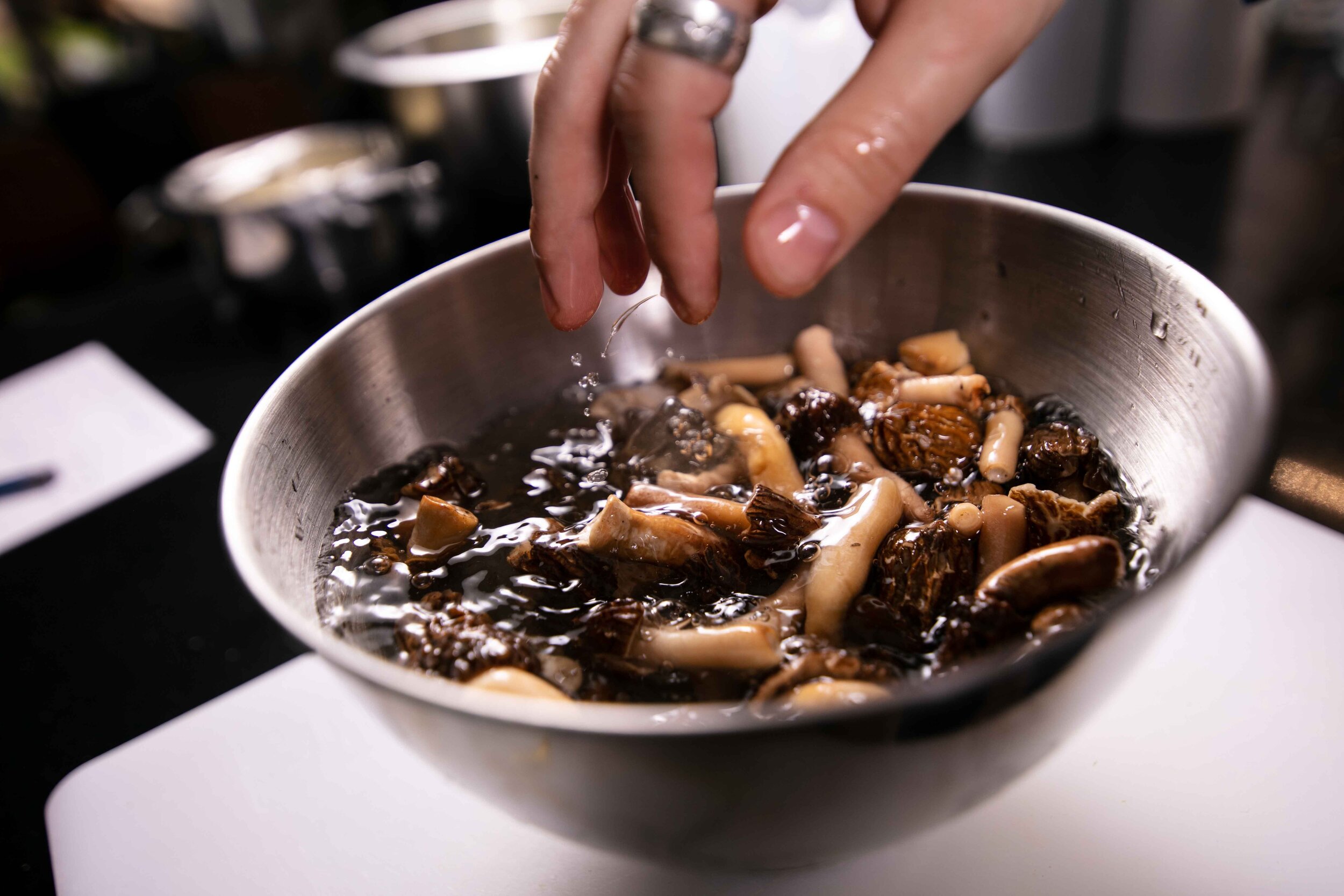
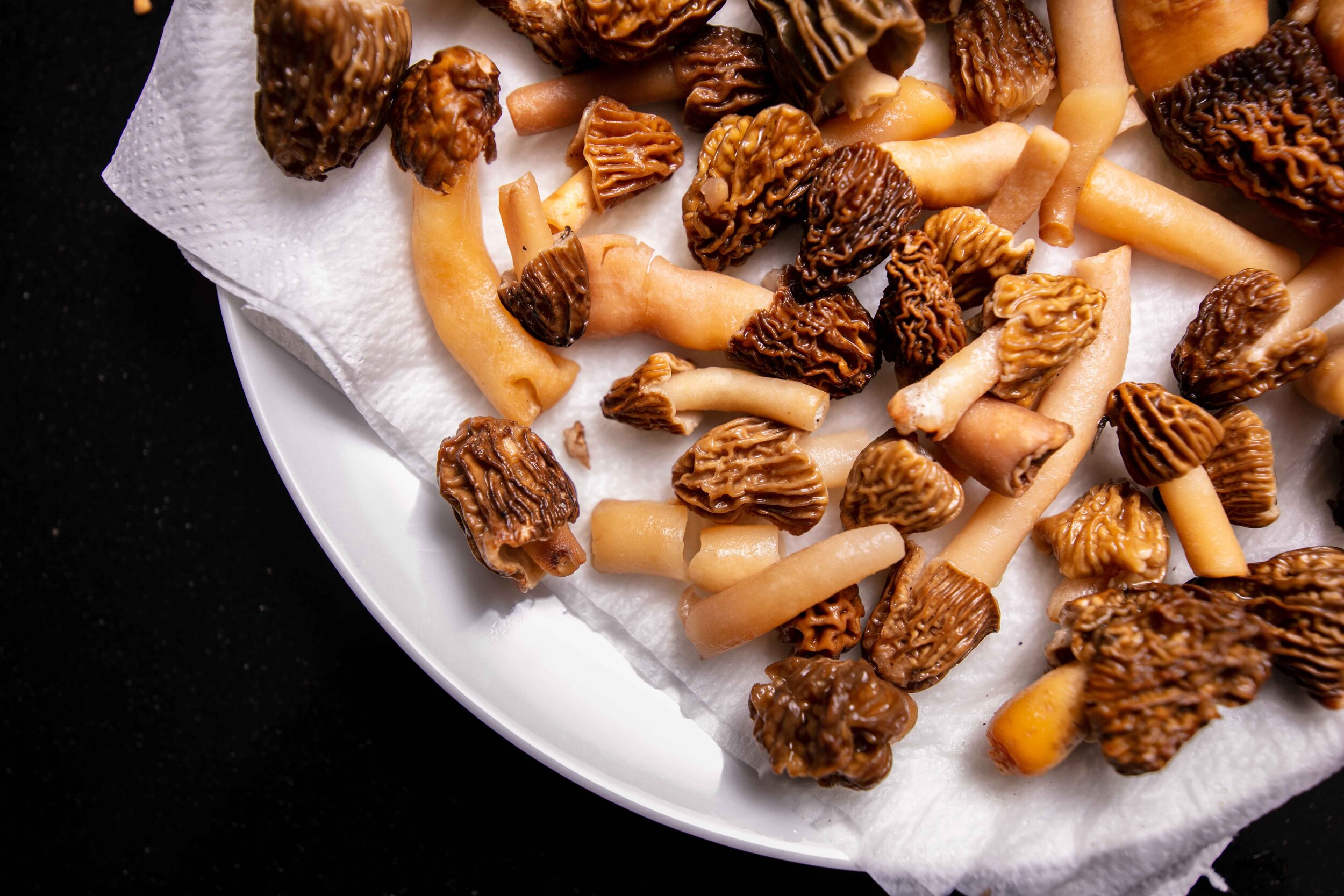
1. Place morels in a cold bowl of water and quickly try and get as much of the dirt out as possible (we use a new toothbrush which is in our mushroom “kit” – you can use any clean fine-toothed brush). Repeat this process twice and you will see the grit at the bottom of the water bowl – no one wants to be eating that!
2. Once they are clean, drain them and blanch them in boiling water for 30 seconds to 1 minute (depending on size), then immediately place them in icy water.
3. Once they are cold drain them, and dry on kitchen towels (a salad centrifuge also can be used here) and set aside.
4. When sautéing, make sure the pan is hot, add some rapeseed oil with some salt and pepper until its nice and brown just before plating.
The Sauce
Ingredients
To Taste: Ethiopian Highland Timiz Pepper
75 g Laphroaig QA Cask Single Malt (you can use any smoky whisky- preferably with a second maturity in charred barrels for that extra smoky flavour)
2 Shallots
2 Cloves of Garlic
110 g Double Cream
200 g Reduced Beef Stock [3]
1 Heaped Teaspoon (TSP) French Meux Mustard
To Taste: Sea Salt
Sprig Fresh Thyme
Process in detail:
1. Chop the shallots finely and add to a saucepan with a dash of oil. Fry on a gentle heat until clear.
2. Add the garlic and gently heat, careful not to burn the garlic yet remove the raw garlic taste.
3. At this stage, we add the whisky and flambe – be careful when doing this as whisky has a high alcohol content and can flame a fair amount!
4. Once we have removed the alcohol, we add the thyme and stock, Timiz pepper (grated to taste), and cream and reduce this on a gentle simmer by half or until it gets to the desirable thickness.
5. As the final step strain the sauce and add the mustard to it and add salt to taste.
The sauce is one of the highlights of this menu: smoky, peppery, a hint of camphor from the Timiz pepper and fresh herb flavour of the thyme. Do sieve the sauce and set aside before warming gently prior to plating up.
Searing & finishing the Wagyu
On a Cooker
Keep the oven on at 50 C fan, so that we can place the seared steaks in there to stay warm and soak up all the juices while we plate up and do the final prep.
Remember to have a meat thermometer at hand to check your steak’s core temperature to get that perfect finish:
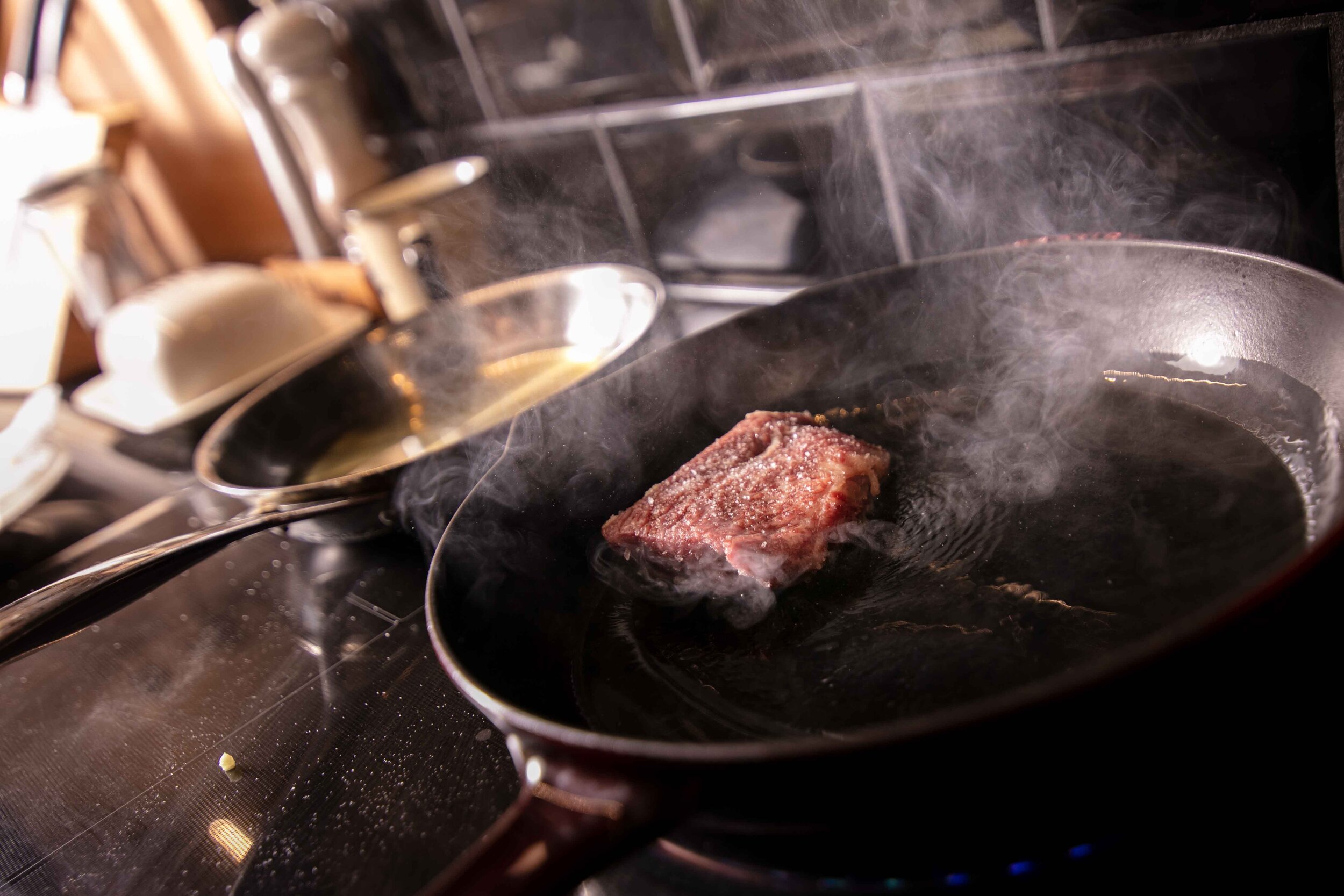
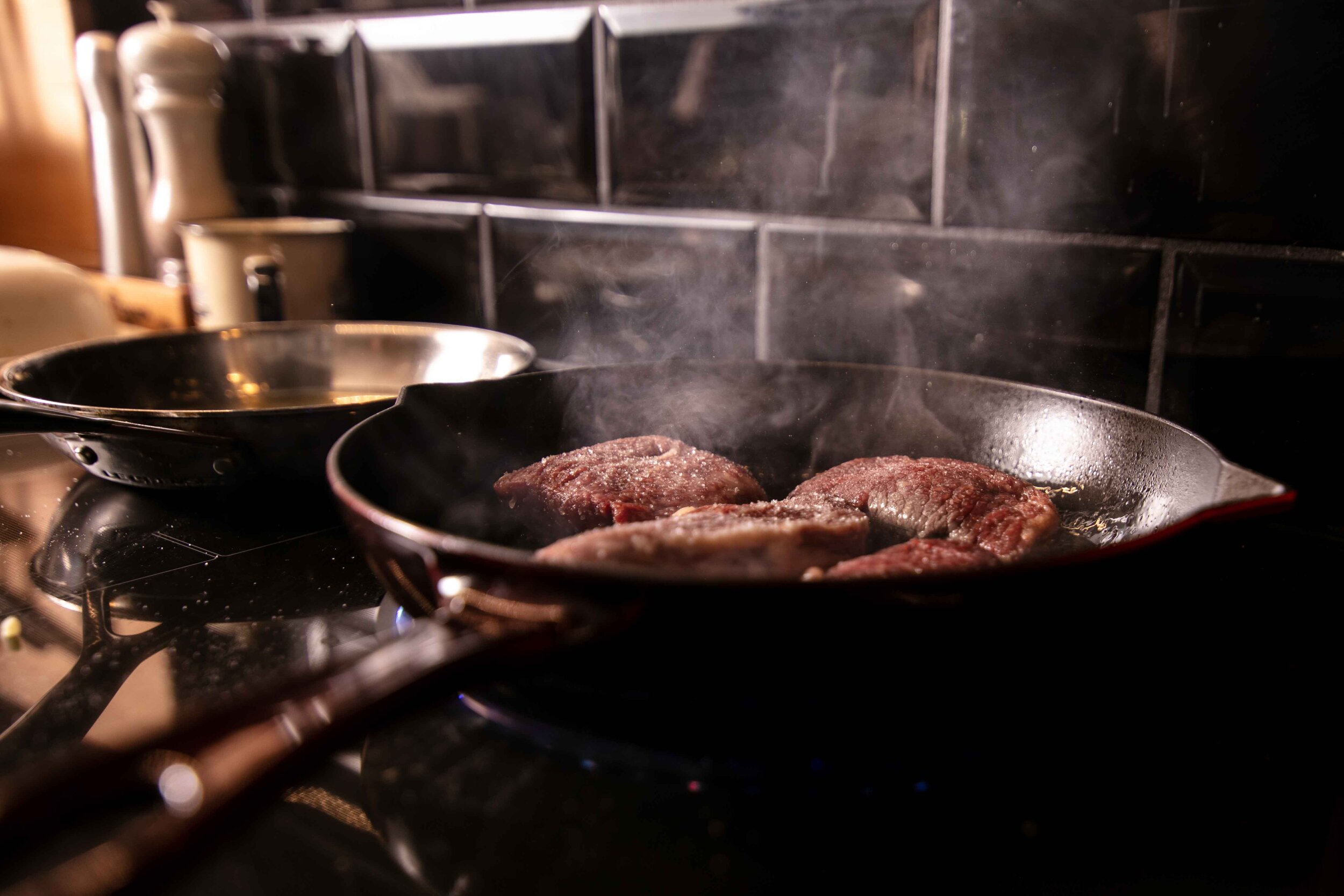
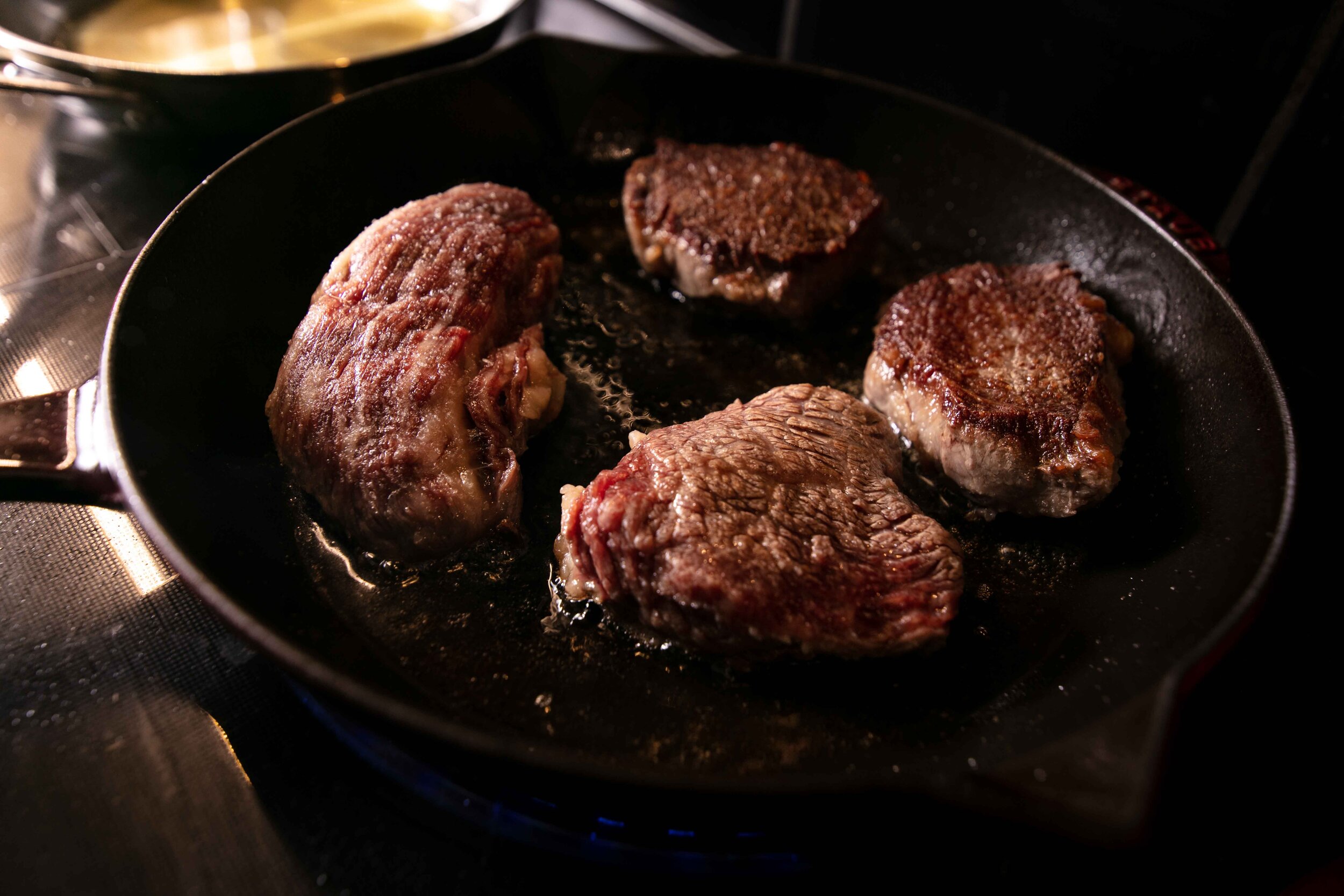
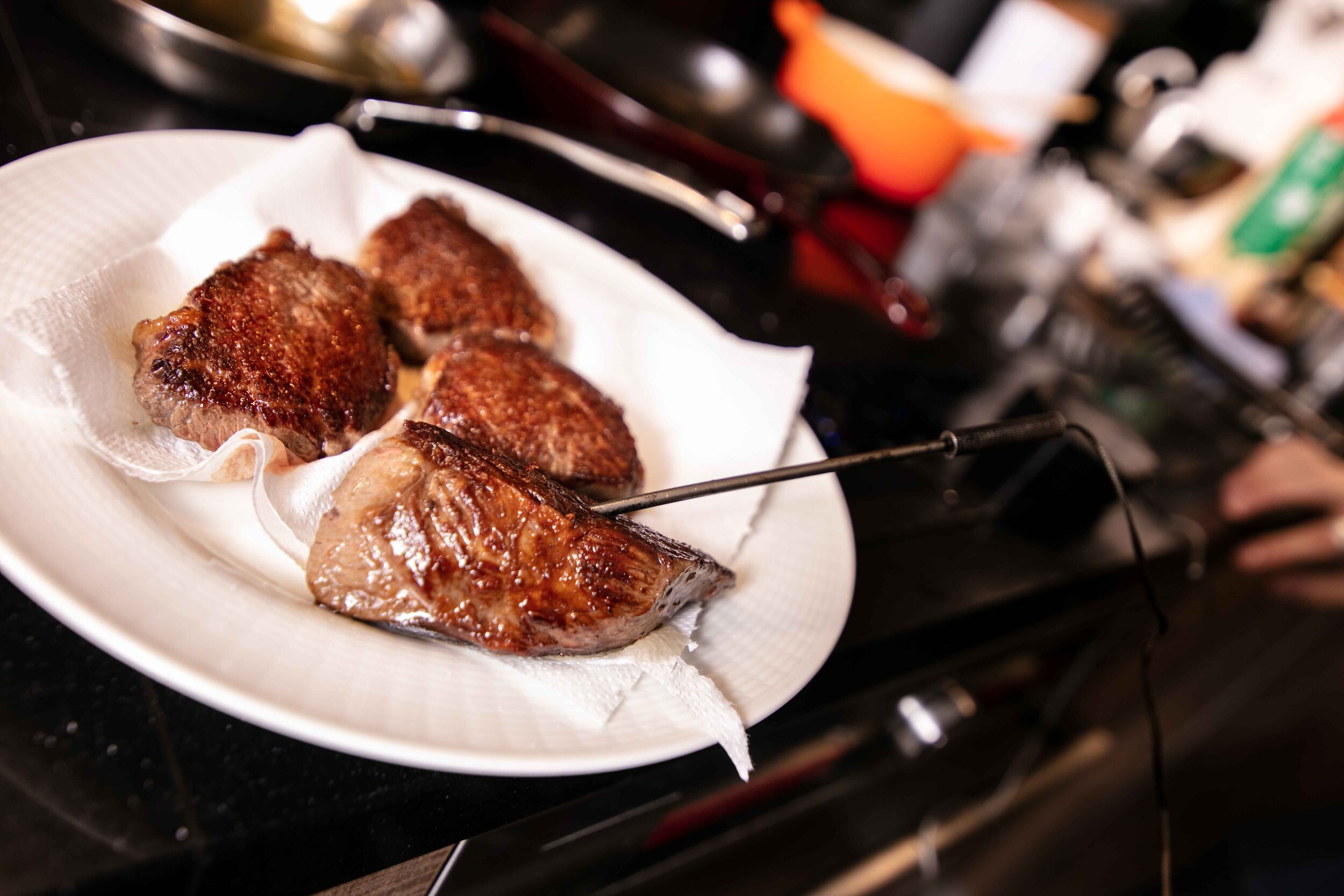
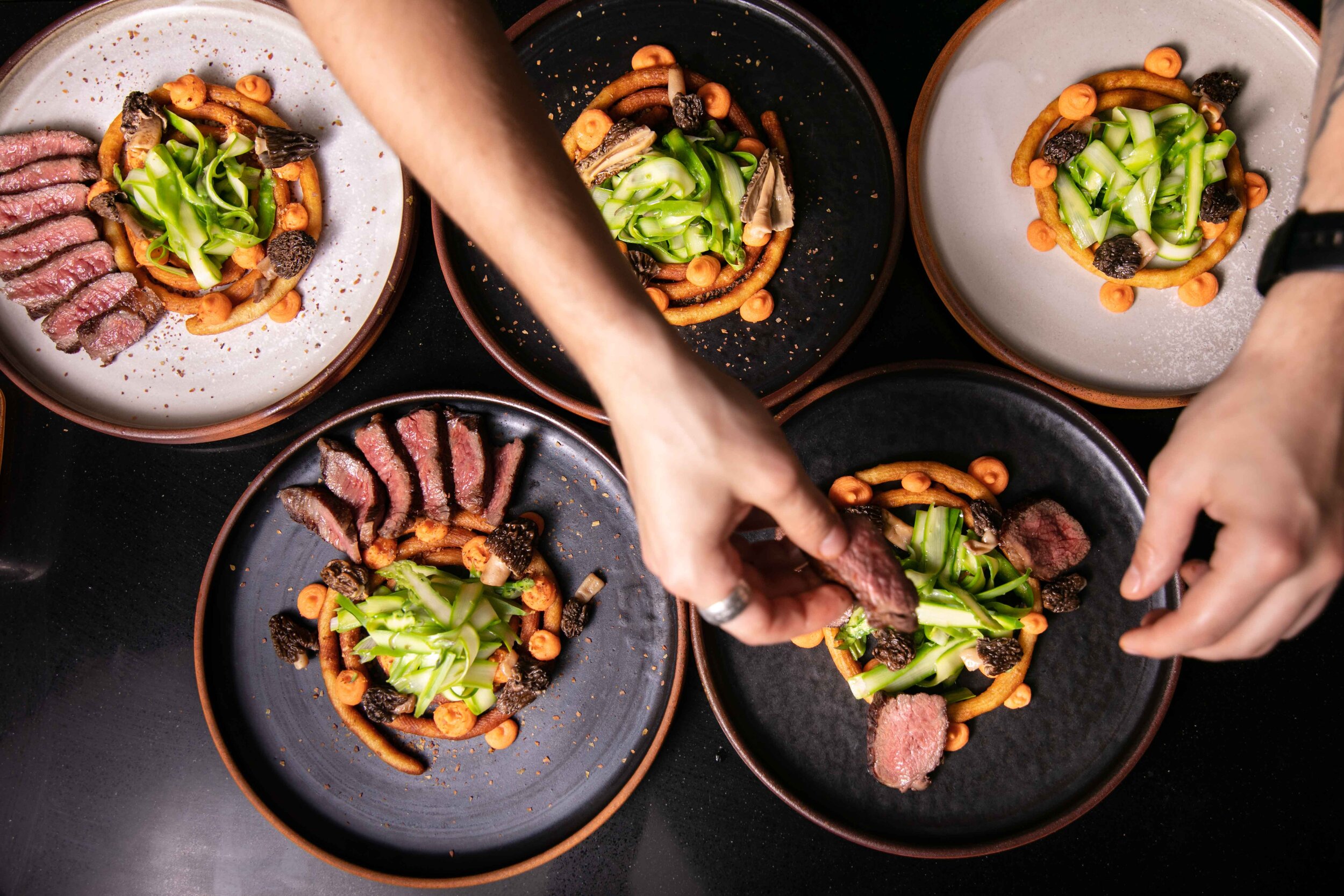
1. In a hot pan place a little oil.
2. When you see the oil slightly smoking, put in your steak (1 or 2 at a time, depending on the size of your pan and to not cool the pan too much).
3. As soon as you see a good caramelization on one side of your steak (and always remember that the time required is dependent upon the size of your steak!), flip it over and caramelize the other side. It is important to check the core temperature of your steak – this should ideally be exactly 48 C, however, the range from 47-50 C is acceptable to get a good, rare steak. If you would like a medium, then sear and leave in the oven for a little longer.
4. Once done, cover and set aside on a plate in the oven, alongside the churros.
5. Keep the butter/oil/fat in the pan for the finishing touches to the churros when plating.
Final Flourishes and Plating
With all that work preparing this dish, the finishing touches really need some attention to detail when plating.
Here are our tips for prep and plate:
1. Keep the oven preheated at 50 C so the churros and the steak can stay warm and soak up all rest before until plating.
2. Keep the plates warm in the oven as well – you will need warm plates for plating.
3. Once you have fried the churros place them in the oven to keep warm until plating.
4. Same goes for Morels, once cooked.
5. Warm up the potato mash and place it in a piping bag.
6. Mix the salad with the vinaigrette.
7. Warm up the sauce before plating.
Plating:
We recommend as much creativity while plating. Feel free to use our plating - the only thing matters is to achieve a balance between the separate elements that make up this superb main course.
1. Brush the churros spirals with the leftover brown butter used for the steak, then dust them with the potato powder. (Perhaps a sticky vinegar glaze can be use instead of butter) then place on your plate.
2. Squeeze some mash “florets” around the spiral churros, or wherever you prefer.
3. Place the rest of the elements on the plate – use your imagination and experiment!
4. Slice the steak just before you put it on the plate – remember to slice against the grain!
5. When all the elements and the steaks are on the plates, pour the sauce or serve it aside in a Soucier.
6. Enjoy it! (Do not forget to take some pictures of your masterpiece!)
[1] We recommend having your oven pre-heated to 50 C while prepping this whole recipe.
[2] In case you are interested, this is our favourite mandolin for several reasons and an important part of our kitchen equipment . We have gone for the easily replaceable cheaper, yet still robust, Kyocera: https://cutlery.kyocera.com/wide-adjustable-mandoline-slicer-black).
[3] We currently like this recipe; however, we will be doing a post on making good beef stock very soon! https://www.masterclass.com/articles/chef-thomas-kellers-veal-stock-recipe#tips-for-making-perfect-veal-stock

